
- Northern Circuit
- Western Breach
- Acclimatisation
- Packing List
- Climbing Cost
- Coronavirus
- Visa’s, Vaccinations, Malaria
- Kilimanjaro Blog
- Climb for Charity
- Get A Trek Quote

Best Time To Climb Kilimanjaro
Wondering when is the best time to climb Kilimanjaro?
It is possible to trek Kilimanjaro all-year-round. However, certain months are characterised by colder weather, more rain and potentially more snow on the summit. Deciding when to climb Kilimanjaro is an important decision that will impact your experience and even your chances of summit success.
In this article we provide a brief outline on the two trekking seasons that are considered the best time of year to reach this bucket-list summit!
Plan your Kilimanjaro trek
Get a quote from our recommended local kilimanjaro operator, kilimanjaro trekking months, when is the best time of year to climb kilimanjaro.
There are two distinct trekking seasons which constitute the best time to climb Kilimanjaro. They are January-March and June-October.
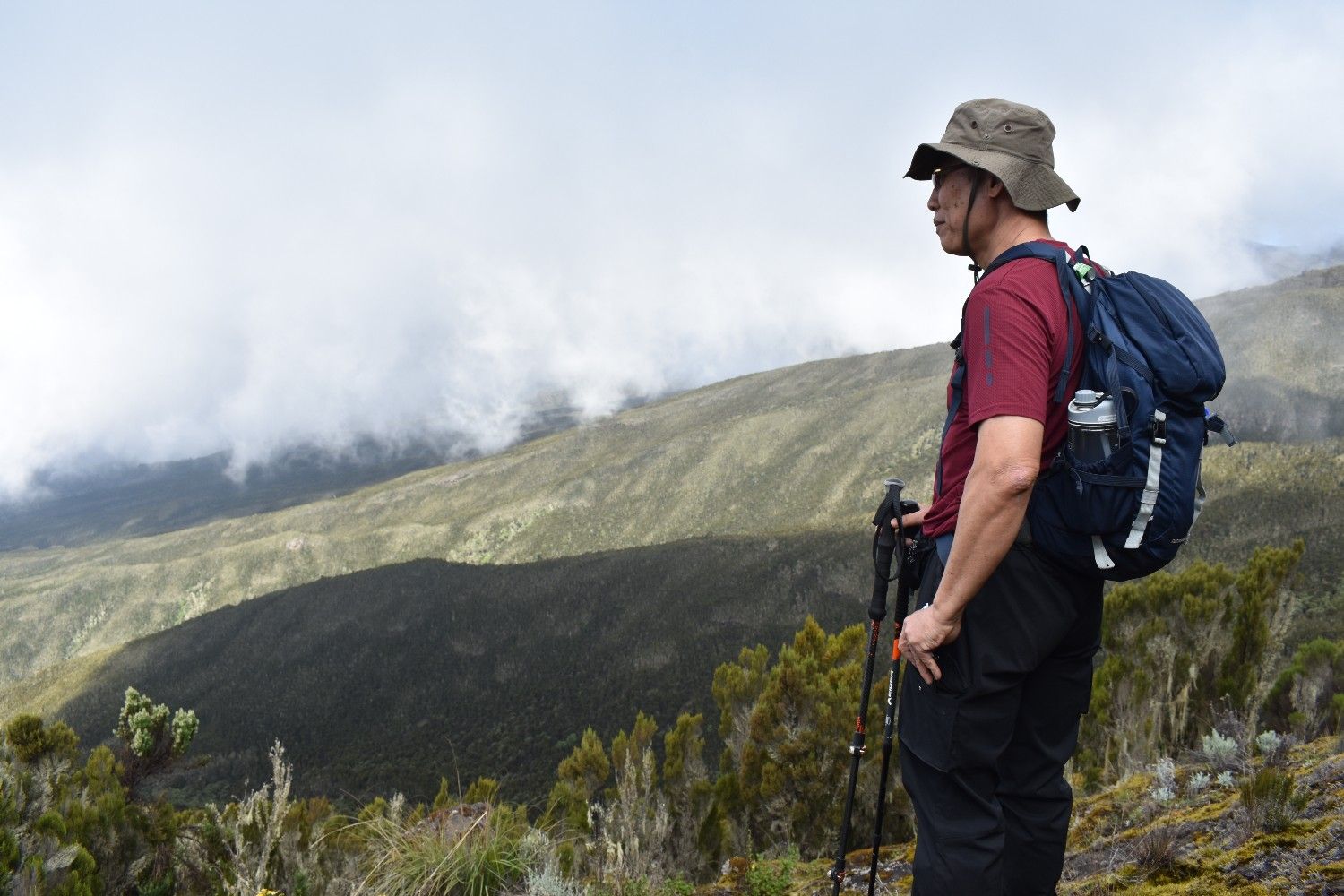
Choosing dates outside of the wet season on Kilimanjaro gives yourself the best chance of a dry hike.
January-March is generally colder than June-October and there is a higher probability of encountering snow on the summit. For some this might be seen as a negative but can actually add to the experience.
Another benefit of a January-March trek is that the slopes are often quieter at this time of the year. If you prefer less trekkers, this could be the best time to climb Kilimanjaro.
Note: When I say 'quieter' it doesn't mean that you will be the only group on the trail. The mountain is relatively busy year round, particularly on Machame and Lemosho routes which are the most popular.
The June-October trekking season coincides with the summer holidays in Europe and N. America and hence certain routes are often quite busy.
When Is NOT The Best Time To Climb Kilimanjaro?
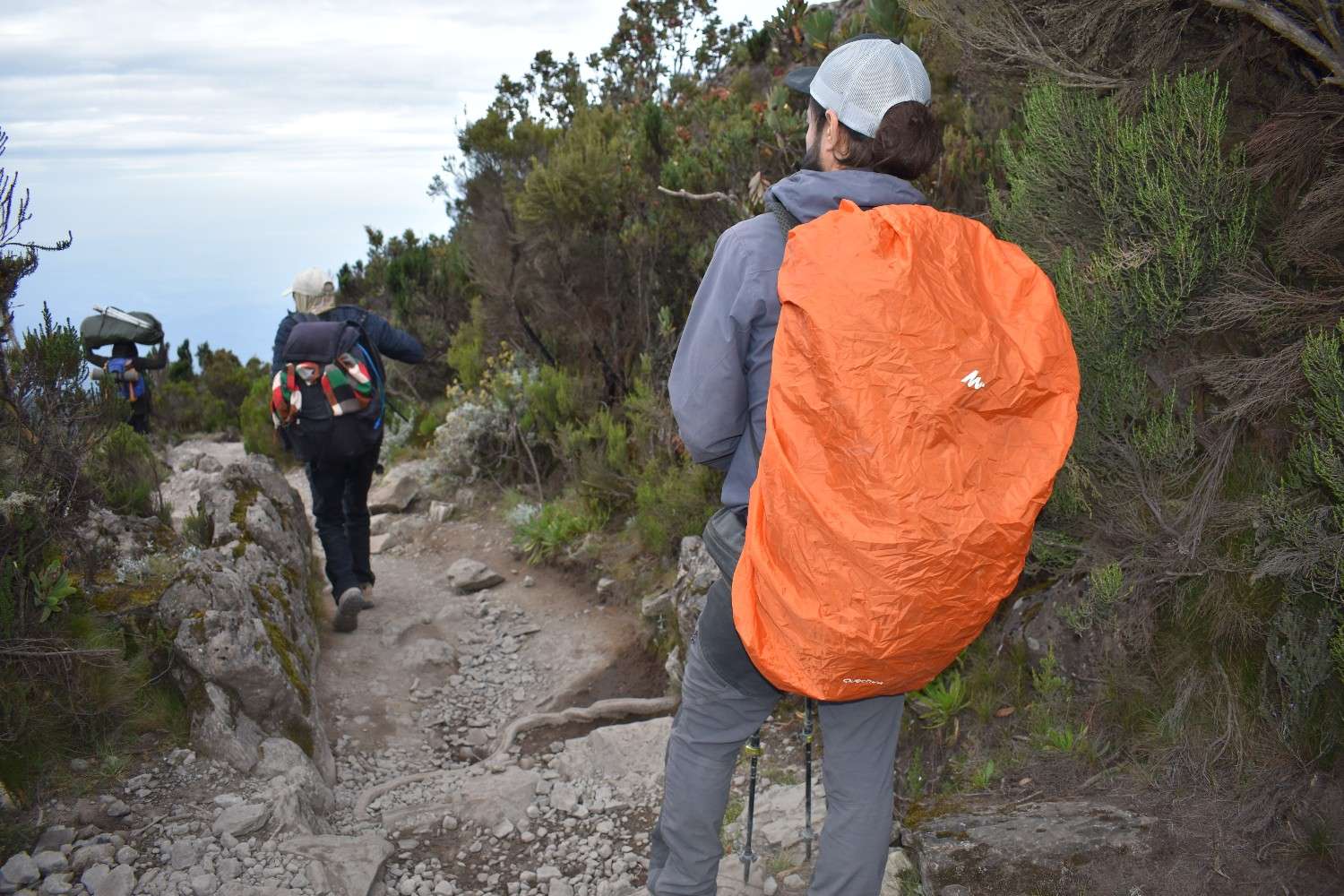
No matter what time of year you trek, you need to be prepared with a waterproof jacket, rain pants and a cover for your daypack.
March, April and November are the wettest months on Kilimanjaro, and not ideal of trekking.
If you are confined to a trekking date in April or May, I suggest you consider the Rongai route , which departs from the Northern end of Kilimanjaro and is generally drier than the southern route options during these months.
Snow fall and cold temperatures are common during December-May.
The chart below shows average snowfall in cm on the summit of Kilimanjaro
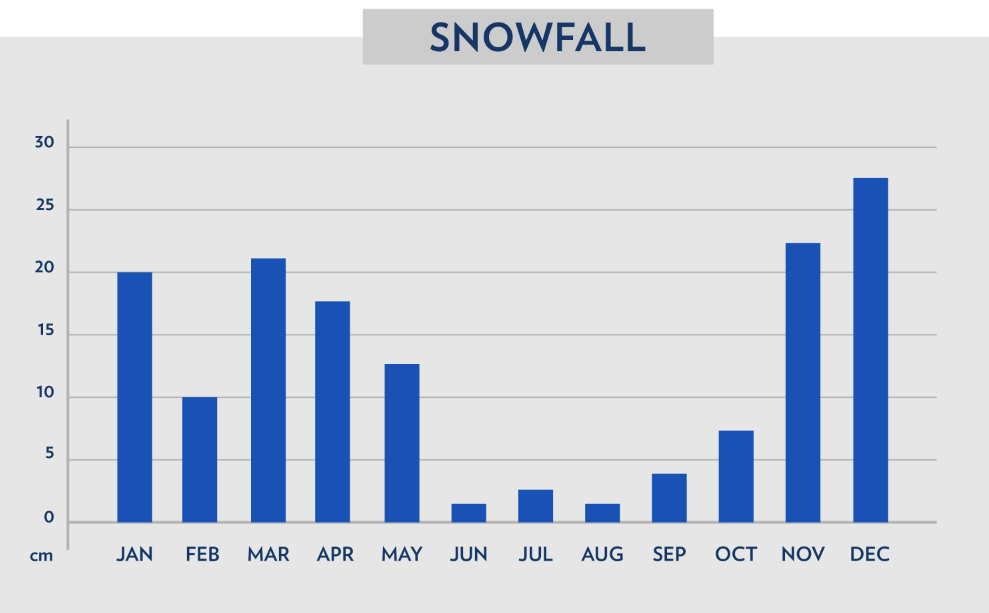
Winds and Kilimanjaro Weather
Kilimanjaro’s weather is heavily influenced by the interaction of trade winds with the structure of the mountain.
The South-east trade winds travelling over the Indian Ocean carry loads of moisture. When they hit Kilimanjaro, around March, then are forced upwards where they condense, form clouds and precipitation. This means March through to May is the wettest season on Kilimanjaro. The southern slopes are particular susceptible to rain during this time in the year.
Anti-trade winds from the North-east carry very little moisture but blow strongly. The strength of these winds which last from April through to October keep the South-east trade winds below them, hence these months are usually dry and cloud cover and precipitation is generally restricted to the lower slopes.

Kilimanjaro Altitude and Climate Zones
Another factor that is important to consider is the variation in weather conditions as you ascend Kilimanjaro.
There are four distinct climatic zones on Kilimanjaro .
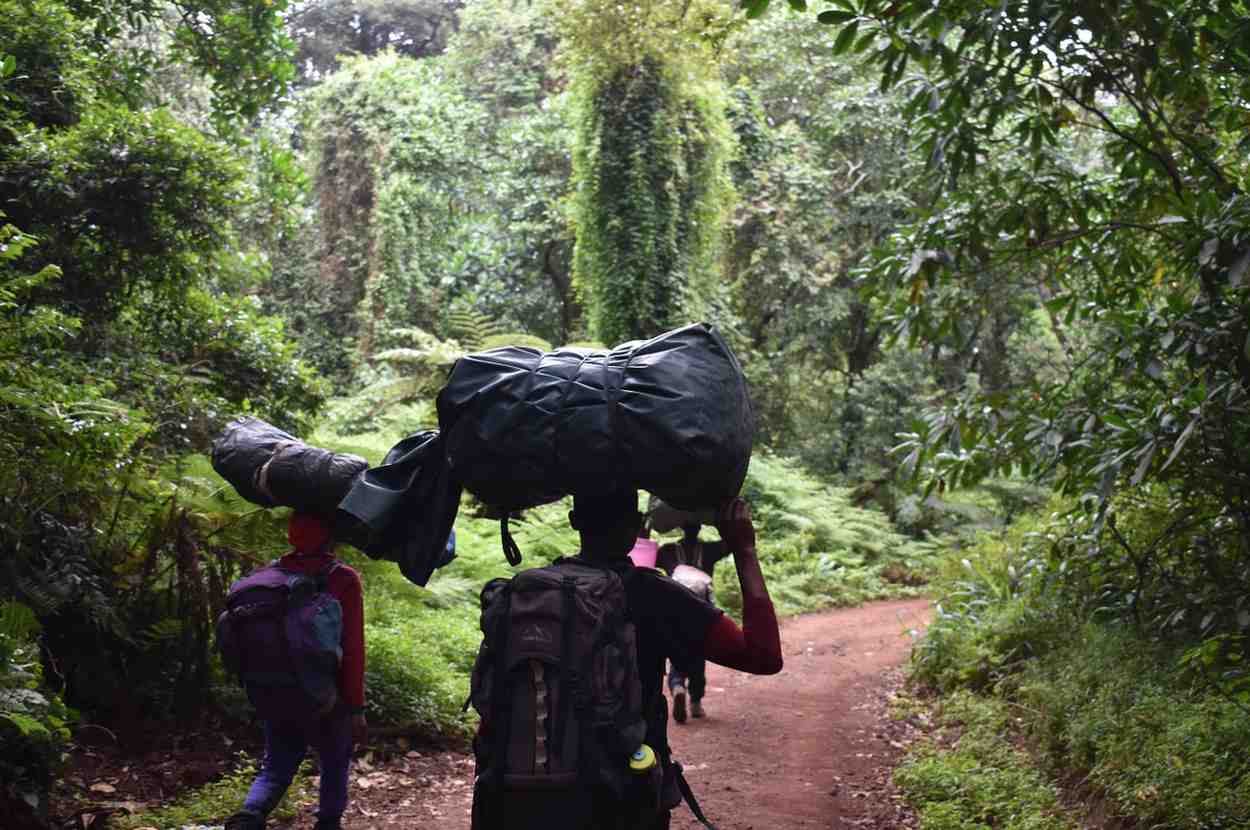
The rainforest zone of Kilimanjaro is the lower parts of the mountain covered in tall, green jungle-like vegetation.
- The rainforest zone (~800m-3,000m) is warm and humid. Rain is common in the zone, particularly during the wet season and temperatures average around 12-15 degrees Celsius at 2,870m.
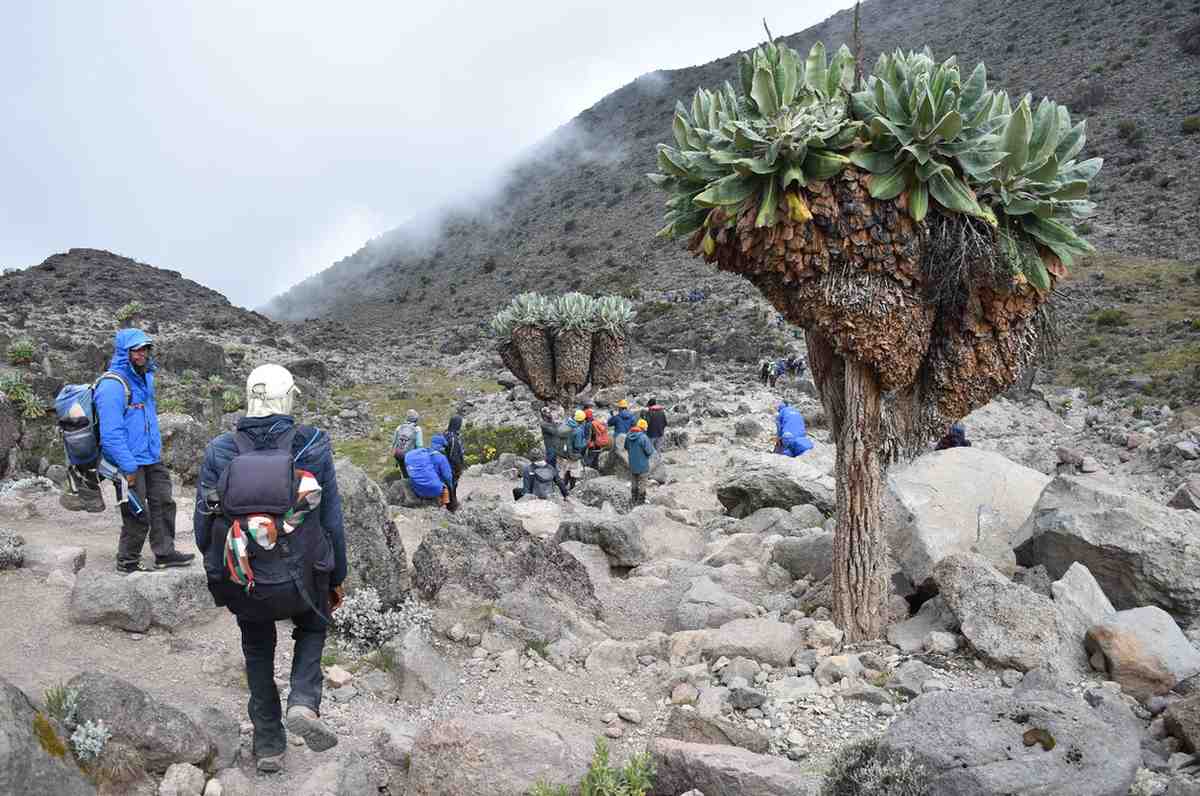
Hiking through the scenic canyon just before reaching Barranco Camp. This altitude falls in the low alpine zone.
- The second zone is often called the low alpine area (~3,000m-4,200m) and is a semi-arid zone where average temperatures range between 5-10 degrees Celsius at 3,630m.
- The high alpine zone (4,200m-5,000) is desert-like. Here temperatures average around the freezing point at 4,970m, and
- At the summit in the glacial zone (above 5,000m) temperatures average around -6 degrees Celsius.
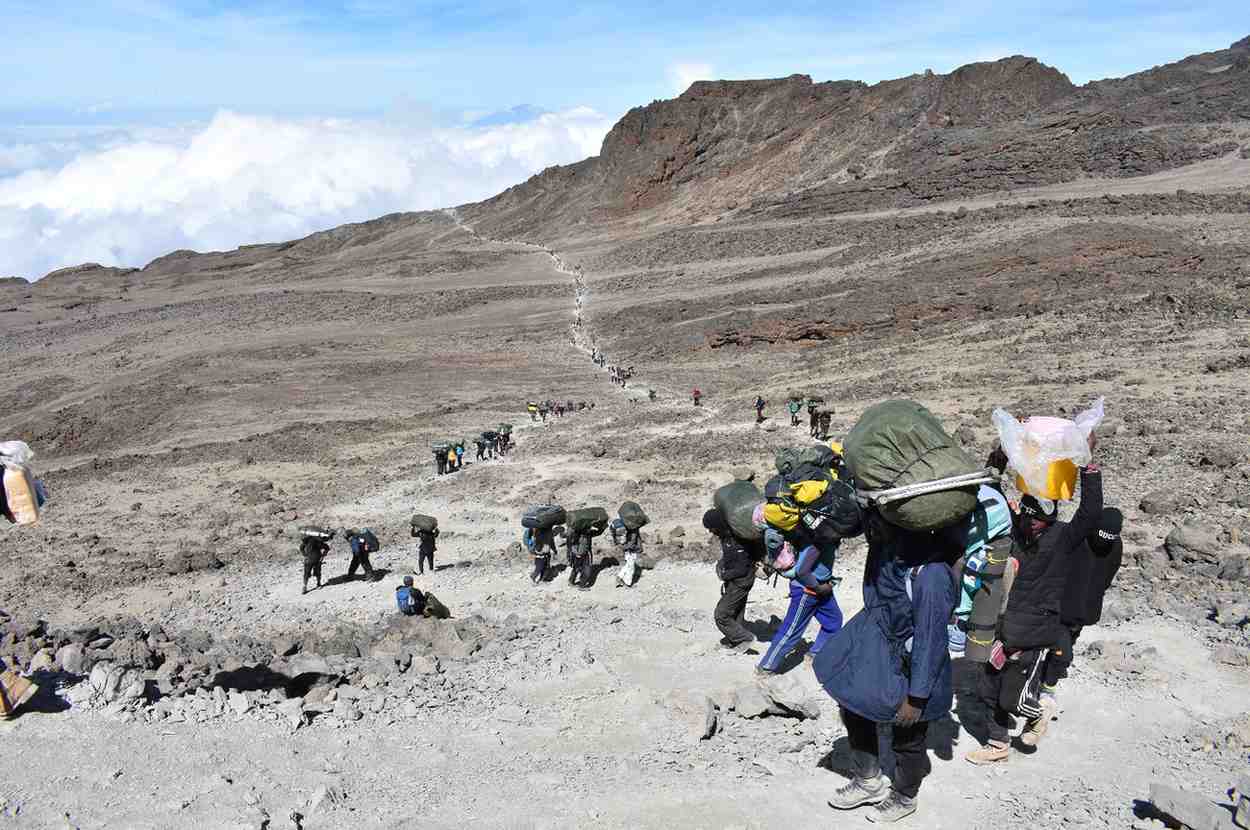
The high alpine zone of the mountain is barren and rocky. During my last climb in February, we were blasted by insane winds at the top two camps and summit.
Although the summit temperature doesn’t sound too cold, wind chill is a major factor. You are almost guaranteed relatively high winds.
Moreover, the effects of cold temperatures at high altitude are more pronounced as your body expends more effort trying to get your skin and vital organs well-oxygenated in an oxygen depleted environment .
This results in vasoconstriction near the extremities (like your hands, feet and nose) and means that you will feel the cold a lot more at high altitude. In other words -6 degrees Celsius can feel like -20!
The chart below shows average monthly temperatures at four points across the climate zones.
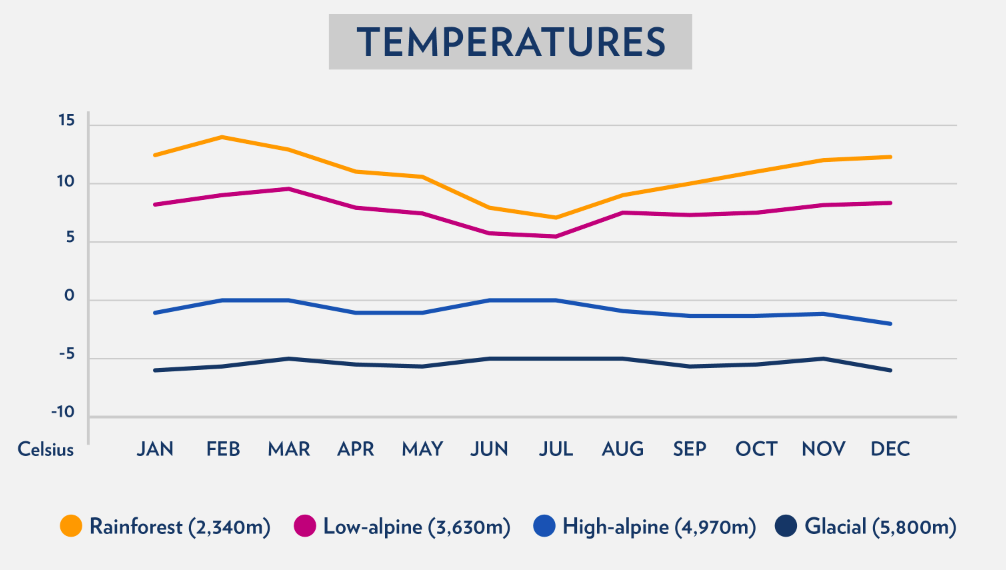
Average Kilimanjaro temperatures (Celsius) as measured at certain altitudes within the 4 climatic zones
See here for detailed information on Kilimanjaro weather .
Still have questions on the best time to climb Kilimanjaro. Leave us a comment below and we will respond within 24hours.
Other Kilimanjaro guides :
- Guide to training for Kilimanjaro
- Guide on Kilimanjaro summit success rates
- Guide on what to pack for Kilimanjaro
- Amazing Mt Kilimanjaro facts
- How much does it cost to climb Kilimanjaro
- What Kilimanjaro insurance do I need
Mark Whitman
Hi, I'm Mark! Welcome to Climb Kilimanjaro Guide - the Web's No.1 Trekking Guide to Mount Kilimanjaro. This site is your one stop shop for everything Kilimanjaro. To date over 5 million people have visited Climb Kilimanjaro Guide, many of which have gone on to summit Kili! I hope you find all the answers you are looking for, but if you have any questions don't hesitate to drop a comment below!
Leave a Reply
Your email address will not be published. Required fields are marked
Name * * * * *
Email * * * * *
Im trying to decide weather to climb February or March, would you say Feb would be better as there may be less snow and rain?
The route I was thinking was the Machame ?
thanks so much
Hi Jayne, You are less likely to encounter rain on the lower slopes in February as opposed to March. However, there could be more snow on the summit in February. Good thing is the Machame route is quieter in these months, than during the peak season June-September.
Hello, We are thinking about climbing the last week of May. We are concerned about the amount of rain/cold temperatures. Do many people choose to climb during this time or is the potential for rain a major drawback?
Hi Jay, most people elect to miss the April / May rainy season as it came be very hit and miss. I would say if you can push your dates a few weeks forward to June, that would give you a better chance of better weather. All the best!
We are climbing kilimanjaro from dec 11 to dec 18, expecting to summit on dec 17. The weather forecasts seem to suggest that there will be lots of snow on the summit. In your experience is it advisable for us to bring our crampons or are they just going to be superfluous weight?
I’m climbing Kili in beginning in march 2017 via Marangu route. We are sliping in huts.What sleeping bag is recommended?
Hi Karol, It still get’s freezing cold in the huts. You need a four season sleeping bag. Cheers!
We are climbing Kilimanjaro from 14th January 2017. Planned summit day on 19th January 2017.
What is weather conditions during these times? Please guide.
Sudhir Khot
Hi Sudhir, thanks for getting in touch. Check out this article and at the bottom is a link to historical and current forecasts: https://www.climbkilimanjaroguide.com/kilimanjaro-weather/
Hi, After reading all posts, I am planning to climb Kili in June or July 2017. As per your previous answers it would be a busy season with the best weather. My questions to you are: What are other downfalls of busy season and which track would you recommend in the month of June/July ? For price wise is it climb in Sept-Oct much better than June-July (Since we will have a big group) ? I am in the beginning phase of planning so I can modify my plans.Thanks in advance.
The main downside of the peak season is that there are more people on the mountain. The busiest routes are the Marangu and the Machame. I would recommend looking at the Lemosho and the Rongai routes – the former joins the Machame on day 3/4 but have a relatively remote start. The cost of the climb should not vary from June / July to Sept / Oct. All the best!!
Hi I recieved a trip to kilimanjaro for my bday (lucky guy) but it is the beginning of may is this peak time or bad weather ?
Hi Eddie, May is the rainy season. You might be okay but expect rain on the lower slopes and lots of cloud cover. Good news is that the mountain is a lot quieter.
Hello, We are hoping to avoid the crowded months, so we are considering climbing in either early October or in early February. Which routes would you recommend for October, and which would you recommend for February? Thank you for the advice!
Hi Meg, The Southern routes via the Machame and Lemosho are great for both October and March. All the best!
Hi, I am planning to climb Kili in the midst of June, which route would you suggest. And what should I carry with me.
Hi Yuga, I recommend the 8 day Lemosho or 7 day Machame. In terms of gear please see: https://www.climbkilimanjaroguide.com/kilimanjaro-kit-list/
Hi there – taking everything into account (temperature, snow, crowd, etc.) which month would you recommend to climb?
Hi Don, I recommend July-October as the best months weather-wise. All the best!
Wow thanks,, found the answer of my question.
Hi my name Hamed Al Bar I live in Saudi Arabia , I would like to climb Kili mountain within this two months April , May , I need your help
Thank you in advance need your support to climb the mountain of kliminjaro
Hi, I am looking to complete the Lemosho Route but having a hard time deciding when to go. I would love to be able to experience snow on the summit. I can be pretty flexible when I go so I would love to experience this route at its best!
Hi Michelle, snow on the summit is no guarantee but the most likely period to have snow under foot is from December through to March. Lemosho route is great, hope you have a ball!
We’re planning a year long trip through 3 continents (Africa, SE Asia, and South America), and Kilimanjaro is on our top bucket list.
It looks like Sept/Oct seems to have the very best weather – would you agree with this? When you say its crowded – how crowded to you mean? Difficult to hike because there are so many people, or bearable? We can be very very flexible.
Hi Maggie, Sep/Oct us a great time to climb Kilimanjaro. Crowded is probably the wrong word, it is just busier at this time of year, particularly August and September, than other parts of the year. All the best for your trip – sounds awesome!
I am At the beginning stages of planning my climb. What month out of the whole year do you recommend I make my climb?
August through to October is generally a great time to climb Kilimanjaro. All the best!
I’m not a hiker but I want to climb Kilimanjaro. What is your recommendation
Do it! You don’t need to be an experienced hiker to climb Kilimanjaro. You do need to be fit and determined though. Best months are June-October and January-March. All the best!
Considering trekking Kili mid-December.
I expect snow and colder temperatures but what is visibility like? Is it still an OK time to trek if you’re OK with snow and colder temps?
I trekked Everest Base Camp in December and it was fantastic (although cold).
Hi James, yeah, climbing Kilimanjaro in December is absolutely fine. You may experience snow and slightly colder conditions, but visibility is usually fine. All the best!
Exactly the answer I am looking for because I am planning to celebrate Christmas at Kilimanjaro next year
Hi, How is the visibility on Kilimanjaru in October? Thanks
Hi Ramin, that’s a difficult question to answer as there are so many variables, but generally October is a good month to trek Kilimanjaro.
My husband and I are trying to decide between Lemosho and Rongai for our mid-March climb. We’re flexible with level of difficulty and would probably prioritize scenery and solitude. Which would you choose? Thank you!
That’s a touch one Kimberly. Both offer great scenery and solitude. Admittedly the Lemosho gets busy once it joins with the Machame. Personally I prefer the Lemosho as it has a great acclimitisation profile (8 day version) and a better summit ascent approach. Hope this helps!
Which route is best in July/August?
Hi Eve, all the Southern Circuit routes are good in July / August. I recommend the 7 day Machame or 8 day Lemosho. Cheers!
We are planning to climb in the last week of Dec? How would be the weather? would there be lot of snow? Do we need crampons?
Hi Rituparna, December tends to be a little colder at night and during the early mornings. Temperatures during the day can be quite warm and temperate low down the mountain. But as you get above the cloud cover it can also be relatively fresh during the day. There is a higher probability of snow at or near the summit in December, but generally crampons are not required. It may be worthwhile taking yak-traks, but as I said generally these won’t be required. All the best!
Hi Mark We’re planning to go January 2019 what kit would you recommend we took? Regards
Hi Lisa, here is a detailed packing list. This list applies all year round: https://www.climbkilimanjaroguide.com/kilimanjaro-kit-list/
Thanks for your site and all the info that you provide 🙂
I’m the early stages of starting to plan our family trip to TANZANIA and consecutive Kilimanjaro climb, and from what I could read, mid September seems to be a great option in terms of weather forecast to do the climb, but in your opinion what would be the best time to combine a few days before the climb doing a photo/video safari and after the climb to go for few extra days in Zanzibar. Early June after the main rainy season ends or in the mid September…
Besides that my other question is: Do you know anyone that climbed Kilimanjaro with a DOG? My Border Collie travels everywhere with us and is used to do a lot of hikings (to like this one) and a lot other activities (Rappel, Slide, Paragliding, Canyoning, snorkling, etc, etc…)
Hi Pedro, Glad you are finding the site useful! Mid September is a great time for all the activities you want to do – i.e. Safari, Climb Kilimanjaro and Zanzibar. This period is also just after the Summer holidays in Europe so the mountain trails are a little quieter. In terms of taking a dog with you, I haven’t heard of anyone doing this, but I suspect it has been done and is possible. My suggestion would be to contact Kilimanjaro National Park http://www.tanzaniaparks.go.tz/index.php?option=com_content&view=article&id=31&Itemid=106 to see if they have any specific regulations / advice on taking a dog. All the best!
Due to timing constraints, I will be planning my trip to Kilimanjaro in April. I understand this is the rainy season. Given that, is there a route that is best suited for an April Trek?
H Steven, The Rongai route, approaching from the North is probably your best bet. In tends to have less rain during April and May, then the standard Southern circuit routes. All the best!
I’m climbing Kilimanjaro with a group in the very beginning of June. We are all in our Mid-20’s to Early 30’s, but little to no experience of climbing, especially something of this size. Any recommendation on which route to take with scenic views but beginner to intermediate level of difficulty? Thank you!
Hi Tom, without a doubt I would go for the 8 day Lemosho or 7 day Machame. Both have great route profiles for acclimatisation and are very scenic. The Lemosho is a little quieter for the first 3 days on the trail. Hope this helps and all the best!
I am a 70 year old male who likes to climb Kili. Because of my age i like a private tour to the top. What is the best time of the year and what are the costs?
Hi Robert, Great to hear that you are thinking of climbing Kilimanjaro. The best time is between mid June and mid October. Costs range depending on the route you take, type of tour operator and whether you do it as a private climb vs. joining an open group. A private trek as a solo is a lot more expensive than a group tour. I recommend using our tour operator recommendation service to get a quote: https://www.machupicchutrek.net/go/
Reading the narrative, it states that January – March is generally colder than June – October but looking at the chart of average monthly temperatures, it appears that the average temps in the rainforest and low alpine zones are higher in Jan. – March (12-14c in rainforest; 8-10c in low alpine) than it is in May – August (7 -10c in rainforest; 5 -7c in low alpine). Am I reading that correctly? Not that it’s a huge difference but I’m confused as it’s supposed to be COLDER Jan – March. Thank you.
Hi Candace, That is correct, the difference is not significant, but there tends to be more moisture / humidity in Jan-Mar, hence slightly warmer temperatures. However, as you get higher up the mountain, the average temperatures in Jan-Mar are colder than Jun-Oct. Hope this helps!
Due my schedule constraints, I can only climb either before April 1st or after. Your website indicated that April isn’t a good season. Would last week of March be the same too?
Hi Shane, it’s difficult to predict the exact beginning of the rainy season (April-May), so late March could be fine, but then again you could experience some rain. You may want to consider the Rongai route from the North as this side of Kilimanjaro tends to be drier over the rainy season.
I’m a 45 yr old lady who only walks dogs for exercise and have been ‘treated’ to a trek up Killy in September by my not so better half, will I need to hit the gym hard to get fit enough in time?
Hi Kezzer, what a “thoughtful” gift from your other half, ha! I recommend reading our training guide for help: https://www.climbkilimanjaroguide.com/training-to-climb-kilimanjaro/
Leaving Atlanta, GA. What country is better to fly into in order to be close to Kilimanjaro..don’t like cold weather ..what’s the BEST MONTH..thank you
To get to Kilimanjaro you need to fly to Kilimanjaro National airport in Tanzania, see here for details: https://www.climbkilimanjaroguide.com/cheap-flights-to-kilimanjaro/
Hi am wanting to climb June to October. Which is the best route Thanks Di
Hi Di, I recommend the 8 day Lemosho or 7 day Machame route. All the best!
I want to claim Kilimanjaro. Looking for hide. And price
Hi Abdul, not sure what you are looking for, but we are not a tour operator. We can connect you with our recommended partner, click here to get a quote: https://www.climbkilimanjaroguide.com/go/
I am trying to decide between late September and Early to mid-October. Any difference? Cheers, Susanne
HI Susanne, there is not a significant difference. Generally this period is good for hiking Kilimanjaro. Of course weather is incredibly variable on a big mountain like Kilimanjaro so you may get lucky with an amazing weak or you may get more inclement weather.
Hi Mark, Unfortunately I cant climb in the peak trekking season, so only have Feb, March or May to climb. If I was to climb in Feb when there is less snow, what would be the best route to take? Would this be the same for early March?
Hi Peter, I would recommend the Lemosho or Machame route for both February and March. I would avoid May as this is the raining season. Please note: you are more likely to encounter snow at and near the summit in January and February. Cheers!
Hello, my daughter and I wish to climb the Lemoshu Route up Kili in late Dec 2018. After reading comments, would it be better to push the date out into January for more mild temperatures? Thank you.
Hi Lee, you can expect very similar weather in late Dec and into January, so I don’t think it is worthwhile moving your date. Generally these months are a little colder high up on the mountain and there will likely be snow cover on the upper reaches and at the summit. Weather is however so variable on the mountain that it is impossible to predict with some certainty the conditions until a week or so before your travel date.
Hello, I am in the early stages of planning and was originally looking to climb in early November, which is the earliest I can climb with my work schedule. Is it completely out of the question to go on a guided climb at that time? Thanks for your feedback
Hi Ron, not at all. Although November can see some rain, it is still possible to hike Kilimanjaro at this time of the year. You may want to look at the northern approach via the Rongai Route. All the best!
Hello, I am planning on trekking Mt. Kili in September. It seems like Lemosho trail goes thru Barrnaco area. Given Barranco wallreally scares me, what are the best routes for me? Thanks so much for any input. Ewa.
Hi Ewa, all the southern Circuit routes need to go over Barranco. It looks a lot scary than it actually is. In reality it is just a scramble and there are no serious exposures. If you definitely don’t want to do the Barranco wall then you could do the Rongai route, Northern Circuit or the Marangu route. Hope this helps.
MW, First thing, thank you so much for hosting this site. My question may seem dumb to others but where I have hiked and where I come from we carry our own gear always or we don’t go. It has nothing to do with money. In fact I don’t even mind paying the Porter and of course the guide for their time in going. I just feel Better if I carry my own gear. Please advise Thx, L
Hi Lorenzo, totally understand your point, I’m one for carrying my own gear too. Unfortunately, Kilimanjaro is almost always operated as a portered trek. You could check with a tour operator if they would allow you to carry all of your own gear. I suspect many will allow you to do this. All the best!
Great information. I was thinking of starting the climb on Dec. 29 because the timing is convenient but I see there is quite a bit of snowfall in December and January. Is the trekking much harder with the snow on the ground and does the snow make summiting less likely? A lot less likely? I’m wondering how much more risky it is to do this in early January, as I would very much want to summit.
Hi Mike, yes, it can snow quite a bit in December / January, but this doesn’t make the summit push significantly more challenging as the last push for the summit is a slow slog, snow or no snow. Of course a massive dump of snow is potentially dangerous and can thwart a summit attempt, but it is not very common to get a major snow dump. Many people summit during these months and the snow can make the experience particularly beautiful. Hope this helps!
hi, we are planning to climb in february but concerned of snow conditions on the summit trail, how often are the chances of cancellation of the summit hike if there is lot of snow and do we need crampons. also we recently did the everest base camp and kalapathar last month and inca trail last year and we are planning for lemosho route , do you suggest 7 day or 8 day . thanks
Hi Anurupa, cancellation due to snow is not very common. As a precaution I would bring yak tracks (not full crampons). It’s unlikely that you will need them but better safe than sorry. In terms of the 7 or 8 day Lemosho, I prefer the latter as it breaks the final push to the summit into two days – between Karanga – Barafu and the summit. Hope this helps!
We are planning to climb the Kilimanjaro in October. In the past, we walked the Inca Trail, Rinjani in Indonesia and some other similar hikes. What route do you recommend, taking into accout weather and our “experience”?
Great website, thanks in advance!
Hi Maud, my two favourite and recommend routes are the 7 day Machame or 8 day Lemosho. Both are super scenic and offer good acclimatisation.
I would like to take a 10-day hike up Lemosho with my 32-year old son and 31-year old daughter. Can anyone recommend the best time of year for this hike? I’d like to avoid heavy crowds, so I’m thinking September, but I would welcome any advice/comments/suggestions. Thank you!
Hi Amory, the first few days on the Lemosho are relatively quiet, but the trail gets busier after it joins the southern circuit routes, like the Machame. Sepetember is still relatively busy, but does get quieter towards the end of the month and into October. Alternatively January-March are quieter months as well.
Hi Mark, I’m planing to climb Kilimanjaro through Marangu route on December 21-28, 2018. How the snow is going to be on the summit at this time? I’m 55 and in good shape but do you have special advices for my age? Thx bro. Yasser
Hi Yasser, It is quite likely that there will be snow on and near the summit in December. Personally I think this makes the experience more authentic and fun. My best advice is to go slow, drink lots of water, try eat healthily and take one step at a time on summit night! Enjoy
Hi, I’m looking at a trip next year in March most likely, but have not heard any info on the Umbwe track which is the trail I am looking at doing. I have seen some descriptions relating to it being the best if you can handle the steep ascent but nothing else. Is this the case? Cheers Jason
Hi Jason, the Umbwe is not a very popular route as it provides limited possibilities to properly acclimatise. The route is very direct and is often used in conjunction with the Western Breach for speed ascents. It is not particularly steep, but the rapid ascent profile means that the risk of altitude sickness is higher. If you have more time I would recommend a route like the 7 day Machame or 8 day Lemosho that meanders more and gives hikers more time to acclimatise.
Hi Mark, Looking to trek Rongai route and also want good beach weather. Is there a difference between October or November months? thanks!
October tends to be drier than November on Kilimanjaro. It’s also a good time to visit Zanzibar.
Thank you very much for the introduction! We are wondering whether we should climb it from Dec 14-20, or Jan 01-07. Based on your graph it seems Jan would be better in terms of weather than Dec. Is that always the case? Thanks!
Hi David, on average, December sees more snow. But weather can vary quite dramatically from week to week and year to year. I would choose the most convenient week for yourselves as the variation of weather a few weeks apart is really difficult to predict. All the best!
How is the weather for the climb during mid to end December . Thanks
Hi Tahiti, generally thee is quite a bit of snow in December so you can expect a snowy summit. The weather is a little colder during December than the rest of the year so make sure you have lots of good quality layers. https://www.climbkilimanjaroguide.com/kilimanjaro-kit-list/kilimanjaro-clothing/
I hike Kilimanjaro in September and it was awesome weather!! It was little busy but still super amazing ⛰
A bunch of us are planning to climb in June / July / August. How soon do you think we need to start reserving our spots? Are there permit requirements and if yes, how are these issued (daily numbers or yearly). Do tour groups take care of these permit requirements for us when we reserve spots with them?
Hi Shreya, yes, Kilimanjaro national park requires permits. These are arranged by your tour company as part of the total climb cost. There aren’t restrictions on the number of permits but it is worth booking early to ensure you have enough time to plan your trip and do some training!
Hello, I’d like an advice on the best time to climb to the summit. I live in Nigeria and I can handle a bit of cold (nothing less than 5 degrees at most). What’s your advice?
Hi Wura, the temperatures near the summit of Kilimanjaro frequently get as low as -10 degrees Celsius and can feel even colder if the wind is strong. The best time to hike is June-October. December, January and February are the coldest months. April and May are the rainy. Hope this helps!
I plan on climbing the second week of February of 2019. I’m going with mMountain Madness and experienced and very highly recommended organization. My question:
Although a seasoned endurance athlete I do get cold extremities even in warmer climates. And I don’t carry a lot of body fat.
What can I do to maximize warmth and keep my self from getting cold on this hike? Thank you
Hi Peter, in terms of your extremities I recommend taking 1 x pair of medium to heavy thermal socks from Smartwool or Icebreaker. These you will use on summit night. For your hands I recommend using a combination of inner merino wool gloves with warm outer gloves. Some people use insole foot and hand warmers too – check out Hothands . You will also want to take a warm beanie and a polar fleece Buff . Hope this helps!
I am a first time climber and first time solo traveller and would love to join another group to climb Kilimanjaro in 2019. Please add me on Facebook… KevinJackKeogh
I would like to climb mid June, will it still be freezing near the top, or will it be a range of temperatures going up? t-shirt weather to start?
Hi Nadine, June is a good time to trek Kilimanjaro. T-shirt weather is not uncommon on the first day – unless it rains of course. The summit is cold all year round and you will need adequate gear and a layered clothing system. Here is more information on Kilimanjaro’s weather: https://www.climbkilimanjaroguide.com/kilimanjaro-weather/
Hi I am thinking of climbing Kilimanjaro in August this year – which would be the best route to take? I also want to tag on 2 weeks of safari with my two daughters – do you have recommendations at all?
Hi Michelle, I recommend the 7 day Machame ( https://www.climbkilimanjaroguide.com/machame-route/ ) or 8 day Lemosho ( https://www.climbkilimanjaroguide.com/lemosho-route/ )
Got a group of 5 friends and Family planning to climb in August 2020 – Ages around 40 to 50 with 4/5 not being athletic but resolved to putting in some effort to get in shape by then! (Round is a shape too, right ? LOL) I know it is peak season but question is, what route would you recommend for a non-athletic group to maximize chances to summit ?
Thanks a lot!
Hi Charles, nothing wrong with a round shape, ha! I recommend the 7 day Machame ( https://www.climbkilimanjaroguide.com/machame-route/ ) or 8 day Lemosho ( https://www.climbkilimanjaroguide.com/lemosho-route/ ), both are great for acclimatisation and have high summit success rates.
I’m a lady in my late 50’s. I am going to manage to climb Kili? I’m concerned about the “wall” and I’ve heard some spots are very steep in the Machame route. I have read so much conflicting info. I am not an athlete but I’m not sedentary either. Thoughts?
Hi Kathy, many people in their late 50s have climbed Kilimanjaro so I’m confident you can do it too. The Barranco wall on the Southern Circuit (this is the route the Machame is on) can seem a little scary, but it doesn’t have any serious exposures and if you take your time and use all four limbs, you should be just fine. Here is an article which provides more detail: https://www.climbkilimanjaroguide.com/barranco-wall-mt-kilimanjaro/ . To give you inspiration check out: https://www.climbkilimanjaroguide.com/can-anyone-climb-mount-kilimanjaro/
Hi i want to climb kilimanjaro From 20 March to 26 March. is it good tim?
This is right on the shoulder month of the wet season, so you may experience rain. If you can move your dates forward a few weeks you will likely experience a little better weather.
Hi Everyone We are planning to climb Kili in June – July . In our team there is a 14 yr old girl (turning 15 in July) , a 18 yr old girl and a 66 yr old man. We were wondering if its still a good idea to climb it when we have only just decided to and havent started training yet. Regards Jess
Hi Jess, if you start training now you should all be god to go in June / July! Best of luck
What is the best month to climb kilamanjaro please ?
The best month is a difficult one to answer, but the best season is June through to October. January through to March is the second best season in terms of weather.
I’ve done Killi twice, both times were during February via Machame, unfortunately next year I only have June or August available. I noticed In the article above it says that it’s is warmer In June/July/August, I’m just wondering why that is since it’s winter in the Southern Hemisphere at that time? And also would like to know if we do the Lemosho route whether we need any additional equipment compared to Machame?
Thanks for the great article!
Tanzania has pretty stable ground temperatures all year round as it is so close to the equator, but it is on average cooler during the Winter months (June-August). This however inverts slightly as you increase in altitude. Meaning that as you get higher the temperatures in the Summer months (November-March) are actually cooler at the summit, hence there is more snow during this period. This has to do with the trade winds, and higher convective forces during the Summer.
In terms of the Lemosho vs Machame, there is no additional equipment requirements.
All the best,
It seems that once it is September that there would not be as many people who have summer break. In that case is it better to climb as early in September as possible?
Hi Elaine, yes, the trails do start to get quieter in September. But many trekkers are backpackers etc who aren’t restricted to the Summer break holidays. This means that September can still be busy. The shoulder month of October is quieter.
Hi I’m getting conflicting information from different sites hopefully you can clear it up for me. I’m planning on going on the Lemosho Route I’m flexible as to when I go. I can go anytime, I’d like to go when there are no crowds, less chance of rain and snow. I was thinking February or September. Out of all the months in the year which one would you suggest? Thank you
Hi Jose, February is a quieter time of year, but there is a higher chance of rain and snow than September. Personally I would choose late September / early October for a good shot a stable weather and relatively quiet slopes. All the best!
Hi! There are very young climbers in our group. How young is too young? We are all very active and in good health. Thanks!
Phillippa, the minimum age for Kilimanjaro is 10 years old. If the kids are younger you will need to get a special permit.
Hi! we were thinking to climb Kili on sep/october.Which route do you recommend? Is it cold during this period?
Hi Alma, yes, September / October is a great time to climb Kilimanjaro. I recommend the 7 day Machame or 8 da Lemosho. The temperatures vary significantly by elevation and day / night time. You will need a four season sleeping bag and warm layered clothings – see here for details: https://www.climbkilimanjaroguide.com/kilimanjaro-kit-list/
Hello! Thank you for the great information in this article. I know you mention that June is a good month to travel in, but I just wanted your advice on choosing the first week of June for the Machame route. There is a tour going up at that time but I wanted to see if this is advisable so close to the end of May? Finally, I was curious if the same weather conditions apply to arranging a safari nearby (for example, in late May)? Thank you for your help!
Hi Esther, early June is usually fine on Kilimanjaro, however, weather is very unpredictable on the mountain and can change rapidly at altitude. I recommend preparing for four seasons, and it’s possible you will encounter rain on the first few days. A safari at the end of May should also be fine weather wise. All the best!
Hi, I’m happy to trek in the colder months and was wondering about temperatures on the mountain in regards to sleeping arrangements as I was looking at purchasing a sleeping bag specifically for this trip. Should I look at a comfort rating around -10? Do people sleep near the summit?
Hi Wendy, yes, you will want to get a 4 season sleeping bag with a comfort rating of at least -10. Temperatures at night drop below zero from about day 2. Some people sleep in Kilimanjaro’s crater, which is near the top, but most trekkers sleep at base camp – Barafu camp (4,600m) or Kibo Hut (4,700m) – the night before the summit push. All the best!
Myself and my partner were due to climb Kilimanjaro Jan 2021 (Lemosho) however this doesn’t look likely with Covid and its put a huge dent in our training/ fundraising.
If you could only climb Lemosho in one month of the year, which month would you pick?
We are unsure if we should postpone for a whole 12+ months or if other months towards the end of the year are actually preferred.
Thanks again April
Hi April, the best time to hike the Lemosho is June-October. But January through March are also fine months. Avoid April / May and November.
Thanks for sharing the tips. I am using this to make others understand
We are thinking of hiking my Kilimanjaro in mid October. We have had our Covid vaccines. Are vaccinated travelers required to quarantine and/or wear masks during the trek?
Hi Carmen, currently there are no quarantine requirements unless you test positive on arrival. You need to show a negative PCR test certificate on arrival and will also be charged $25 for a rapid test at immigration. No masks are required on the mountain, although some tour operators are encouraging mask-wearing and social distancing in the camps. Here’s the latest on the Coronavirus: https://www.climbkilimanjaroguide.com/coronavirus/
Eager to trek Killinanjero..only worry is altitude sicknes..which route is the best with good accimitisation..I did Everest base camp..but during that trek the last day i had serious headache but haven't taken diamox..
Hi Satisha, I recommend the 7-day Machame or 8-day Lemosho. Unfortunately, Kilimanjaro is a little more challenging than EBC with regard to altitude sickness as the ascent is much faster. The good news is the descent is also much faster than EBC.
68 years young and fairly fit . Diabetes type 2 . I want to climb in October. How many months of preparation that one needs ?
Hi Vijay, here is a detailed training guide: https://www.climbkilimanjaroguide.com/training-to-climb-kilimanjaro/
I am exploring logistics and travel details for a possible Kilimanjaro trek in September 2023. Please provide your assessment of what one should expect weather-wise near the end of Summer. Also, does the trekking traffic tend to diminish much by the start of September? Which of the several routes to the summit would you recommend at this time of year for brilliant scenery and abundant wildlife? I am not particularly intimidated by cold weather, and have good quality gear and clothing of my own.
Hi Brian, September is a good month to climb. Here’s a detailed summary of what to expect: https://www.climbkilimanjaroguide.com/kilimanjaro-weather/
I am 79 and inrelativly good health. Would I qualify?
Hi James, thanks for getting in touch. It’s certainly possible but will be a big undertaking. For inspiration, I recommend this article: https://www.climbkilimanjaroguide.com/oldest-person-to-climb-kilimanjaro/ and https://www.climbkilimanjaroguide.com/can-anyone-climb-mount-kilimanjaro/
Mark, I climbed in 2014 and now my nephew and niece who are big hikers want to do the trek with me. I will be 69 in Nov, but am extremely fit and healthy. (boot camp for lifting and cardio from 06-07 five days a week; an hour of riding my horse at trot/canter 5 or 6 days a week; and a walk with my dog 2.5 miles every day). Spent 36 years in the Army so I understand tough environments. Was looking at the 9 day northern circuit since I know I am not 20 anymore. Dag gum….We are looking at Jan/Feb and wondered your thoughts and who we might connect with for safari as a reward for the "walk."
Hi Gale, sounds great. The Northern Circuit is also a fantastic option! You can get a quote from our recommended local operators here: https://www.climbkilimanjaroguide.com/go/ . Alternatively, head over to Skyhook to get connected with a local guide.
Hello, We are planning to hike Rongai routes between June and Aug of next year. A few questions. 1. Is this one of the better routes to take as this is a busy time? 2. Is this hike any tougher than the other ones? 3. Does it really make any difference from overall cost if we chose this route over the others?
H Vivek, here the answers to your questions:
1. The Rongai is a good route, it is less busy than the southern circuit routes. I would opt for the 7-day option as the 6-day Rongai doesn’t provide much acclimatisation opportunities. If you are considering an alternative route, then the 7 day Lemosho is also a great option.
2. I wouldn’t say it’s difficulty is any more or less challenging than the other routes.
3. The cost difference between equivalent routes like the 7 day Machame or Lemosho should be very small.
We have a climb planned for Xmas time for our family ages 54, 22, 19 & 18. I very concerned about the rain/snow/wind. Can you advise as to whether u would suggest climbing at this time. We do not want it to be an uncomfortable experience
Hi Lynne, December is fine to climb. There tends to be more snow around this time and it can be a little colder/windier than the peak season, but quite a few people climb late December for a Christmas or NY summit.
Hi Mark Is late Dec / early Jan a reasonable time to plan the climb? I do not see anyone asking about late December and I’m wondering if it is not the best time to plan this trip?
Hi Lynne, December is fine to climb. There tends to be more snow around this time and it can be a little colder than the peak season, but quite a few people climb late December for a Christmas or NY summit.
Hi Mark. I’m choosing between January or February for the lemosho route, which would be a better month for less rain and better visibility? Thx!
Hi Brian, there isn’t much difference between Jan and Feb. There tends to be a little less precipitation (snow) in February: https://www.climbkilimanjaroguide.com/kilimanjaro-weather/
Given changes in global weather patterns, is it inadvisable to do a climb in early November? We live in a cold climate, so temps are not concerning, but rain could make things uncomfortable. Any thoughts?
You should be fine in early November. If you’re concerned about rain, the northern approach via the Rongai route generally receives less rain.
African Safari Tours
- Arusha, Tanzania
- [email protected]
- Call/ Whatsapp +255 745504340
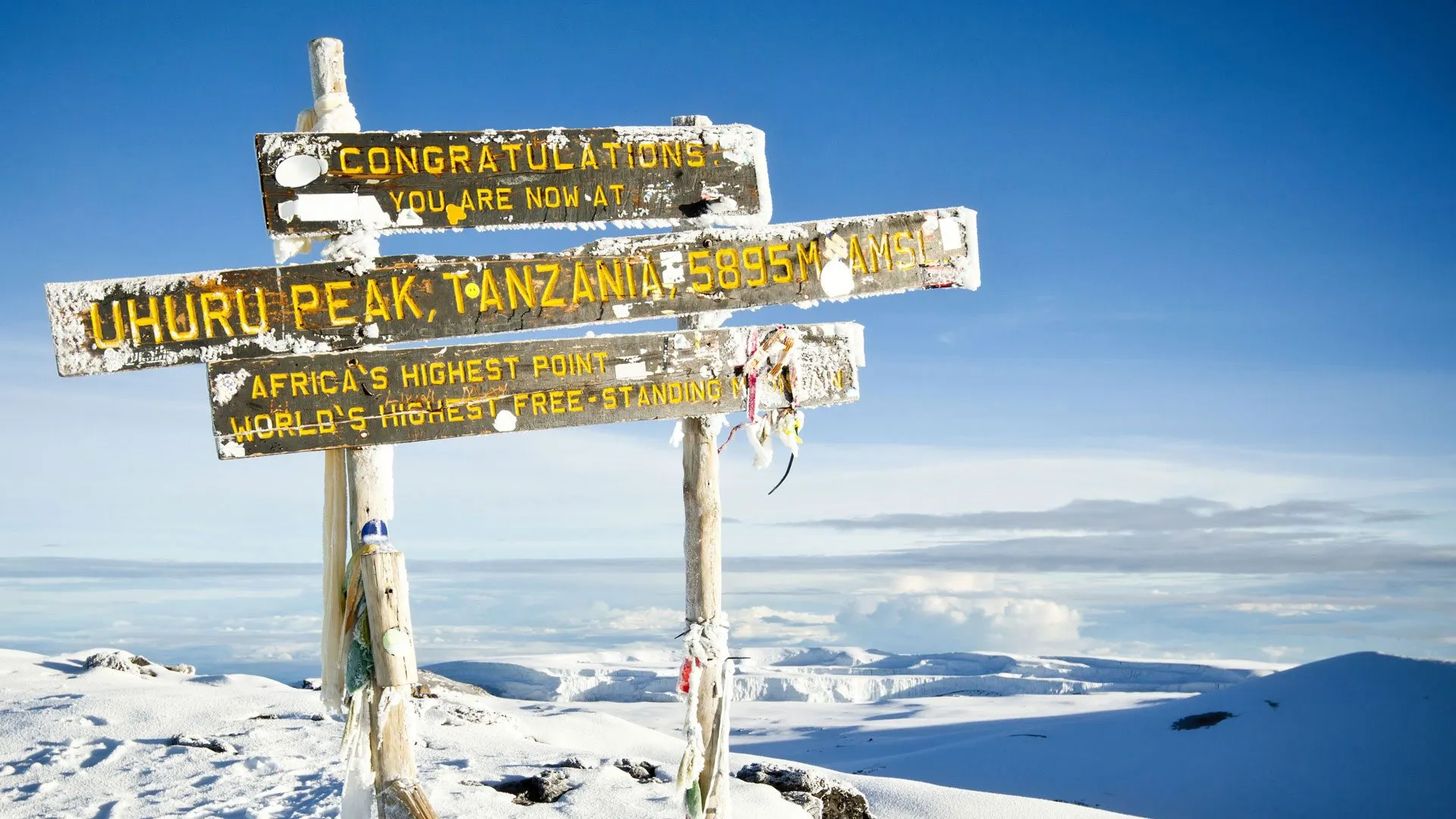
Best Time to Climb Kilimanjaro (Month by Month Guide)
Best time to climb kilimanjaro month by month..
Discover the best time to climb Kilimanjaro for an unforgettable experience. Learn about the ideal seasons, weather conditions, and tips for a successful trek. Get expert insights and first-hand knowledge from seasoned climbers.
Kilimanjaro, the majestic African peak, stands tall as the highest freestanding mountain in the world. Climbing this iconic summit is a dream for many adventurers seeking a thrilling challenge and breathtaking views.
However, deciding on the best time to embark on this expedition is crucial for a safe and enjoyable climb. In this comprehensive guide, we will explore the optimal periods to conquer Kilimanjaro, considering factors like weather, visibility, and crowds.
Whether you’re a seasoned mountaineer or a first-time trekker, this article will equip you with all the information needed to plan your Kilimanjaro adventure.
The “Best Time to Climb Kilimanjaro” primarily depends on two distinct trekking seasons, each offering unique advantages. Let’s delve into each season to determine which one suits your preferences and requirements.
1. Climbing Mount Kilimanjaro in January, February to March
Climbing Mount Kilimanjaro is a dream for many adventurers around the world. The allure of conquering Africa’s highest peak and being surrounded by awe-inspiring landscapes is truly irresistible. If you’re considering taking on this remarkable challenge, there’s no better time than January, February, or March. During these months, Kilimanjaro offers a unique and unforgettable experience , with clear skies, moderate temperatures, and stunning views. In this comprehensive guide, we’ll delve into every aspect of climbing Mount Kilimanjaro in January, February to March, providing you with valuable insights, practical tips, and personal experiences to ensure your journey is a resounding success.
2. Climbing Kilimanjaro in April: Beauty and Beast
Not ideal, but doable for experienced adventurers. Expect drenching rain, muddy trails, and limited views. Temperatures plummet at higher altitudes, demanding robust cold-weather gear. The upside? Fewer crowds and potentially snow-capped peak photos. Choose the Rongai Route for drier conditions. Be prepared for a challenging, wet, and breathtaking adventure.
April on Mount Kilimanjaro brings transitioning weather with cool temperatures. Days range from 10 to 20°C (50-68°F), while nights can drop to 0°C (32°F). Despite occasional showers, April offers clearer skies, providing breathtaking views. The cooler climate and reduced crowds make it an ideal time for a memorable Kilimanjaro climb.
3.Climbing Kilimanjaro in Dry Season (June to October)
The Dry Season is considered the best time to climb Kilimanjaro for most climbers. This period provides stable weather conditions and excellent visibility, enhancing your chances of reaching the summit. Here’s why the Dry Season is favored:
Favorable Weather : During the Dry Season, Kilimanjaro experiences clear skies and minimal precipitation. This reduces the risk of rain and snow, ensuring a more comfortable and safer ascent.
Ideal Visibility: The absence of heavy clouds and fog grants trekkers stunning panoramic views of the surrounding landscapes throughout the climb.
Lower Risk of Altitude Sickness: The stable weather and lower humidity levels reduce the chances of altitude-related health issues, allowing climbers to acclimatize more effectively.
We generally advise that the best time to climb Kilimanjaro is during the warmest and driest times of year, from December to mid-March and mid-June to the end of October. However, although these are considered to be the best times to climb the mountain in terms of weather, they are also the busiest months.
4. Climbing Kilimanjaro in Wet Season (November to May)
The Wet Season is less popular for climbing Kilimanjaro due to its challenging weather conditions. However, it can still be a viable option for certain trekkers with specific preferences. Here are some aspects to consider during the Wet Season:
Lush Scenery: The Wet Season brings rain, transforming the mountain’s landscapes into a lush, green paradise. Nature enthusiasts and photographers might appreciate the vibrant scenery.
Fewer Crowds : As the number of climbers decreases during this period, you can enjoy a quieter and more serene trek up the mountain.
Off-Peak Rates : Some tour operators and accommodations offer discounted rates during the Wet Season, making it a budget-friendly option for adventurers.
5. Climbing Kilimanjaro in July
Although extreme weather conditions – subzero nocturnal temperatures and chill winds – are a likelihood at higher altitudes, July is a relatively dry and warm month and a perfect time to climb Kilimanjaro. Is July a good time to climb Kilimanjaro? A combination of the best weather and the US and Europe summer vacations means this is the main climbing season and the busiest time on the mountain. July and August are the most popular months, so if you want to try and avoid crowds, opt for June or September, or October if you don’t mind a bit of rain.
6. Climbing Kilimanjaro in August
Still, assuming climatic conditions are your main consideration, August is probably the driest and warmest month and ideal for climbing Kilimanjaro. Shira Plateau on Mount Kilimanjaro. However, as summer holidays in the northern hemisphere are in full flow, it is also usually one of the two busiest months.
A combination of the best weather and the US and Europe summer vacations means this is the main climbing season and the busiest time on the mountain. July and August are the most popular months, so if you want to try and avoid crowds, opt for June or September, or October if you don’t mind a bit of rain.
7. Climbing Kilimanjaro in September
Is September a good month to climb Kilimanjaro? The summit success rate is very low for climbing Kilimanjaro as only 50-60% of people make it to the summit each year. September is one of the busier times to climb Kilimanjaro, but great weather, dryer conditions and excellent mountain views make this a great month to climb. Dry and relatively warm weather can be expected , making September ideal for climbing Kilimanjaro in climatic terms. However, extreme cold and possibly high winds are normal in the alpine and arctic zones. Dawn on the Mweka route, Mount Kilimanjaro.
8. Climbing Kilimanjaro in December
December tends to be wet and very cold. Expect slippery trails at lower altitudes and, as you approach the summit, subzero temperatures and howling winds at night. Towards the end of the month, the mountain experiences a secondary high season associated with the Christmas and New Year holidays. Best avoided.
Is December a good time to hike Kilimanjaro? Late December, January, February and March are great months for climbing Kilimanjaro. For starters, while there’s some rain during this season, it’s not extreme.
This is one of the common questions asked by many visitors planning their Africa safari tour during the December-Christmas season. It is a simple question to respond to, and the answers are YES, it is possible to climb Mount Kilimanjaro in December.
Factors to Consider for Choosing the Best Time
Deciding between the Dry Season and the Wet Season isn’t the only consideration when planning your Kilimanjaro climb. Several other factors should be taken into account to ensure a successful and enjoyable experience:
Personal Fitness and Experience
Climbing Kilimanjaro is a demanding physical challenge. Assess your fitness level and mountaineering experience before choosing the best time for your climb. The Dry Season might be more suitable for first-time climbers, while experienced trekkers might prefer the unique allure of the Wet Season.
Temperature and Weather
Weather conditions significantly impact your Kilimanjaro climb. The Dry Season offers cooler temperatures, especially at higher altitudes, which can be more comfortable during strenuous hikes. The Wet Season, on the other hand, brings warmer temperatures but increased chances of rain.
Wildlife Encounters
For wildlife enthusiasts, the Wet Season offers the opportunity to spot diverse flora and fauna. The lush surroundings attract various animal species, adding an extra dimension to your adventure.
Climbing Routes
Different climbing routes present varying challenges and scenic beauty. Some routes are more suitable for specific seasons, so consider your preferred route when deciding on the best time.
Packing Essentials for a Kilimanjaro Climb
Regardless of the time you choose to climb Kilimanjaro, packing the right gear is essential to ensure your safety and comfort throughout the journey. Here’s a comprehensive list of packing essentials:
Quality Hiking Boots:
Invest in sturdy, waterproof hiking boots to protect your feet and provide excellent traction on rugged terrain.
Layered Clothing:
Dress in layers to adapt to changing temperatures during the climb. Include moisture-wicking base layers, insulating mid-layers, and waterproof outer shells.
Sleeping Bag and Pad:
A high-quality, cold-rated sleeping bag and pad are essential for a comfortable night’s rest during the trek.
Headlamp: A reliable headlamp is crucial for early morning and nighttime treks.
Sun Protection:
Bring sunglasses, a wide-brimmed hat, and sunscreen to shield yourself from the sun’s harsh rays at high altitudes.
Water and Snacks:
Stay hydrated with a refillable water bottle and pack energizing snacks to fuel your journey.
First Aid Kit:
Carry a well-stocked first aid kit, including altitude sickness medication, bandages, and pain relievers.
Personal Items:
Don’t forget essentials like passports, permits, and camera gear to capture your Kilimanjaro adventure.
What is the Best Time to Climb Kilimanjaro for Beginners?
The Dry Season (June to October) is ideal for beginners due to its stable weather and lower risk of altitude sickness.
Is Climbing Kilimanjaro Dangerous during the Wet Season?
Climbing during the Wet Season can be more challenging due to rain and slippery trails. However, with proper preparation and experienced guides, it can still be a safe and rewarding experience.
How Cold Does it Get at the Summit of Kilimanjaro?
Temperatures at the summit can drop to as low as -20°C (-4°F) during the Dry Season. Proper clothing is crucial to stay warm.
How Long Does it Take to Climb Kilimanjaro?
The duration of the climb depends on the route chosen, but most treks take between 6 to 8 days.
Can I Climb Kilimanjaro Solo?
While it’s possible, climbing with a reputable tour operator and a group is recommended for safety and support.
Do I Need Climbing Experience to Climb Kilimanjaro?
While prior climbing experience is beneficial, it’s not mandatory. Choose a suitable route and prepare physically to increase your chances of success.
Climbing Kilimanjaro is a life-changing experience that requires careful planning and consideration. Understanding the best time to climb Kilimanjaro, based on your preferences and capabilities, is essential for a successful and enjoyable adventure. Whether you choose the stable weather of the Dry Season or the lush landscapes of the Wet Season, Kilimanjaro promises an unforgettable journey to the Roof of Africa.
So, pack your gear, train your body, and embark on this extraordinary expedition. Conquer Kilimanjaro and create memories that will last a lifetime.
Comments are closed.

- Kilimanjaro Crater Camp

Mt. Kilimanjaro Climbing Summit – Machame Route | 8 Days

Kilimanjaro Summit Climbing Marangu Route | 7 Days

Mt. Kilimanjaro Climbing Summit – Shira Route | 7 Days

Mt. Kilimanjaro Climbing Summit – Umbwe Route | 7 Days

10 Day Kilimanjaro climb

Kilimanjaro Summit Climbing Lemosho Route | 9 Days

Mt. Kilimanjaro Climbing Summit – Northern Circuit Route | 10 Days

Kilimanjaro Summit Climbing Rongai Route | 7 Days
Start your kilimanjaro journey today.

- Trek Booking
Best time to Climb
When is the best time of year to climb kilimanjaro.
The best time to climb Kilimanjaro are the months of January through early-March and June through October. The clear skies, great views, and the sunshine makes it the best comfortable hiking conditions. However, there is always the possibility of weather changing dramatically, regardless of the season.
You can climb Kilimanjaro at any time of the year, but certain months are better than others. We recommend best to climb Mount Kilimanjaro during the driest months We avoid April and November as these are the main rainy seasons, making the trails more dangerous.
What is the best month to climb Kilimanjaro? month by month overview
Unlike the Himalayas, Kilimanjaro is never “closed”. You can trek year-round, but you need to be prepared. We do not normally offer climbs during April/May and November.
Kilimanjaro Climbing in January, February, and Early March
With mostly dry, clear days and good visibility, trekking conditions are ideal. Over 14,000 feet, there’s a good chance of snow, so expect some epic photo opportunities.
While this is considered “high season,” the slopes are often quieter than during the main climbing season of June to September, making it a good balance of not-too-crowded and pleasant weather.
Hikers who want to avoid crowds while still enjoying dry weather should go here.
A bonus is snow on the summit.
Kilimanjaro Climbing in March, April, and May
Early March can be beautiful, but as the month goes on, rain can set in, resulting in muddy trails, cloudy skies, and poor visibility. You can get lucky with dry weather in late March and late May, but it’s hit or miss.
Long rains occur from April to early May, making climbing impossible.
If your schedule requires you to travel during the shoulder seasons (late March to late May), be prepared for rain and avoid being disappointed by poor visibility.
You should have some trekking experience and won’t be intimidated by more difficult trail conditions.
Best for: experienced hikers who want to avoid crowds and don’t mind being exposed to the elements. The routes on the mountain’s north side are recommended.
Kilimanjaro climbing in the months of June, July, August, and September
This is the main climbing season and the busiest time on the mountain due to the best weather and US and European summer vacations. The most popular months are July and August, so if you want to avoid crowds, go in June or September, or October if you don’t mind a little rain.
Showers are always possible, especially in the forest, but this is a largely dry time of year. During this time, especially around the full moon, routes tend to be busier.
Best for: Climbers who don’t mind crowds (which are mostly on the Marangu and Machame routes) and want the best weather for their trip.
Kilimanjaro Climbing in October/November
In November, short rains usually arrive and last 3–4 weeks. Rain falls mostly in the late afternoon and is less persistent than in April and May (the “long rains”). During this time, the mountain is very quiet.
The Rongai or Northern Circuit routes are recommended because the northern side of the mountain is more sheltered and has less overall rainfall.
Best for: Those who want to avoid crowds and who aren’t put off by rain.
When is the best time to climb Mount Kilimanjaro?
Climate conditions.
Because Kilimanjaro is so close to the equator, it does not have the same four seasons as the rest of the world. Instead, it has rainy and dry seasons, which both change the appearance of the mountain.
The months of January through early March, as well as June through October, are ideal for climbing Kilimanjaro. Clear skies, beautiful views, and plenty of sunshine make for fantastic photo opportunities and pleasant hiking conditions.
These are usually the driest and busiest months of the year. Read more: Kilimanjaro Weather Guide.
Temperature
As you climb higher on the mountain, temperatures change with the seasons and within the different climate zones.
The summit zone is classified as “Arctic,” with temperatures consistently below freezing throughout the year.
The coldest months are usually December to March and June (just after the rains), and there’s a good chance you’ll see snow on the summit. As a result, the number of visitors is reduced (as compared to July through August which is the busiest time).
Season of the rains
In the Kilimanjaro region, there are two distinct wet seasons:
- End of March to May: Heavy rains
- November brings light rains.
The rainiest months are typically April and November, though this can vary.
The rainy season usually starts in mid-March and lasts until the end of May. On Kilimanjaro, especially along its southern face, conditions can be wet, stormy, and muddy during this time. Even in the dry season, rain is always a possibility. That’s why we keep good wet-weather gear in our daypacks at all times.
Clouds, mist, and fog obscure visibility.
You didn’t come all this way to walk through the fog and cloudy skies. Due to cloud cover, visibility can be poor from late March to the end of May, and throughout November. You won’t be able to see the panoramic views or take great photographs.
Number of climbers on Mount Kilimanjaro
The favorable weather in January through early March, and June through October, makes the mountain busier as climbing Kilimanjaro becomes more popular.
The Marangu and Machame routes are usually the ones that are overcrowded. You can still enjoy the views without too many people if you choose one of the less popular routes, such as the Northern Circuits, Rongai, or Lemosho.
Overcrowding of toilet facilities at campsites is one of the main drawbacks that climbers try to avoid when trekking during peak seasons. We look after our climbers by providing private toilet tents that are only used by our group.
The sense of camaraderie and friendships formed through meeting other climbers more than compensates for the fact that it is a bit “busy.” Many of our clients have formed lifelong bonds with people they met on the mountain.
When is the best time to climb Kilimanjaro without having to deal with crowds?
If you want to be alone, it’s worth it to risk a little rain in exchange for having the mountain to yourself.
During the rainy season (April/May and November), we avoid climbing.
Choose one of the routes with less foot traffic as an alternative. During the rainier months, we recommend the routes on the mountain’s northern side, which receive less rainfall and are more sheltered.

The best company to climb Kilimanjaro with will be a dedicated operator not a travel agent
Agents simply take your reservations; all of the major adventure travel companies that offer treks all over the world are simply agents. They take your reservation and then subcontract your climb to someone you have never met.
If you’re lucky, this could work out fine, but the agent has no control over what happens on the mountain, so you’ll have to hope. Furthermore, agents receive commission from the operator, which raises the price you pay. So, when choosing a company for your Kilimanjaro climb, go with one of the best operators: they can offer you a good price and have direct control over the quality of your climb.

Make sure your Kilimanjaro climb operator meets the minimum legal requirements.
Financial bonding should be in place to protect your money if they go bankrupt. They must have adequate public liability insurance as well as a Tanzanian Tourist Board license, both of which are required: These basic legal requirements are met by all of the best Kilimanjaro operators.

Examine the details of your preferred Kilimanjaro operator's quote.
The fact that airport transfers are included both coming and going, that you have a good-quality hotel before and after the climb, and that all park fees are included are all important factors. Even some of the best Kilimanjaro operators list these as a local cost, which, at around $700, is a significant expense to overlook.

Inquire about the operator's guide-to-client ratio, food, and equipment.
This is extremely important for your safety. We always have at least one guide for every two clients. And good tents are essential; nothing is worse than a leaky tent, and you’ll need good food and plenty of it to summit.

Make sure they are acting responsibly.
This may appear to be a nice to-have, but the best Kilimanjaro guide will be concerned about his guides and porters, as well as Kilimanjaro and Tanzania. A minimum of membership in the Tanzania Porters Organization (TPO) and the Kilimanjaro Guides Association (KGA) is required—TPO ensures that its members treat their porters well. The best Kilimanjaro operators follow TPOs and KGA rules.
Also, take note of what they say about the environment: we adhere to the Leave No Trace principles, ensuring that Kilimanjaro is preserved for future climbers. The best Kilimanjaro tour companies also donate to local charities. We help a local children’s home and the porters’ association with the money that each climber gives.

See what they'll do if something goes wrong.
Flights are delayed – the best Kilimanjaro operators will reschedule your climb right up until the last minute at no extra charge; luggage is lost or arrives late – a good operator should be prepared to deal with this; and some members of a group become ill – the best Kilimanjaro companies will always be able to split a group so that not everyone has to descend.

Obtain the appropriate references.
Don’t rely solely on testimonials; they’re far too easy to fabricate. Get real emails and contact people yourself, and check out an operator’s page on Facebook or Tripadvisor to see what other climbers have said. This is a fantastic way to find the best and most reputable Kilimanjaro operators to climb the mountain with. So there you have it: seven tips for finding the best climber for Mount Kilimanjaro. Book with an operator instead of an agent, make sure they are operating legally, double-check what they include, ask about their social responsibility, and last but not least, get some references.
Ready for the climb of your life? Let’s make your Kilimanjaro dream a reality!”
Book Your Holiday
- 2023 Authentic Kilimanjaro
Travel Serengeti
Tanzania's world famous national park
Ultimate Guide to Kilimanjaro Trek: Acclimatization, Seasons & Weather
Conquer the roof of africa: a guide to mount kilimanjaro trek.
Mount Kilimanjaro, located in Tanzania, is the highest peak in Africa and one of the most sought-after destinations for adventure enthusiasts. Standing tall at 5,895 meters, this majestic mountain offers a thrilling trekking experience that attracts thousands of climbers every year. In this guide, we will explore the essentials of a Kilimanjaro trek, including acclimatization, trekking seasons, and weather conditions.
Acclimatization: Key to a Successful Kilimanjaro Trek
One of the crucial factors to consider when planning a Kilimanjaro trek is acclimatization. As you ascend to higher altitudes, the air becomes thinner, and your body needs time to adjust to the reduced oxygen levels. Proper acclimatization helps minimize the risk of altitude sickness and ensures a successful summit attempt.
To acclimatize effectively, it is recommended to choose a route that includes sufficient rest days and gradual altitude gain. Popular routes like the Machame and Lemosho routes provide ample time for acclimatization. These routes typically take around 6-8 days, allowing climbers to adapt to the changing altitude and increase their chances of reaching the summit.
Kilimanjaro Trekking Seasons: When to Go
Mount Kilimanjaro can be climbed throughout the year, but there are two main trekking seasons that offer the best conditions for a successful summit. These seasons are influenced by the weather patterns on the mountain.
Dry Season: January to March and June to October
The dry seasons, which occur from January to March and June to October, are considered the best times to trek Mount Kilimanjaro. During these periods, the weather is generally clear, and the chances of rainfall are significantly lower. The clear skies offer breathtaking views of the surrounding landscapes, making the trek even more memorable.
Moreover, the dry seasons provide stable weather conditions, reducing the risk of encountering heavy rains or extreme cold. The trails are also less crowded during these periods, allowing for a more peaceful and enjoyable trekking experience.
Wet Season: April to May and November to December
The wet seasons, which occur from April to May and November to December, are characterized by higher rainfall and increased cloud cover. While trekking during the wet season is still possible, it poses additional challenges due to slippery trails and reduced visibility.
However, the wet seasons have their own unique charm. The mountain is lush and green, and the rainfall creates stunning waterfalls along the trails. If you don’t mind the occasional rain and are seeking a more adventurous experience, trekking during the wet season can be a great option.
Understanding Kilimanjaro Weather
Mount Kilimanjaro’s weather can be unpredictable and can change rapidly as you ascend through different climatic zones. It is essential to be prepared for a range of weather conditions during your trek.
At the base of the mountain, the weather is generally warm and humid. As you climb higher, the temperature drops, and the air becomes colder and drier. The summit of Kilimanjaro is often covered in snow and experiences freezing temperatures, even during the dry seasons.
It is crucial to pack appropriate clothing layers to accommodate these weather changes. Layering allows you to adjust your clothing according to the temperature and helps regulate your body heat effectively.
A Kilimanjaro trek is a bucket-list adventure that offers breathtaking views and a sense of accomplishment. By understanding the importance of acclimatization, choosing the right trekking season, and being prepared for the weather conditions, you can enhance your chances of a successful summit.
Whether you opt for the dry season to enjoy clear skies or the wet season for a more adventurous experience, Mount Kilimanjaro promises an unforgettable journey to the roof of Africa.
A Comprehensive Guide To Kilimanjaro Trek
Located in the heart of Tanzania, Mount Kilimanjaro stands as Africa’s highest peak and the world’s tallest free-standing mountain. This freestanding dormant volcano has attracted adventurers from all over the globe and a trek to the summit leads you through some diverse ecosystems. It’s a challenging and thrilling climb and an immersive cultural experience. The Kilimanjaro trek offers a selection of routes, each with unique characteristics and challenges. Popular routes include the Machame, Marangu, Lemosho, and Rongai, catering to a range of preferences in terms of duration, scenery, and difficulty.
Ascending Mount Kilimanjaro is akin to traversing various climatic zones. The journey takes trekkers through lush rainforests, alpine meadows, arctic deserts, and glacial landscapes. This ecological diversity contributes to the trek's allure, offering a microcosm of climate zones in a relatively compact area. Along the Mount Kilimanjaro Trek, the trekkers have the opportunity to interact with the indigenous Chaga people, learning about their traditions, folklore, and way of life. The presence of experienced guides and porters adds a personal touch to the cultural exchange.
Accessible to both seasoned climbers and novices with proper preparation, Kilimanjaro welcomes individuals of varying fitness levels. The inclusive nature of the trek has made it a popular choice for those seeking a challenging yet achievable adventure.
Location & Accessibility
.webp)
Located in East Africa, Mt. Kilimanjaro stands proudly in Tanzania, near the border with Kenya. It is situated within the Kilimanjaro National Park and is a dominant feature of the Tanzanian landscape. The mountain is a dormant stratovolcano, comprising three distinct cones: Kibo, Mawenzi, and Shira.
The primary gateway to Kilimanjaro is the Kilimanjaro International Airport (JRO). This airport is well-connected to major international airports, making it relatively convenient for trekkers arriving from various parts of the world.
Nearby Cities
Arusha: A popular starting point for Kilimanjaro treks, Arusha is a vibrant city approximately 70 kilometres (43 miles) away from Kilimanjaro International Airport.
Moshi: Located even closer to Kilimanjaro, Moshi is another common base for trekkers. It is approximately 35 kilometres (22 miles) from the airport.
Ground Transportation
Roads: Well-maintained roads connect the major cities of Arusha and Moshi to the Kilimanjaro National Park. The journey from either city to the park takes around 1-2 hours, depending on the chosen route.
Unique Ecological Zones of Mt Kilimanjaro
Mount Kilimanjaro in Africa is a geological marvel boasting a variety of ecological zones. As trekkers ascend their slopes, they traverse through distinct landscapes, each characterized by unique flora, fauna, and geological features. The Kilimanjaro trek unfolds like a journey through different worlds, revealing the following ecological zones:
Cultivated Zone (Lower Slopes)
Elevation: Approximately 800 to 1,800 meters (2,600 to 5,900 feet)
Characteristics: The trek begins in the cultivated zone, where lush farmlands and villages dot the landscape. Banana and coffee plantations thrive in this fertile region.
Rainforest Zone
Elevation: 1,800 to 2,800 meters (5,900 to 9,200 feet)
Characteristics: As trekkers ascend, the cultivated landscape gives way to a dense rainforest. Towering trees, moss-covered ground, and vibrant vegetation create a verdant and humid environment. Colobus monkeys and various bird species are common inhabitants.
Heath and Moorland Zone
Elevation: 2,800 to 4,000 meters (9,200 to 13,100 feet)
Characteristics: The rainforest gradually transitions into the heath and moorland zone. Trees become sparse, replaced by shrubs, heather, and unique plant species adapted to the cooler temperatures. This zone offers expansive views of the surrounding landscape.
Alpine Desert Zone
Elevation: 4,000 to 5,000 meters (13,100 to 16,400 feet)
Characteristics: The landscape transforms into an otherworldly alpine desert. Barren and rocky, this zone is marked by volcanic features and surreal rock formations. Trekkers may encounter the distinctive Senecio and Lobelia plants, adapted to the harsh conditions.
Arctic Zone (Glacial)
Elevation: 5,000 meters (16,400 feet) and above
Characteristics: The final stretch before the summit of Mt. Kilimanjaro trek is the Arctic zone, where trekkers face the challenges of high altitude and sub-zero temperatures. Glacial ice and snow dominate this zone, leading to the summit – Uhuru Peak. The glaciers, although receding, contribute to the unique beauty of Kilimanjaro's summit.
Flora and Fauna
Banana and Coffee Plantations, towering trees, ferns, epiphytes, mosses and orchids, lobelias, hardy shrubs like Helichrysum, and unique alpine plants such as Groundsel and Alchemilla are some unique flora belonging to the region.
Colobus Monkeys, turacos, hornbills, sunbirds, eagles and hawks are some common animal and bird species spotted during the Mount Kilimanjaro.
The Different Climbing Routes
Embarking on the trek to Kilimanjaro's summit is a thrilling adventure, and the journey is defined by the choice of climbing route. Each route presents its challenges, landscapes, and experiences, catering to different preferences and levels of trekking expertise. Here's an overview of the various climbing routes to the majestic Uhuru Peak:
Marangu Route (Coca-Cola Route)
Characteristics:
→ Known as the "Coca-Cola Route" due to its relative popularity.
→ Gradual slopes and well-defined paths.
→ Offers hut accommodation, providing a more comfortable experience.
→ Diverse landscapes from rainforest to alpine desert.
Challenge Level:
→ Considered one of the less challenging routes, suitable for beginners
2. Machame Route (Whiskey Route)
→ Often referred to as the "Whiskey Route" for its more challenging nature compared to Marangu.
→ Spectacular views and diverse landscapes.
→ Tent accommodation throughout the trek.
→ Varied landscapes, including rainforest, heath, and alpine desert.
→ Moderate to challenging, suitable for those seeking a more demanding climb.
3. Lemosho Route
→ Offers a longer and more gradual ascent, aiding acclimatization.
→ Less crowded than Marangu and Machame.
→ Combines the best of both routes in terms of scenery.
→ Diverse landscapes, from rainforest to glacial zones.
→ Moderate to challenging, suitable for those with trekking experience.
4. Rongai Route
→ Approaches Kilimanjaro from the north.
→ Offers a unique perspective with fewer crowds.
→ Known for its wilderness feel.
→ Diverse landscapes, from rainforest to arctic desert.
→ Moderate, suitable for trekkers seeking a quieter route.
5. Northern Circuit Route
→ The longest route, circling around the northern slopes.
→ Maximum acclimatization time, increasing summit success rates.
→ Less crowded and ideal for those seeking a remote experience.
→ Varied landscapes, showcasing Kilimanjaro's diverse ecosystems.
→ Moderate to challenging, suitable for experienced trekkers.
6. Umbwe Route
→ Known as the most challenging route due to the steep ascents.
→ Less crowded, providing a sense of isolation.
→ Offers stunning views of the Western Breach.
→ Varied landscapes, including dense forest and alpine desert.
→ Challenging, and suitable for experienced and confident trekkers.
Factors to Consider in Route Selections
→ Your level of trekking experience and comfort with challenging terrains. Routes vary in difficulty, with some being more suitable for beginners, while others are designed for experienced trekkers.
→ The rate of ascent and the time allocated for acclimatization should be considered. Slower ascents and routes with longer durations increase acclimatization, improving the chances of summit success and reducing the risk of altitude sickness.
→ Different routes offer unique perspectives, from lush rainforests to arctic deserts. Consider the type of scenery you want to experience.
→ Some routes are more crowded than others. If you prefer a quieter experience, consider less popular routes.
→ Longer routes often allow for better acclimatization but may require more time and commitment.
→ Different approaches offer varied perspectives and challenges. Choose an approach that aligns with your preferences.
→ Some routes may have more stable weather conditions during certain times of the year, impacting the overall trekking experience.
→ Some routes may be more budget-friendly than others. Consider the total Kilimanjaro trek cost when making your decision.
Machame Route & Its Highlights
We conduct the Kilimanjaro Expedition via the Machame Route and here are some highlights of the route:
Campsites and Accommodations
The Machame Route features a range of campsites, each with its unique charm. These campsites offer everything from basic tents to comfortable huts. The accommodation varies depending on the route chosen, but all provide shelter and a place to rest. As you ascend, you'll notice the landscape changing, from lush rainforests to alpine deserts, with corresponding shifts in campsites and scenery.
Experiencing the Diverse Ecosystems
Kilimanjaro is renowned for its diverse ecosystems, and as you ascend, you'll witness these changes firsthand. You'll trek through lush rainforests teeming with wildlife, traverse the moorlands, and ascend rocky trails in the alpine desert. The range of environments and ecosystems you encounter on Kilimanjaro is a true marvel and a testament to the mountain's unique character.
Wildlife Encounters
As you ascend through various ecological zones, you may be fortunate enough to have close encounters with unique species. Kilimanjaro is home to a variety of animals, and you might spot Colobus Monkeys. These black-and-white monkeys often swing through the trees of the rainforest. Blue Monkeys, known for their striking bluish fur, herds of buffalo, particularly in the heath and moorland zones.
The Stunning Vistas and Sunrises
One of the most remarkable aspects of climbing Mount Kilimanjaro is the breathtaking scenery and the unforgettable sunrises. From the rocky slopes of the mountain, you'll witness the world unveil itself in shades of orange, pink, and purple as the sun breaks over the horizon. The sweeping panoramas of the African plains below are an awe-inspiring sight.
The Climb to The Summit
You'll be woken up in the dead of night to start your final ascent. The final push to Uhuru Peak is an arduous yet thrilling endeavour. You'll traverse the crater rim, negotiating scree and steep terrain, as the oxygen levels thin. With determination and the support of your guides and fellow trekkers, you'll reach Uhuru Peak. The sense of accomplishment and the panoramic view of Africa from its highest point is simply unparalleled.
The Best Time To Visit Kilimanjaro
The dry season from June to October and December to February is the best time to do the Kilimanjaro Trek.
→ During this time there is minimal precipitation and the skies are clear.
→ Summit success rates are high due to favourable weather.
→ Warmer temperature at lower altitudes.
→ Excellent visibility for panoramic views.
How Challenging Is The Kilimanjaro Climb?
The challenge level of the Kilimanjaro climb varies depending on factors such as the chosen route, trekking experience, fitness level, and the climber's ability to acclimatize to high altitudes. The Kilimanjaro climb is challenging, but with proper preparation, training, and a well-planned itinerary, climbers of varying skill levels can undertake this adventure. Choosing the right route, acclimatizing effectively, and being mentally and physically prepared are essential components for a successful Kilimanjaro summit.
Can beginners climb Mt Kilimanjaro?
Absolutely, beginners can climb Mt. Kilimanjaro! While Kilimanjaro is a challenging peak due to its high altitude, with the right preparation, guidance, and a suitable route, individuals with little or no mountaineering experience can successfully reach its summit. Kilimanjaro is a non-technical climb, meaning it doesn't require advanced mountaineering skills or specialized equipment. No technical climbing, ice axes, or ropes are necessary. So you can choose to climb Mount Kilimanjaro even if you are a beginner.
Essential gear and equipment
Moisture-Wicking Base Layers
→ Long-sleeved shirts and pants made of synthetic or merino wool to manage moisture and regulate body temperature.
Insulating Layers
→ Fleece or down jackets to provide warmth in colder conditions, especially during summit night.
Waterproof Jacket and Pants
→ Gore-Tex or similar waterproof and breathable materials to protect against rain and wind.
Trekking Pants:
→ Lightweight, quick-drying pants for lower altitudes and warmer conditions.
Convertible Pants
→ Pants with zip-off legs for versatility in changing temperatures.
→ Sun hat with a brim for sun protection.
→ Beanie or hat for warmth during colder sections.
→ Lightweight gloves for lower altitudes.
→ Insulated, waterproof gloves for summit night.
Hiking Boots
→ Sturdy, waterproof boots with ankle support for varied terrain.
Wool or Synthetic Socks
→ Moisture-wicking and warm socks to prevent blisters.
→ To keep snow and debris out of your boots, especially during the ascent.
→ 20-30L capacity for carrying essentials during daily treks.
→ Waterproof and durable, to be carried by porters.
Sleeping Bag
→ Rated for low temperatures encountered during the climb.
Sleeping Mat
→ Insulated and lightweight for added comfort.
Trekking Poles
→ Adjustable poles for stability and balance.
→ With extra batteries for early morning and night hikes.
→ Category 3 or 4 lenses for high-altitude sun protection.
Accessories
→ High SPF for sun protection at high altitudes.
→ With SPF to prevent chapping.
Water Bottles or Hydration System
→ To stay hydrated throughout the trek.
Water Purification Tablets or Filtration System
→ For refilling water from natural sources.
→ Travel-sized toothbrush, toothpaste, biodegradable soap, and wet wipes.
First Aid Kit
→ Including personal medications, pain relievers, and blister treatment.
→ Energy bars, trail mix, and snacks for sustained energy.
Camera or Smartphone
→ Capture memories of the breathtaking scenery.
Personal Items
Passport and Necessary Documents
→ Including trek permits, insurance, and medical information.
→ For tipping guides, porters, and additional expenses.
Trekking Permit
→ Obtain necessary permits in advance.
Physical and mental preparation for the trek Physical Preparation
Cardiovascular Fitness
Engage in regular cardiovascular exercises such as hiking, running, cycling, or stair climbing. Aim for at least 30-60 minutes, three to four times per week to enhance endurance.
Strength Training
Includes strength training exercises to build muscle endurance, especially in the legs and core. Squats, lunges, and core exercises contribute to overall strength.
Hiking Practice
Simulate trekking conditions by gradually increasing the duration and elevation of your hikes. This helps your body acclimate to the demands of sustained walking on uneven terrain.
Altitude Training
If possible, incorporate altitude training. While nothing fully replicates high-altitude conditions, activities like hiking at higher elevations or using altitude simulation devices can be beneficial.
Consistent Exercise
Establish a consistent exercise routine well in advance of your trek. This provides ample time for your body to adapt and build the necessary strength and stamina.
Weight Management
Maintain a healthy weight to reduce unnecessary strain on your body during the climb.
Develop good hydration habits. Drink plenty of water daily to stay well-hydrated, and become accustomed to carrying and using a hydration system or water bottles.
Mental Preparation
Positive Mindset
Cultivate a positive and determined mindset. Mental resilience is crucial during challenging sections, particularly on summit night.
Knowledge of Challenges
Understand the challenges you may face, such as altitude-related symptoms, long hiking days, and varying weather conditions. Being mentally prepared for these factors helps manage expectations.
Visualization
Visualize success. Envision yourself reaching the summit and experiencing the awe-inspiring views from Uhuru Peak. Positive visualization can boost confidence and motivation.
Mental Resilience Techniques
Learn and practice mental resilience techniques, such as mindfulness and breathing exercises. These can help manage stress and anxiety during the trek.
Adaptability
Be adaptable to changing conditions and expectations. Flexibility in your approach helps you navigate unforeseen challenges.
Goal Setting
Set realistic and achievable goals for each day of the trek. Celebrate small victories to maintain motivation.
Education about Altitude
Educate yourself about the effects of high altitude and how to manage them. Knowing what to expect helps alleviate anxiety.
Training Hikes
Participate in longer training hikes to mimic the physical and mental challenges of consecutive days of trekking.
Booking your expedition
Embarking on an expedition, especially one as iconic as climbing Mount Kilimanjaro, requires careful consideration and planning. Choosing the best adventure provider is a pivotal decision that can significantly impact the success and enjoyment of your trek.
→ Conduct thorough research on different adventure providers. Look for companies with a strong reputation, positive reviews, and a track record of successful treks.
→Ensure that the adventure provider is licensed and adheres to local regulations. Look for certifications and affiliations with reputable trekking and adventure associations.
→ Verify the qualifications and experience of the guides. Experienced guides with expertise in high-altitude trekking contribute to the safety and success of your expedition.
→ Inquire about the safety measures implemented by the provider. This includes emergency evacuation plans, medical support, and equipment standards.
→ Read client testimonials and reviews. Insights from those who have previously undertaken treks with the provider can offer valuable perspectives.
→ Choose a provider with transparent pricing. Ensure that the Kilimanjaro trek cost breakdown includes all essential components such as permits, accommodation, meals, and guide fees.
→ Select a provider that offers inclusive packages covering permits, accommodations, meals, and additional services. A comprehensive package simplifies logistics and provides a seamless experience.
Kilimanjaro Expedition - FAQ
1. What kind of Tents will I sleep in?
Your tents are mountain-style, double-walled, mosquito-netted, and durably floored with waterproof material. While technically rated as a four-person tent, we comfortably accommodate two people. Tents are erected and packed up by the staff porters. There is enough space for tall people to stretch out and room for your gear within the tent.
2. What is the food like?
Expect to eat well, amply, and on time. Your cook works with a variety of fresh, canned, freeze-dried, and mixed ingredients to produce multi-course meals. We emphasise drinking plenty of fluids and you will have a choice of beverages including tea, coffee, cocoa, milk, lemonade, and water. The evening meal will include meat, soup, salad, a vegetable course, and dessert. Carbohydrates come from cereals, bread, rice, and pasta. Vegetarians are catered for as well. You may bring trail snacks and protein bars, but they are not necessary.
3. Drinking water – is it safe, and is there enough for all climbers?
There is always plenty of water at each campsite. It is boiled before distribution to climbers. While it is not needed to bring additional bottled water, you may bring flavoured water as per your preference..
4. What happens if some members of the team need to turn back before the summit?
No one is forced to go on. There is always enough staff to split the party according to need and regroup later at the camp. Most people have no trouble reaching the highest campsite. If some members decide not to climb the final distance they can wait for the climbers to come back down the same way or take a lateral path to the descent route.
5. What kind of help is available in case of emergency?
We always have a first aid kit close at hand. Serious injuries are rare. Porters will assist injured climbers to the base of the mountain and onward to a clinic or hospital. Kilimanjaro International Airport is very near Marangu Gate if evacuation to the US or Europe is advisable.
6. What is the best time of the year to climb Kilimanjaro?
You can climb any month of the year. At lower elevations, April, May, and November are quite wet while March and June are transition months. August and September are the coldest and driest months. January, February, July, August, and September are all popular climbing months.
Kilimanjaro’s dry season, and also the busiest time to climb, is June through October. December through February is also a busy time on the mountain although there tends to be more rain and snow. Clear skies are more likely from June to October, as the cloud cover burns off after the tree line. Because Kilimanjaro is such a large mountain, it has its own weather pattern – it often rains on Kilimanjaro when it is not raining elsewhere. You should prepare for rain and have your rain gear with you at all times while on the mountain. The coldest temperature experienced at the summit is around -30C. The lower elevations can be quite hot, so pack for a wide range of temperatures.
7. How much weight will I have to carry, where can I leave things not needed on the climb?
You will simply carry a daypack of about 5-6 pounds, though some people carry more or less. Your gear, not to exceed 33 pounds, will be placed inside a waterproof duffel at the trailhead, and a porter will carry this for you. If you have things you do not need on the climb, you may leave a bag behind at Arusha.
8. What kind of staff will accompany me on the climb?
The usual ratio is three local staff for each climber, although small groups may have four staff per climber. These usually consist of an English-speaking guide or guides, a professional cook, and gear-carrying porters. We encourage you to interact with your staff, though some will have limited English. They are all trustworthy local people who have grown up in the shadow of the mountain. Many of them have climbed the peak 50 or more times.
9. What is provided and what do I have to bring?
We provide tents, food, utensils, and leadership. You should bring your own sleeping bag rated to 10 degrees F., water system, personal clothing, sleeping pad, light duffle bag, and day pack. Hiking poles can be rented for $10 for the trip. A packing list is provided to all climbers, along with our pre-departure packet.
In this comprehensive guide, we've endeavoured to equip you with the essential knowledge needed to embark on the extraordinary adventure of climbing Mount Kilimanjaro. Now armed with the knowledge to plan your Kilimanjaro trek, we invite you to take the leap. Step into the unknown, breathe in the crisp mountain air, and witness the sunrise from Uhuru Peak. The challenges may be great, but the rewards are immeasurable!
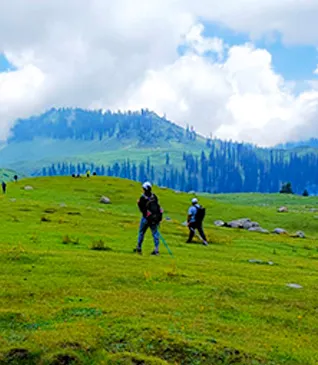
Doodhpathri Trek
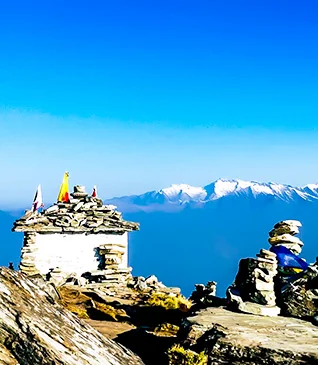
Chopta Chandrashila Tungnath Trek with Deorital
Uttarakhand
.webp)
Ranthan Kharak Trek
.webp)
Nafran Valley Trek
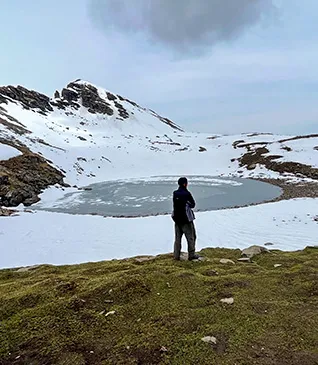
Bhrigu Lake Trek
Himachal Pradesh
.webp)
Dayara Bugyal Trek
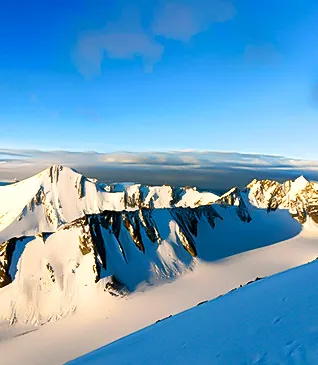
Twin Peak - Kang Yatse II, Dzo Jongo, Markha Valley Trek
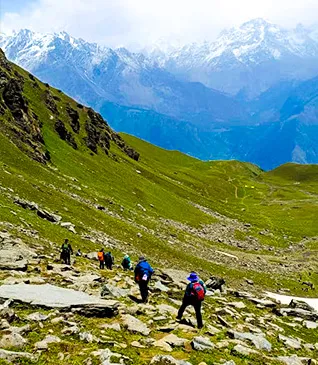
Sar Pass Trek
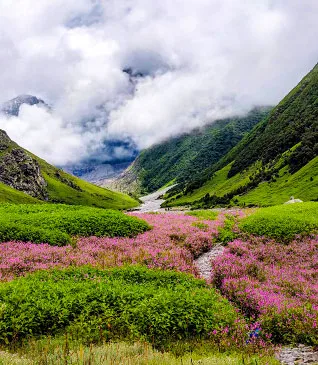
Valley of Flowers Trek
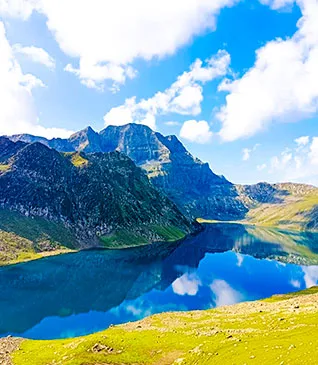
Tarsar Marsar Trek
.webp)
Rupin Pass Trek
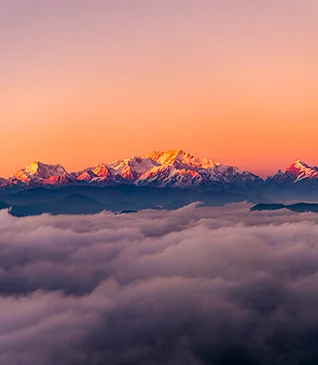
Sandakphu Trek
West Bengal
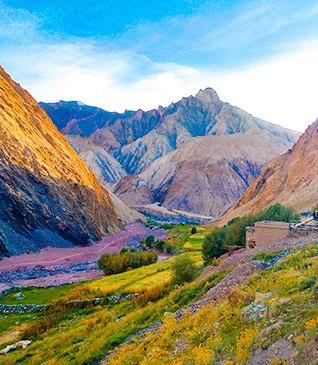
Markha Valley Trek
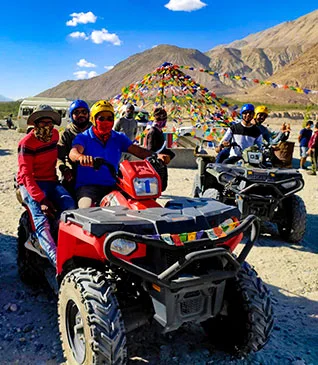
Leh Ladakh Multi-Sports Trip
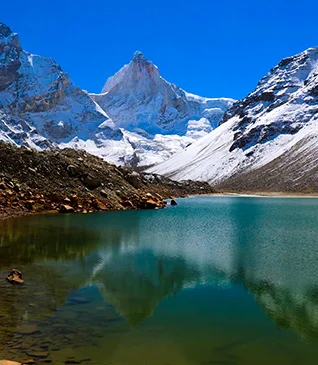
Kedar Tal Trek
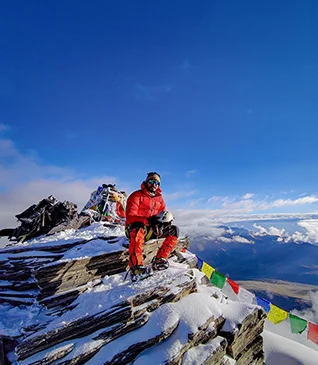
Kang Yatse II Peak Trek Expedition
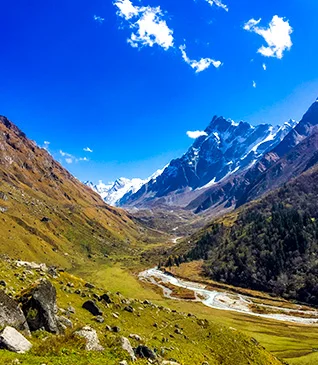
Har Ki Doon Trek
.webp)
Hampta Pass Trek
.webp)
Gaumukh Tapovan Trek
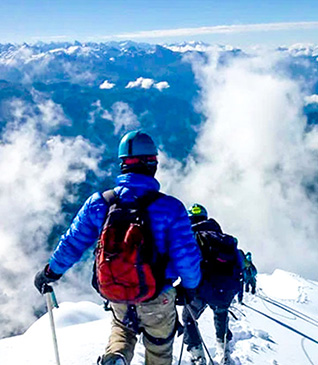
Friendship Peak Expedition
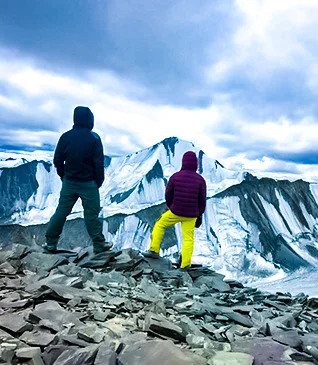
Dzo Jongo Peak Trek Expedition
.jpg)
40 Best Himalayan Treks in India for 2024
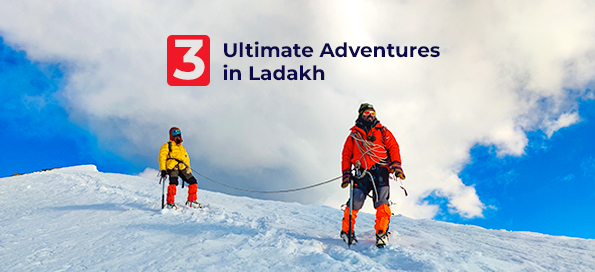
3 Ultimate Adventures in Ladakh
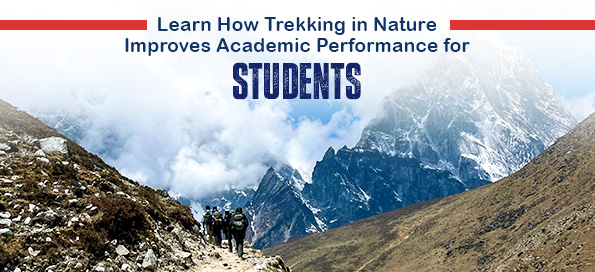
Learn How Trekking in Nature Improves Academic Performance for Students
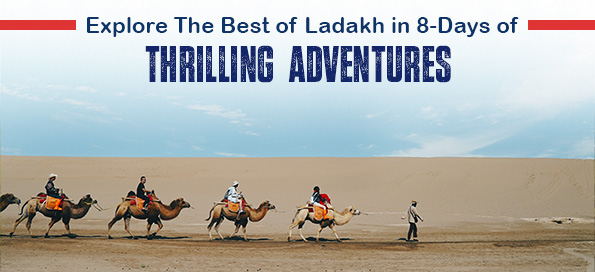
Explore The Best of Ladakh tour Package in 8-Days of Thrilling Adventures
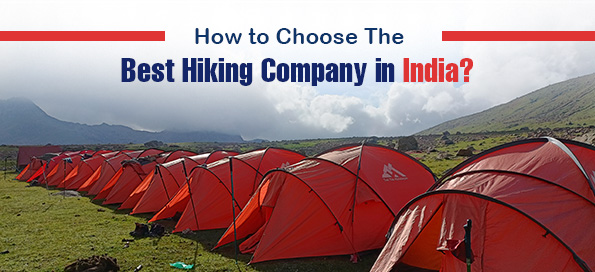
How to Choose The Best Hiking Company in India?
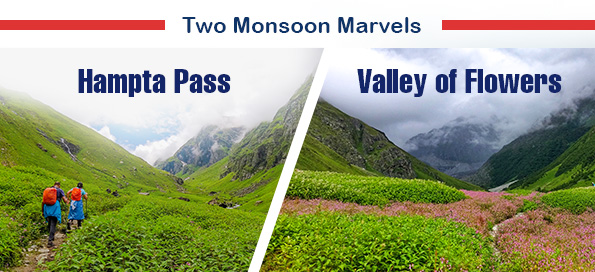
Two Monsoon Marvels – Valley of Flowers & Hampta Pass Trek
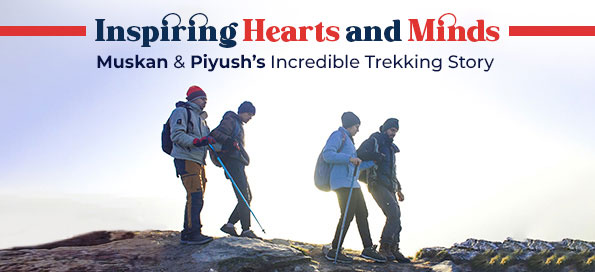
Inspiring Hearts and Minds – Muskan & Piyush’s Incredible Trekking Story
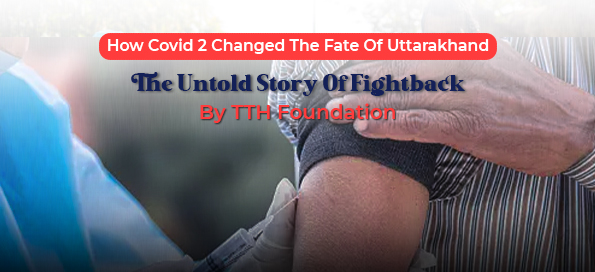
How Covid 2 Changed The Fate Of Uttarakhand & The Untold Story Of Fightback By TTH Foundation
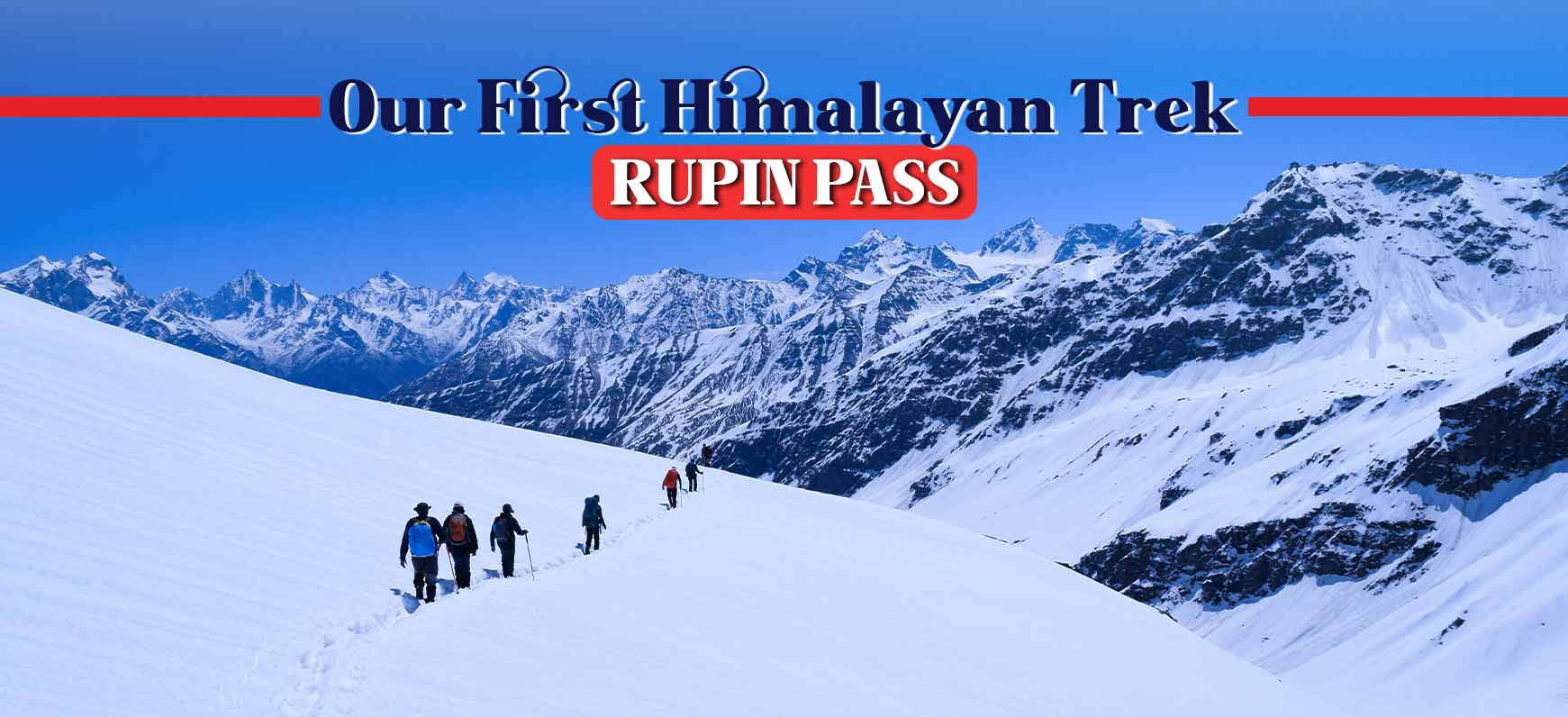
Our First Himalayan Trek - RUPIN PASS Trek
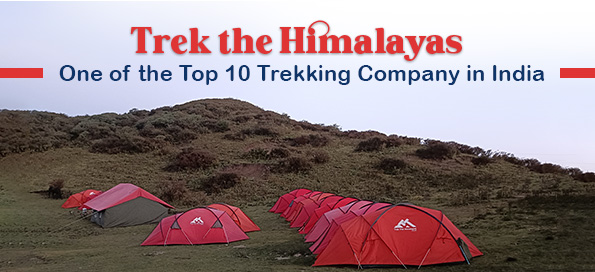
Trek The Himalayas - One of the Top 10 Trekking Company in India
Rent A Gear
Trek Articles
Quick Links
Trekking & Hiking
Mountaineering
Multi Sports
Himalayan Pilgrimage
Website Privacy
Terms & Condition

Contact Info
Get in touch with us. E-mail us Monday-Saturday (10 AM to 6 PM)
Address: Trek The Himalayas, Kaintura Plaza, Badrinath Road Tapovan, Rishikesh - 249201 Uttarakhand
Phone: 8191004846
Email: [email protected]
2010 Trek The Himalayas. All rights reserved
When is the Best Time to Climb Kilimanjaro?
March to December is my favorite time to climb Kilimanjaro. You get the best balance of decent weather and smaller crowds.
Mount Kilimanjaro is Africa’s highest peak, soaring into the skies at 5,895 meters high. It’s also the tallest freestanding mountain in the world (meaning it’s not part of a mountain range), and it’s one of the Seven Summits.
If you’re eager to climb this snow-capped peak, I don’t blame you one bit—that’s a lot of bucket list items to tick off the list!
Mount Kilimanjaro is a dormant volcano, and it’s considered to be one of the most accessible major mountains to climb for anyone with a little bit of determination…but that doesn’t mean it’s easy. Preparedness is absolutely essential.
One of the things that will make your life easier? Knowing the best time to climb Kilimanjaro. In this article, you’ll learn everything you need to know about when you should hit the trail and how to set yourself up for success.
What to Know Before Your Kilimanjaro Trek
Before you begin your trek, it helps to know a little about Kilimanjaro National Park (where Mount Kilimanjaro is obviously located). The name “Kilimanjaro” itself is a bit of a mystery; it possibly means Mountain of Light, or maybe Mountain of Greatness…but no one really knows for sure.
Moshi is the closest town to Mount Kilimanjaro, and tends to be the starting point for both Tanzanian safaris and climbing trips up the mountain. From here you can gaze upon the snowy summit of Kilimanjaro with its glaciers shimmering above the clouds, and ready yourself for a spectacular journey.
Kilimanjaro is called a stratovolcano, which means a very large volcano made of rock, ash, and lava. It has three different cones (Kibo, Mawenzi, and Shira), with Kibo being the summit.
While the others are extinct, Kibo is actually dormant and may erupt again someday—but don’t worry, it last erupted 360,000 years ago, so it’s probably not going to happen again anytime soon.
It’s not possible to climb Kilimanjaro without a guide or small expedition, so do your homework beforehand. Pick a reputable tour company with a high success rate. You’re much more likely to have a successful summit if you’re being guided by skilled experts.
Which Route is the Best for Climbing Kilimanjaro?
There are actually seven different Kilimanjaro routes you can take to reach the summit of Uhuru Point. They all eventually converge into one route to reach the top, but each route is very different.
Here are some of the main routes for you to consider:
The Machame Route
The Machame Route is a popular route because although it’s one of the “shorter” ones (seven days), it has an excellent summit success rate of 60% (this means that 60% of climbers will reach the summit, mostly thanks to the extra time to acclimatize). The flip-side is that it’s also a very challenging route. The scenery is some of the best, and you’ll trek through the lush rainforest zone giving way to sweeping views over the mountain, so that kinda makes up for the struggle.
The Marangu Route
While the Machame Route is often called the “Whiskey Route,” the equally popular Marangu Route is referred to as the “Coca Cola Route” because it’s considerably easier. It’s less steep, and also shorter. However, because of its short length, the success rate isn’t as high. This route also has the option of sleeping in huts rather than tents.
The Lemosho Route
The Lemosho Route is longer (10 days) but easier for anyone with less trekking experience, and the scenery is just as beautiful as Machame. Since it’s not as popular, it’s also a quieter trek. However, the Lemosho Route is not the best route if you have time restraints.
The Rongai Route
This is the only route that approaches from Kenya’s side. Rongai has options for quicker (or slower) ascents, but with the opportunity to see wildlife like elephants and buffalo. You can hike this one in 6-8 days.
The best time to climb Kilimanjaro all comes down to finding the best weather conditions for your trek along with figuring out your tolerance for a crowded climb during peak season. After all, over 30,000 people attempt climbing Mount Kilimanjaro every year! That’s a lot of foot traffic.
Fortunately, Kilimanjaro’s location near the equator means that this area does not have the extreme highs or lows in temperature like North American summers and winters, but there are definitely distinct dry and wet seasons.
Kilimanjaro Weather Month-by-Month
The warmest, driest months make an ideal time to summit. Take it from me, you don’t want to be scaling a mountain in a downpour while carrying a load of equipment.
Trekkers also avoid the rainy season due to safety issues. Landslides and interrupted routes can be detrimental to your ascent, and your body will take a beating in the wet onslaught.
Although you’re able to climb Kilimanjaro year-round, not all seasons are created equal. Let’s break it down throughout an entire year.
Mid December to March
Mid December/January through mid March are the warmest months for your journey, usually with clear skies in the mornings and evenings. It may rain sometimes throughout the day, but showers tend to be brief and warm. If you carry along some rain gear, you’ll be just fine.
There’s a good chance of snow being on the summit during this time as well, making for some awesome photography. I prefer this season for tackling treks like Mount Kilimanjaro: it’s technically still the “high season,” but it isn’t as busy with other hikers as later in the year.
March to June
The end of March to June is the long, rainy season and isn’t recommended for climbing Kilimanjaro during this time, unless you’re a very experienced hiker. Visibility is low; on the upside, you’ll have the mountain almost all to yourself. I’m not sure if that’s such a tradeoff if you can’t actually see anything. Plus the trail gets super muddy. Many guides will not even offer to take you on the trek during this time.
June to October
Mid June to October is when the coldest temperatures hit, so if you enjoy the crisp weather, this may be an ideal time for you. It’s super dry during this time so you don’t have to worry too much about rain.
From the middle of June to October is also the busiest season of all for climbing Mount Kilimanjaro, particularly on the Marangu and Machame routes, and especially since it’s summer holidays for North America and Europe.
November to Early December
This is the short rainy season on Kilimanjaro, with plenty of short rains in the afternoon, and isn’t a good time to be climbing. I suggest avoiding this time altogether.
Kilimanjaro’s Five Climate Zones
Mt Kilimanjaro has five different climate zones, which also affect your climb depending on the time of year. For example, the lower slopes are known as the Cultivation Zone because they’re used for farmland (including coffee and banana crops)—during the rainy seasons, rivers may form in the run-off from the rainfall.
Next, still in the lower altitudes, you’ll find yourself in the lowland Rainforest Zone which is dense and full of wildlife like monkeys and antelope. This zone provides good cover from the glaring sun when temperatures are high.
Vegetation starts thinning out in the Heath and Moorland Zone as you leave the rain forest, and this is when temperatures start to drop. The Alpine Desert Zone is dry and cold, and finally, the last zone is the Arctic Summit zone. It’s more barren and rocky near the top, but the views are unobstructed, especially with clear skies.
The Arctic Summit zone is where you’ll experience extremes and colder weather, as temperatures often drop below freezing year-round and bad weather is more common. But during the day you might experience temperatures over 95°F (95°C), with extreme radiation from the sun.
Knowing what to expect in each of these climate zones will help you prepare for a comfortable trek.
Kilimanjaro Full Moon Summits
If you can arrange your Kilimanjaro summit to happen during the full moon (occurring once a month), I strongly encourage you to do so!
The light from the full moon lights up Kilimanjaro’s peak and its glaciers, offering a spectacular, glittery view that you’ll remember for the rest of your life. Other than the magnificent moonlit display, the full moon also provides a well-lit path for your summit attempt (as long as the visibility is good with minimal cloud cover).
If you’re doing a full moon summit, you’ll want to book your guide well in advance of your full moon date as those dates tend to fill up quickly.
For a seven-day climb, you should leave five days before the full moon, but your guide or tour operator will know this anyway. They’ll be able to help you plan the right timing.
This also means you get a lot of people on the mountain for this climb. Whether you choose to summit during a full moon or not is entirely up to you, and either way you’ll love the experience. Just do your research beforehand to determine the exact full moon date.
New Moon Summits
Something to keep in mind on your Kilimanjaro trek if you’d like to do a full moon summit night: the ultra bright moon date can be very disruptive to sleeping, and you won’t get to experience the starry skies.
If you really want to experience the magic of starry African skies, do a new moon climb instead. Especially if you’re into time-lapse photography or night photography.
New Year’s Eve Kilimanjaro Climbs
Why not start off a new year by summiting Uhuru Peak? For some people, this is the best time to climb Kilimanjaro simply because you’ll reach the peak as the sun comes up on a new year.
There’s something symbolic about such a feat, especially since most New Year’s Eves are spent popping champagne bottles and getting boozy.
If you plan to climb Kilimanjaro this time of year, book in advance. As it turns out, trekking Kilimanjaro makes for a popular New Year’s resolution.
Kilimanjaro Safety & Trail Conditions
It’d be remiss to talk about climbing Kilimanjaro without actually mentioning safety and trail conditions along the way, especially considering this is the tallest mountain in Africa.
And, despite Kilimanjaro being one of the most accessible mountains out there for the average joe, it doesn’t mean it’s easy. You will 100% encounter some challenges along the way. It’s all part of the journey, but let’s keep the journey safe.
Here are some things to keep in mind:
- If you’re an inexperienced climber, stick to climbing Kilimanjaro in the dry season. Slippery trails and mud will not be easy for you to navigate if you’ve never really encountered this kind of terrain before. You’ll be less stressed out during the final ascent, and way more comfortable.
- Hire a reputable guide. Kilimanjaro guides take your safety very, very seriously and they will not put you in harm’s way. Remember, the most experienced guides have done this hundreds of times! Your guides will keep a keen eye on the weather forecast and any other dangerous conditions that may pop up. Do your research beforehand.
- Summit at night. Most guides recommend tackling the seven hour summit just after midnight, so you’ll be there when the sun comes up. It’s also easier to climb the mountain when the rocky pathway is still frozen, and then you’ll have a full day to descend to safer altitudes. Yes, it’s hard to imagine climbing after midnight, but this is in fact the best way to do it!
Altitude on Mt Kilimanjaro
Climbing Africa’s highest peak means you’ll be ascending 5,895 meters…and the effects of altitude usually kick in around 3,000 metres (and sometimes as low as 2,500 metres for certain people).
Unless you’re an experienced climber, your route is designed in such a way that you have time to acclimatize as you ascend the mountain.
However, altitude sickness is still the most common thing that prevents people from summiting.
If you’ve never dealt with altitude sickness, consider yourself lucky; it feels quite a bit like a hangover with headaches, fatigue, nausea, and dizziness. This is why people who are prone to altitude sickness tend to go the longer routes (like the Lemosho Route), because a more gradual ascent means you have time to acclimatize.
Summing Up the Best Time to Climb Kilimanjaro
Let’s sum up the best time to Climb Kilimanjaro.
From January to early March and then June through October are the busiest times to be on the mountain due to the most favorable weather. But even then, it’s mostly the Machame and Marangu routes that get the most traffic. You can actually have a more pleasant, relaxed experience on one of the less busy routes like Rongai or Lemosho, where you won’t be competing for the best vistas (and there’s plenty of amazing views).
But the shoulder seasons (just before and after the rainy season) are also excellent times to climb Kilimanjaro with fewer crowds, if you don’t mind some light afternoon rains and sometimes cold temperatures. With the right travel gear, this shouldn’t be an issue—you’ll be perfectly comfortable as long as you’re nice and dry.
The Rongai Route or the Northern Circuit on the northern slopes of the mountain offers the most shelter from the rainfall during the short rainy season if you’re absolutely set to climb Kilimanjaro during this time.
No matter when you plan on climbing Kilimanjaro, When you’re standing at Uhuru Peak on top of Kilimanjaro watching the sun roll across the clouds, with the glacial ice shimmering in the early morning light, it’ll all be worth it.
Climbing Kilimanjaro FAQs
How long does it take to climb mount kilimanjaro.
Climbing Kilimanjaro is different for everyone, but most people take between five to nine days depending on the route and their level of fitness.
Is it hard to climb Kilimanjaro?
Kilimanjaro is one of the most accessible mountains, but it is still a difficult high-elevation climb.
What Should I Pack to Climb Mount Kilimanjaro?
Be prepared for all weather conditions and all possible situations, whether it’s wet season or just generally colder than normal.
How much money does it cost to climb Kilimanjaro?
It can cost anywhere between $1,400 to $7,000 to climb Kilimanjaro. An unlicensed guide may offer you less money, but I recommend climbing Kilimanjaro with someone who’s legit. Don’t risk it.
When is the best time to travel to Tanzania?
Tanzania’s long dry season from July to September coincides with excellent opportunities for safaris, seeing the Great Migration, and chilling out one of Zanzibar’s pristine beaches.
Candice Walsh
Your email address will not be published. Required fields are marked *
Search our latest articles, reviews and gear guides
- TravelFreak on Instagram
- TravelFreak on Facebook
- TravelFreak on Twitter
- TravelFreak on Pinterest
Sign up now and get the best gear, travel tips, deals and destinations, straight to your inbox.
Thank you for signing up!
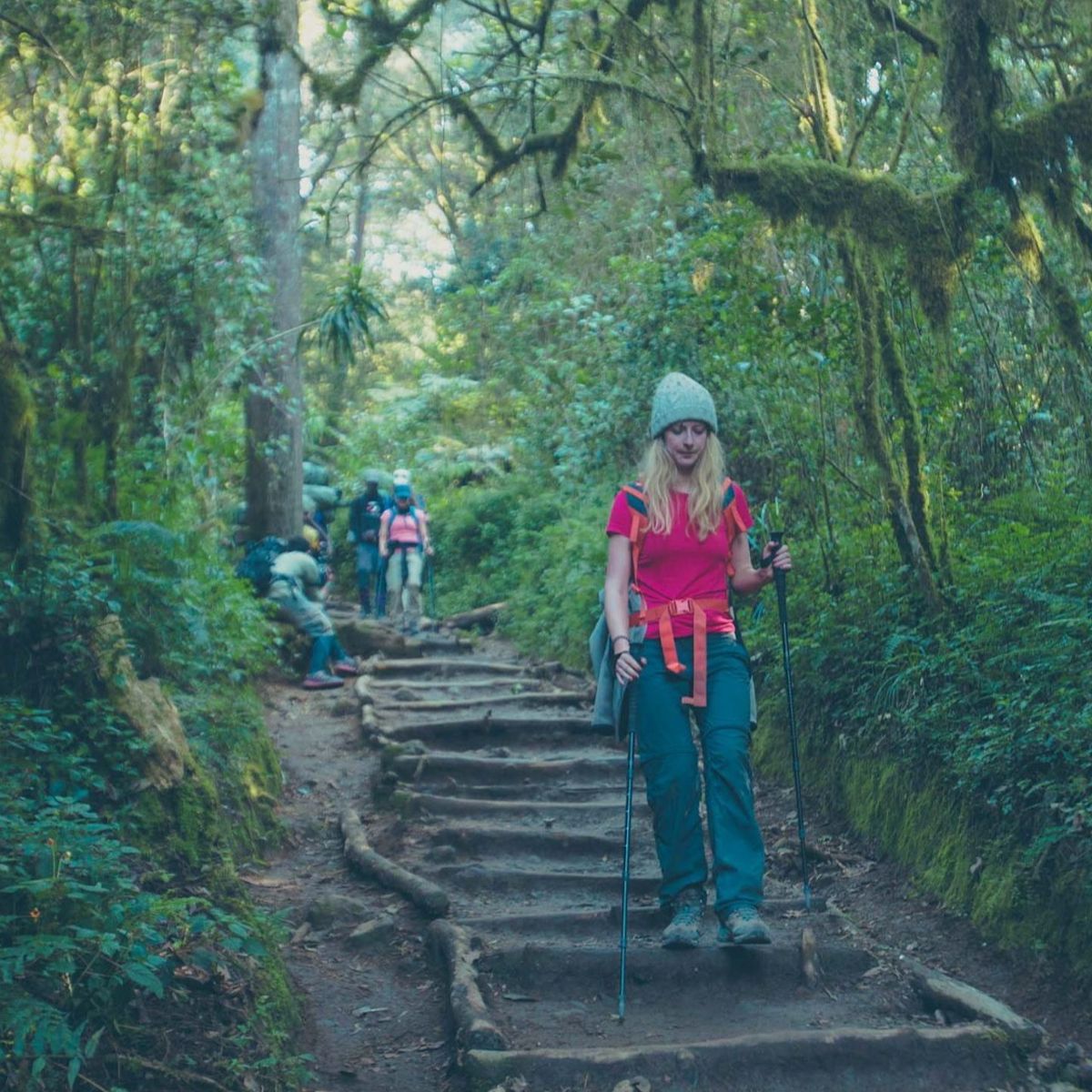
Best time to climb Kilimanjaro – a comprehensive look at all 4 seasons
You can climb Kilimanjaro at any time of the year. But we recommend December to early March or mid June to October for the best weather conditions. Please read on for more detail about the different seasons ....
An important part of anyone's Kilimanjaro preparation is choosing a time of year to climb the mountain. While you can climb Kilimanjaro any time of year, some months are just better than others.
We aim to help you choose the best time of year for you to climb the mountain by offering our cumulative expert advice, which is based on many years of trekking Kilimanjaro.
Which are the best months for climbing Kilimanjaro?
The best periods for climbing Kilimanjaro are:
- The short dry season between mid December and March
- The long dry season between June and mid October
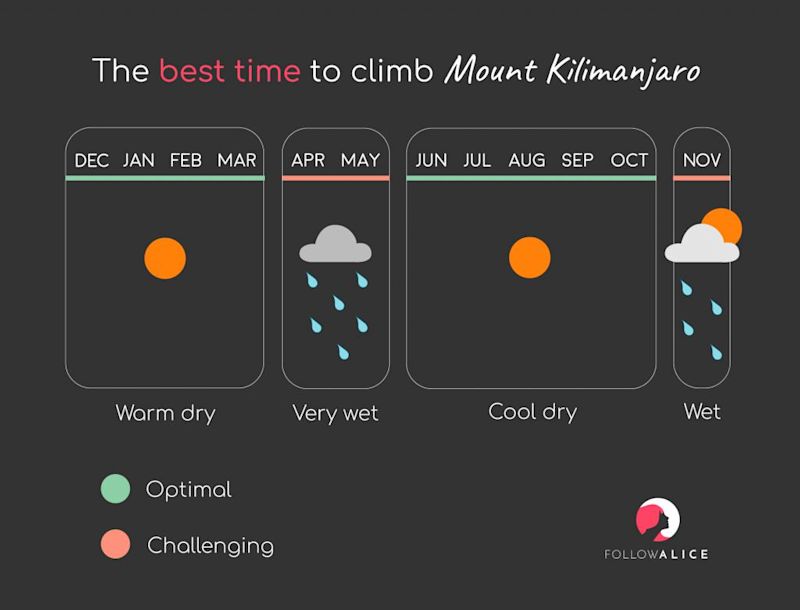
Graph showing Kilimanjaro seasonal patterns
The short dry season: Mid December to March
Late December, January, February and March are great months for climbing Kilimanjaro. For starters, while there's usually some rain during this season, it's neither frequent nor extreme.
Another good reason for climbing during this season is that you could be climbing to the summit in snow ! Snow on the summit is, of course, very beautiful.
The summit of Kilimanjaro also isn't as cold during the short dry season as it is at other times of the year, as we discuss in How cold is the summit of Kilimanjaro? So this is another bonus of trekking at this time of year.

You're likely to have a snowy summit if you trek Kilimanjaro between late December and March
Please note that December generally sees the most snowfall on the summit. While it can be incredibly beautiful to walk in fresh snow, it does mean you might not have a clear view from the summit over the surrounding landscape if there's snowfall at the time.
Another reason why this is a good season for climbing Kilimanjaro is that it's not quite as busy as the long dry season. This means quieter trails and campsites, which for some is a plus.
If you're really not keen on crowds and would like to trek during Kilimanjaro's short dry season, we suggest that you steer away from the busier routes like the Marangu and the Machame . Better options for a quieter climb are the Lemosho , the Shira and especially the Northern Circuit .
The long dry season: June to mid October
June to October are arguably the best Kilimanjaro hiking months as there's little rainfall and less cloud coverage at this time, which means you should be treated to sprawling views over the African plains from all the different climate zones of the mountain ! This time of year also tends to offer the crispest views from the summit!
Another factor making this a great season for climbing Kilimanjaro is that it's not so hot and humid during the day in the rainforest as it is during the short dry season.
A downside, however, to climbing during these months is the crowds. One reason for this being Kilimanjaro's busiest season is that these months coincide with the summer holidays in Europe and North America. Perhaps consider December to March if you'd like a less crowded climb.
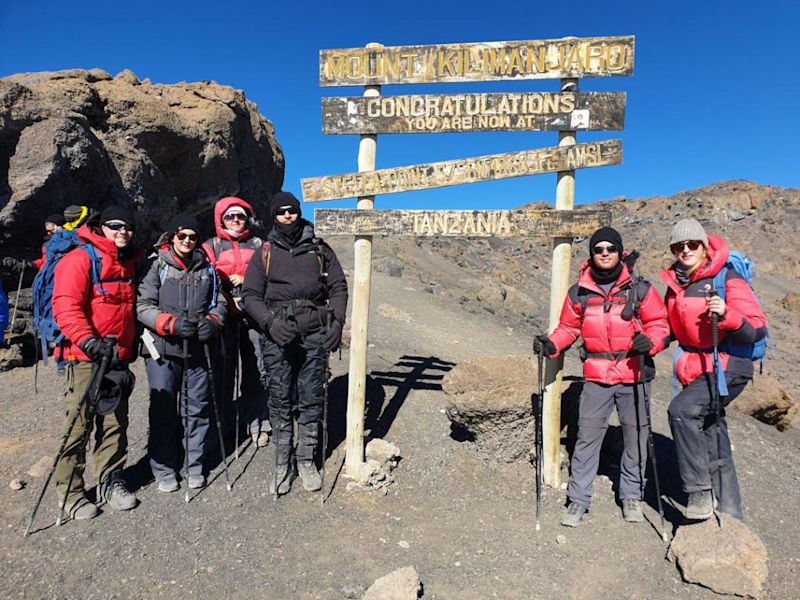
The top of Kilimanjaro is usually at its coldest in June and July
Finally, another possible downside to trekking during the long dry season is that the summit is the coldest during these months. June to July tend to have the meanest conditions at the summit, so if you'd like to climb Kilimanjaro during the long dry season, we suggest booking your spot for August, September or early October.
Can I climb Kilimanjaro during the rainy seasons?
Yes. Many people trek Kilimanjaro during the rainy seasons. That said, November is particularly quiet on the mountain, as it's one of the rainiest months, and so that's often when mountain crews do volunteer clean ups .
Here are some more details about the rainy seasons, as well as some suggestions as to your route should you want to climb during one of the wetter months.
The long rainy season: April and May
Late March, April and May make up the long rainy season on Kilimanjaro. The days can be very hot (as well as humid), especially in the rainforest, which some find irksome. Further, these are the wettest months, and you could end up trekking through downpours.
One of the downsides of trekking Kilimanjaro during a rainy season is that you must sometimes navigate muddy and slick paths, which increases the chances of injury.
All that said, you can still climb Kilimanjaro at this time of year, and one perk is that the mountain is less crowded.
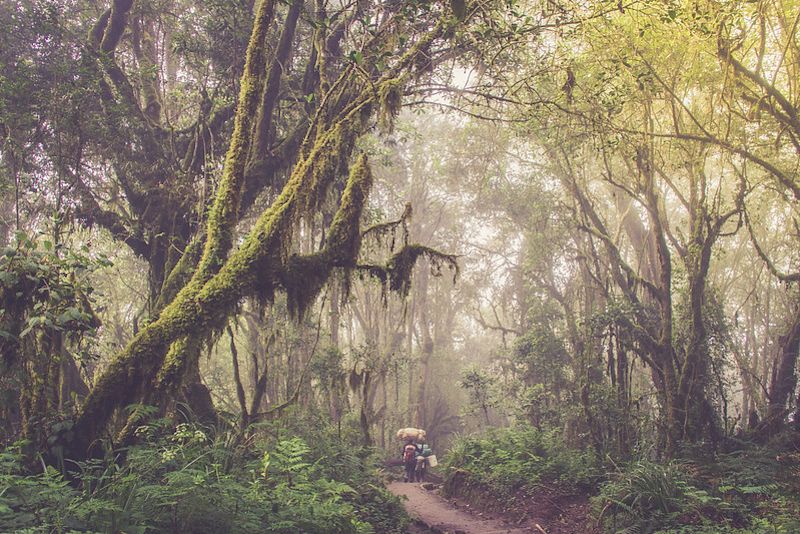
It's the rainforest zone where (surprise, surprise!) most of the mountain's rainfall occurs
The short rainy season: November to mid December
November is one of the least comfortable months to climb Kilimanjaro in terms of the weather lower down on the mountain. This rain can also sometimes extend into early December.
The short rainy season sees some intense downpours in the rainforest zone of Kilimanjaro. Not only does this mean have to trek in the rain, kitted out in rain gear, but the ground can also become slippery and treacherous. This is perhaps even more of an issue when you descend the mountain near the end of your trek.
It can also be pretty hot and steamy during this season. And when it's raining or very hazy then you don't get to enjoy the incredible views that are synonymous with a Kilimanjaro climb!
For all of these reasons we don't consider November and the first half of December to be ideal Kilimanjaro climbing weather.
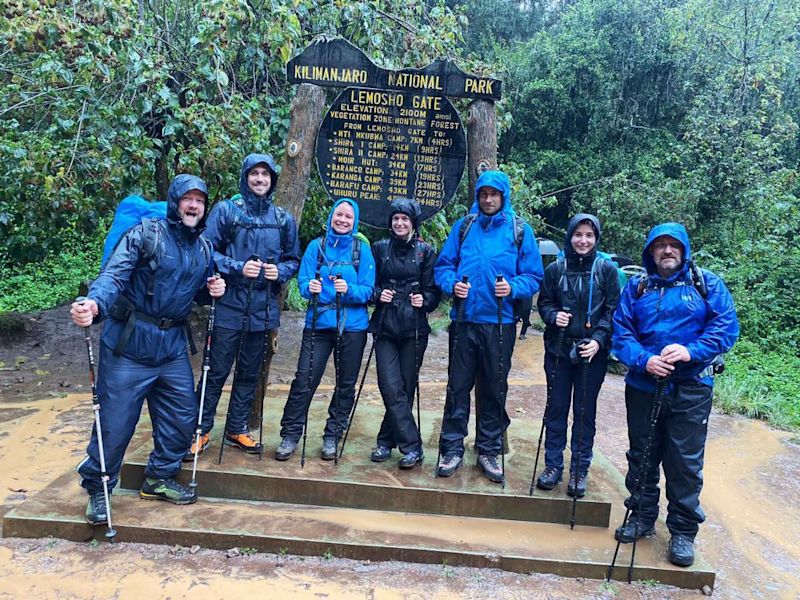
The rains only really affect the lower portion of the hike as you walk through the mountain's rainforest belt
All that said, the mountain can still be climbed at this time of year if you wish. You might like to read Arwa Mrad's Kilimanjaro journal to see how she and her partner found hiking the Lemosho route during the short rainy season.
The mountain is also at its quietest during the short rainy season, which some find to be a plus.
If your schedule dictates that you need to tackle your Kilimanjaro adventure at this time of year, then you might like to consider trekking the Rongai route as this trail on the northern slope receives less rainfall on average than the other Kilimanjaro routes which ascend the west or south of the mountain.
Should I make an effort to do a full-moon summit?
Kilimanjaro trekkers start their summit attempt at midnight, but most do so by the light of their headlamps alone. The fortunate few, however, get to hike under the bright light of a full moon!

A full moon summit climb is incredibly beautiful
Kilimanjaro full moon climbs are a special and incredibly beautiful experience. Instead of trekking for hours in darkness, you see the dramatic, nighttime world of the mountain's summit, something few ever will!
Please chat to us if you'd like to arrange to climb Kilimanjaro during a full moon!
Remaining 2024 full moon dates
- 18 September
- 16 November
- 15 December
Can I summit Kilimanjaro on New Year's Eve?
Can you imagine a better – or more novel! – way to bring in the new year than from the highest peak in Africa? A New Year's Eve climb takes place during the short dry season on Kilimanjaro, and so is one of the best times to climb Kilimanjaro.
– Stephen Hemmings
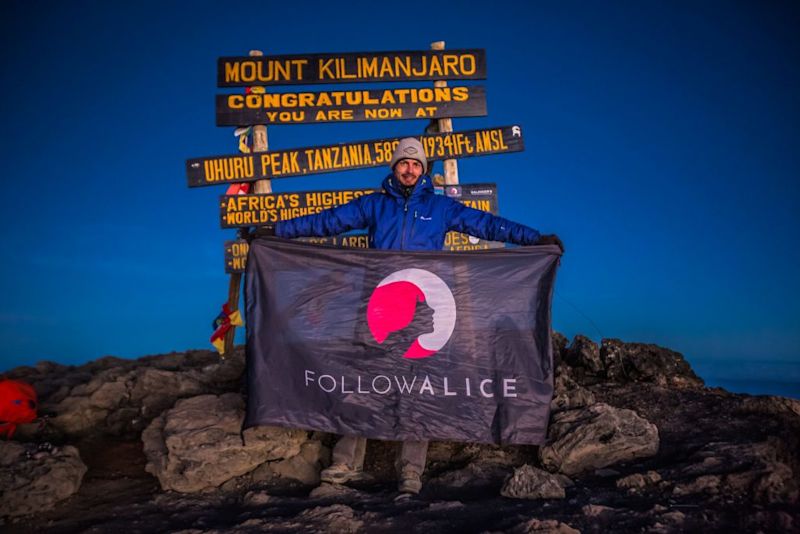
Keen for your turn at the very top of Africa?!
Finally, if you're thinking of spending some time in Tanzania either before or after your Kilimanjaro climb, you may also want to research The best time to travel in Tanzania .
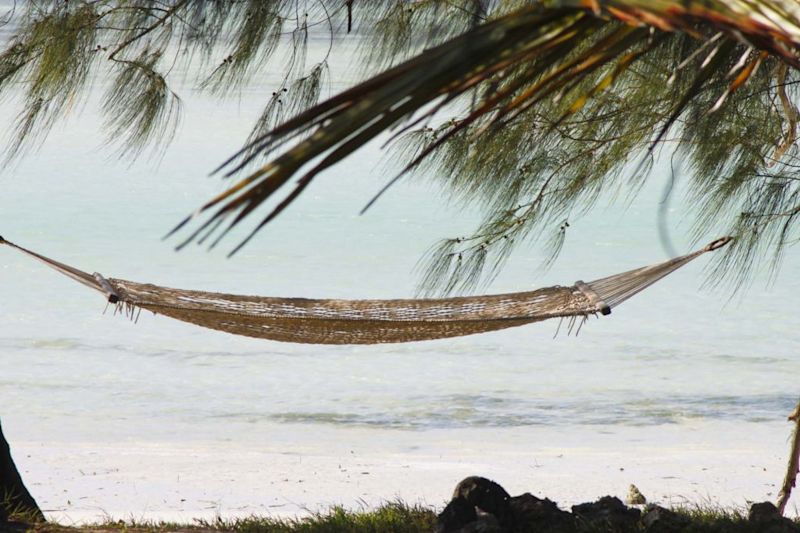
After climbing Kilimanjaro, it can be sheer bliss to laze on a beach in Zanzibar!

Username or E-Mail
Forget Password?
Do not have an account?
After creating an account, you'll be able to track your payment status, track the confirmation and you can also rate the tour after you finished the tour.
Already a member?
- Trekking and Hiking
- Climbing and Expedition
- Cultural and Historical Tours
- Nature and Wildlife
- Religious and Spiritual Tours
- Cycling and Mountain Biking
- Multiple Activities
- Adventure Sports
- Voluntourism
- ACTIVE ADVENTURES
- EXTREME ADVENTURES
- LUXURY TOUR
- Family Holiday
- MULTIPLE COUNTRY
- SCHOOL TRAVEL
- ECO FRIENDLY
- Why Himalayan Glacier?
- Awards and Recognitions
- Latest Trip Review
- Travel Blog

- TREKKING AND HIKING
- CLIMBING AND EXPEDITION
- CULTURAL AND HISTORICAL TOURS
- NATURE AND WILDLIFE
- RELIGIOUS AND SPIRITUAL TOURS
- CYCLING AND MOUNTAIN BIKING
- MULTIPLE ACTIVITIES
- ADVENTURE SPORTS
- VOLUNTOURISM
- Nepal Travel Guide
- Nepal Travel FAQs
- Tibet Travel Guide
- Tibet Travel FAQs
- Bhutan Travel Guide
- Bhutan Travel FAQs
- India Travel Guide
- India Travel FAQs
- Tanzania Travel Guide
- Tanzania Travel FAQs
- Multiple Country
+1-410-307-0007
- Plan Your Trip
What is the best time to climb Mount Kilimanjaro?
Experience the enchanting trekking trail of Mt. Kilimanjaro, adorned with pristine wildlife and offering awe-inspiring panoramic views. Africa’s prominent peak is famous for its topographical diversity, with snow-capped mountains towering over the savannah. This famous African peak has a lot to offer in all seasons, but there is a specific best season to climb the Uhuru Peak. The best time to climb Kilimanjaro is during the months of late June to October and from December to February .
Outspokenly, the trekking trail of Kilimanjaro is an incredible challenge, even for an enthusiastic traveler. Different routes and tracks while ascending Africa’s highest mountain takes you over grasslands, tropical rain forests, alpine meadows, desert, moorlands, and snow. The weather conditions at Mt. Kilimanjaro differ throughout different seasons.
Himalayan Glacier also offers a combination package of Kilimanjaro climb and Luxury Safari in Tanzania , a trip filled with picturesque landscape, pristine wilderness, and a unique and remote Tanzania’s lifestyle.
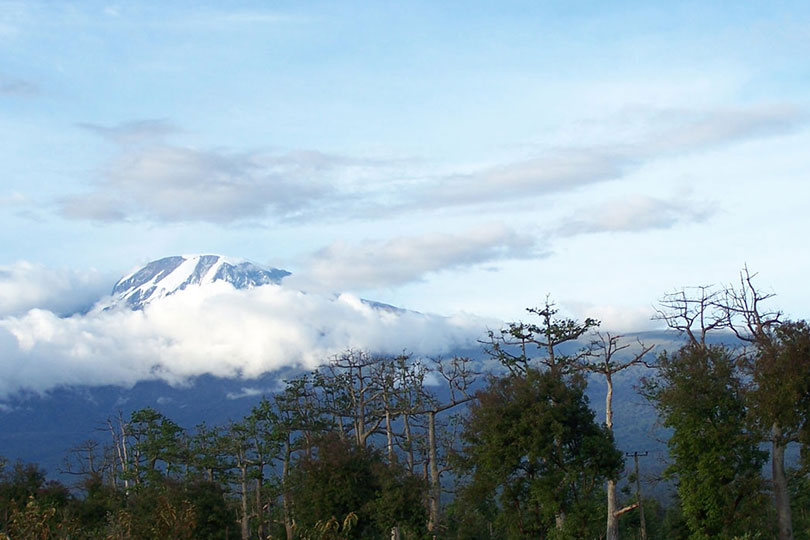
Not just that, you will also pass through the desert, moorlands, and snow. And a chance to behold the remote and culturally rich lifestyle of Tanzania. For example, the Kilimanjaro Lemosho Route has stunning landscapes throughout the trail and the path of the Rongai Route passes through the remote areas of Tanzania.
The Kilimanjaro Machame Route has terrains and stunning vistas while Marangu has breathtaking views of Mawenzi and Kibo Peaks. Watch out for some features of these climate zones.
The table below gives you a general view of the weather condition, and the crowd on Mt. Kilimanjaro climb in different months.
Climate Zones of Kilimanjaro
Packing for each climate zone, best time of year to climb kilimanjaro, climbing kilimanjaro in january and february, climbing mt kilimanjaro in march, april & may, climbing kilimanjaro in june, kilimanjaro climbing in july, august, september, and october, climbing kilimanjaro in november and december, popular full moon climb to kilimanjaro, high season to climb mount kilimanjaro, low season for mt. kilimanjaro, kilimanjaro trail and safety conditions, which is the best route for mt. kilimanjaro, how difficult is mt. kilimanjaro climb, how can you prepare for mt. kilimanjaro climb.
For every adventure lover, ascending Uhuru Peak is the most desirable thing to do. However, before the climb, you have to analyze the weather conditions on the mountain. In addition to that, the Kili region has a wide variety of climatic zones, which have entirely different climates from each other. An avid adventurer, before planning the trip, would definitely seek information regarding the best time of year to climb Kilimanjaro .
Rain Forest Zone – The first part of your journey to the top of Africa covers the rain forest. Climate is misty, and sometimes drizzling is common in this region. Various flora such as orchids, ferns, and fig and olive trees cover this area of Mount Kilimanjaro.
Alpine Zone – The alpine zone is dominated by an unfriendly upland desert climate. The sun shines with high temperatures during the daytime, but temperatures dip below freezing throughout the night.
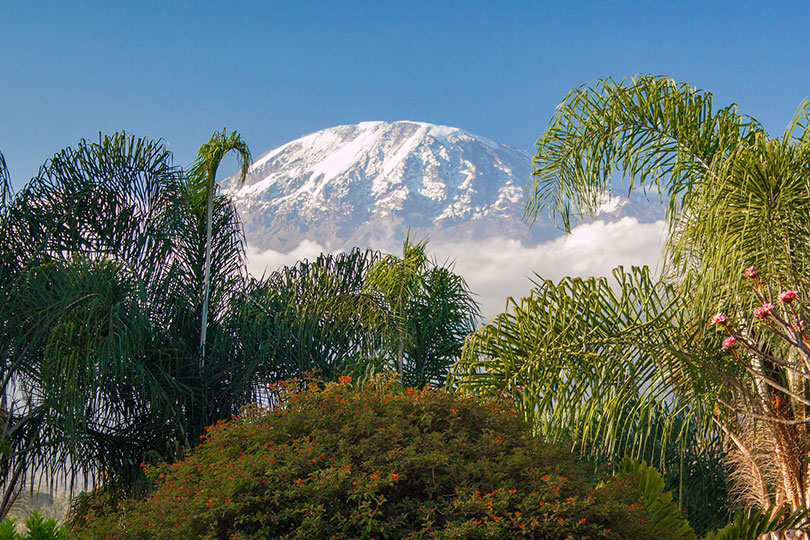
High Alpine Zone – The alpine zone is dominated by an unfriendly upland desert climate. The sun shines with high temperatures during the daytime, but temperatures dip below freezing throughout the night.
Glacial Zone – The last zone is glacial, where the oxygen rate is half as much compared to the lower area of the African peak. It is not the kind of place you want to hang around for a long time.
Although Kili has a rainy climate, several months are suitable to climb or to trek. Moreover, we have presented the weather and climate scenario of different months to make it easy for you to choose the best time to climb Kilimanjaro .
When packing for a hike on Kilimanjaro, it’s important to consider the different climate zones you’ll be passing through. The mountain has five different climate zones, each with its own unique conditions and temperature range.
The tropical rainforest is hot and humid, and temperatures can reach up to 30ºC (86ºF). Lightweight, breathable clothing is recommended, as well as a rain jacket or poncho for unexpected rain showers. Insect repellent, sunscreen, and a wide-brimmed hat are also essential items to pack.
In the montane forest area, the temperatures are cooler than the tropical rainforest, usually between 10 to 15ºC (50-59ºF). A warm, waterproof jacket and gloves are recommended, as well as a fleece or insulated layer for extra warmth. Trekking poles are also helpful for navigating the steeper terrain in this zone.
The heather and moorland zone is characterized by high altitude, cold temperatures, and strong winds. It’s important to pack warm clothing, such as a down jacket, thermal layers, and a warm hat and gloves. Gaiters and a waterproof shell are also essential for protecting against the wind and wet conditions.
It’s important to note that it’s better to pack items that are versatile and can be used in multiple climates. It’s also essential to pack enough clothing and gear to keep you warm and dry, as well as enough food, water, and first aid supplies for the duration of your hike.
The climb to Uhuru Peak is a once-in-a-lifetime experience that many people dream of. However, it’s important to choose the right time of year to tackle this challenging climb. The best time of year to climb Kilimanjaro is during the dry seasons of December to February and late June to October. These months offer clear skies and dry trails, making the climb easier and more enjoyable. Additionally, the temperatures during these months are much cooler, making it less strenuous on your body.
Another factor to consider when planning your climb is the crowds. Many people flock to Africa’s highest peak during the popular months of January and February, which can make the climb more crowded and less enjoyable. In general, these months are the best times to climb Kilimanjaro . To avoid the crowds, consider climbing during the shoulder seasons of March to May and November to December. These months offer similar weather conditions as the dry seasons and less people on the mountain, making for a more peaceful and enjoyable climb. Overall, the best time to climb Uhuru Peak is during the dry seasons, but the shoulder seasons are also a great option for those looking for a more peaceful climb.
The best time to climb Kilimanjaro is undoubtedly during January and February. In this season, the weather conditions are best for the climb. You get to treat yourself to beautiful morning views of the astounding Tanzanian landscape and natural beauty. However, during the afternoon, there is always a high chance of rainfall.

At the end of March, the rainy season starts in these regions. It is a long rainy season, which lasts until May. This season is inconvenient for climbing due to heavy rainfall.
The weather of Kilimanjaro in this season will not allow you to behold the picturesque view of Tanzania. In addition, the trekking routes of Kilimanjaro climb will become more difficult due to the constant rainfall.
The month of June is the transitional period. In this month, the rainy season transforms into a dry season, which brings drier weather. Moreover, in this season, you will see a clear, bright blue sky, but sometimes it does get cloudy as well.
In general, temperatures are cooler from July until late October and much humid than in previous months. You will feel more relaxed in your trekking journey as it passes through the paths of rainforest and moorland.
These months are prominent because the bright sunny sky and beautiful views of Africa’s unique topography will be your friend for the whole journey.
November is the beginning of Tanzania’s short rainy season and goes until December. During these months, afternoon rain is common. This season is ideal for trekkers and hikers, who wish to see clear views after rain during the climb. Meanwhile, December is also a popular time to trek Mt Kilimanjaro.
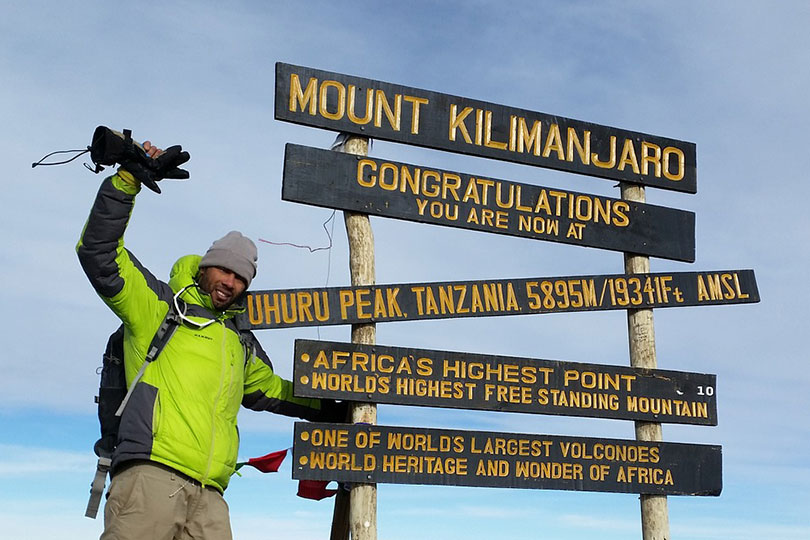
The Kili climb is famous during the full moon time. Many adventurers and nature lovers desire to make their trip during the best time to climb Kilimanjaro , and even better during full moon time. Traveling during full moon ejects bright moonlight that illuminates your destination with the glittering glacier. Journey during full moon unfolds astonishing views of Mount Kino with improved visibility.
Therefore, the majority of travelers love to climb the Tanzanian mountains during the full moon. And another meaningful reason for climbing Africa’s tallest mountain during the full moon is because of its glows that enhance the insights of the Kilimanjaro trekking passes, especially during your summit attempt.
Since Uhuru Peak lies near the equatorial region, it does not experience extreme winter or summer. Instead, the area is dominated by dry and wet seasons. The high season to climb Kilimanjaro is generally from December to mid-March and mid-June until October end.
Advantages of High season
- The high seasons offer favorable weather conditions, perfect for trekking and hiking.
- These seasons offer the treat of beautiful views of Tanzania.
Disadvantages of High season
- The biggest disadvantage of high season is the crowd it brings. Naturally, the high season brings along many fellow travelers, and the region gets pretty crowded.
The low seasons for Mt. Kili climb are the long rainy seasons that span from March to early June. It is better to avoid these months unless you are an experienced hiker who has trekked in similar conditions.
Advantages of Low Season
- Because of the low season, the mountain region gets very few travelers. As a result, you get to enjoy your trip more peacefully.
- The wet season unveils a different beauty of the Arusha region, which is worth keeping an eye on.
Disadvantages of Low Season
- Because of the rain, the trail gets pretty wet and slippery. Therefore, you have to extra careful with your pace.
- These seasons offer low visibility due to heavy clouds.
Kilimanjaro is one of the most popular hiking destinations in the world, but it’s important to be aware of the safety concerns and trail conditions before embarking on your journey. The most important thing to consider is altitude sickness, which can occur when hikers ascend too quickly and their bodies are unable to acclimate to the thinning air. To mitigate the risk of altitude sickness, it’s recommended to take a gradual approach, allowing your body time to adjust, and to consult with your doctor before your trip.
The trail conditions on Kilimanjaro can vary depending on the time of year and the route you take. During the rainy seasons, the trails can become muddy and slippery, making the hike more challenging. Additionally, some routes may be closed due to snow or ice, so it’s essential to check for trail updates before your hike. It’s also important to note that the final ascent to the summit is a technical climb and requires proper equipment and experience. Hiring a guide or taking a guided tour can help ensure your safety and provide valuable information about the trail conditions.
Frequently Asked Questions
One of the specialties of Kilimanjaro is the fact that it offers various routes for travelers. However, the best route to climb Mount Kilimanjaro is the Lemosho Route. This route offers the most beautiful scenic view and is also less crowded than the other routes. Further, it also has the best acclimatization, which increases your chance safe and successful ascent of the highest peak in Africa.
Apart from the Lemosho route, the Machame route is also a famous one. This route offers beautiful terrains and stunning vistas and is shorter than the Machame route. The other routes are the Rongai route, which passes through the remote areas of Tanzania, and the Marangu route , which has breathtaking views of Mawenzi and Kibo Peaks.
Naturally, if you are new to trekking, climbing Uhuru Peak will be a daunting task for you. However, it is not impossible, as the difficulty level is not extreme.
The biggest challenge is the altitude, but there are itineraries made with proper acclimatization points to tackle that. To get you into the bargain, many first-time travelers have successfully ascended Mt. Kili. Further, you also need to be physically fit, as the trip requires 6 – 7 hours long walks over the undulating ground for several days.
Mt. Kilimanjaro is physically challenging, but it’s not back-breaking. The trip doesn’t require specific mountaineering skills or technical expertise, but trekkers need to be physically fit and determined. An ‘I can do it!’ attitude is a must for this demanding trip.
To prepare for the climb, you can start basic physical activities a few weeks earlier. Some good options include going on short hikes, going to the gym, and running on tracks.
Climbing Mt. Kilimanjaro offers exceptional views of nature. This blog provides a general idea of the best time to trek around the world’s highest standing peak. If you’re planning to trek in this region, you’re welcome to talk to our experts who have helped numerous travelers explore the amazing beauty of the Kili trails.
You may also be interested in:

Recent Posts
- Mountain Climbing for Beginners: Choose the Right Mountain to Climb
- USA to Nepal Flight: Fly to the Land of Himalayas
- Best Time to Visit Ladakh: Discover the Finest Travel Season
- 13 Best Luxury Travel Destination in 2024
- Inca Trail vs. Salkantay Trek and Lares Trek: Choose the Best Route
Post by Categories
- Bhutan (38)
- Client Review (52)
- Climbing (5)
- Climbing and Expedition (47)
- Cultural and Historical Tours (59)
- Festivals (40)
- Guest Post (1)
- Health & Travel (4)
- Hotel and Tourism (7)
- Kailash (4)
- Nepal (160)
- Packing (6)
- Tanzania (31)
- Travel Blog (489)
- Travel Deals (1)
- Travel Gifts (1)
- Travel Tips (41)
- Trekking & Walking (106)
- Uncategorized (1)
- United States (4)
- Volunteering (1)

Planning a Trip?
We have a pool of travel experts working in this industry for more than a decade. Consult to get started.

- Best Hikes In The World
- Appalachian Trail
- European Hikes
- Nepal Hikes
- Patagonia Hikes
- See All Hikes
- Mount Kenya
- Mount Kilimanjaro
- Mount Toubkal
- See All Mountains
- South Africa
- New Zealand
- Switzerland
- United Kingdom
- Packing Lists
Northern Circuit Route – The Quietest Route to the Summit of Kilimanjaro
Africa , Kilimanjaro , Tanzania
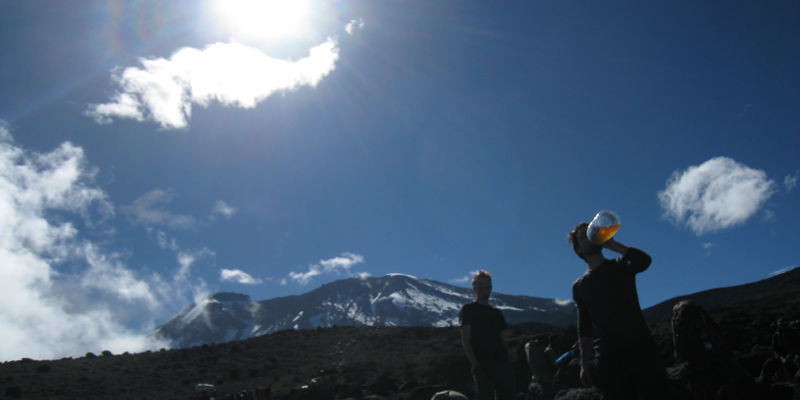
This page provides a comprehensive and impartial guide to climbing Kilimanjaro via the Northern Circuit.
Northern Circuit Kilimanjaro Route
The Northern Circuit, as the newest and longest route up Kilimanjaro, links together portions of several other routes. It is operated as an eight- or nine-day trek by most tour operators.
Success rates are relatively high for this route because trekkers have plenty of time to acclimatise.
Beginning in the West, the Northern Circuit follows the same route as the Lemosho Route for the first two days before veering north towards Lava Tower and around to the eastern side of the mountain.
Trekkers reach the crater rim at Gilman's Point and traverse around to Uhuru Peak before descending via either the Mweka or Marangu Route .
Typical Itinerary for Northern Circuit
The Northern Circuit Route is operated as an eight-day or a nine-day trek. Below is a detailed itinerary for the nine-day route. For details on the eight-day variation, see the Route Variations section below.
- Distance: About 5.5km, or 3 miles
- Trekking time: 3 to 4 hours
- Change in elevation: 460 meters
- Landscape: Rainforest
The Northern Circuit Route starts at the same point as the Lemosho Route, far on the western side of Kilimanjaro. The first day of trekking begins with a two-hour drive from Moshi, or a longer drive from Arusha, to Londorossi Gate (2,100 meters), where trekkers will be introduced to their crew, which includes guides, porters and cooks. Packs are weighed to ensure they don't exceed 20 kilograms, and the porters arrange all the gear needed for the days ahead.
After checking in at the park gate, trekkers will get back into the car to travel to the trailhead, which is a further 12 kilometers. This portion of the drive can be muddy and inaccessible during the wet season, so trekkers may have to walk a portion of this distance. Assuming the road is passable, then the day's trek is a short one, with about 460 meters of elevation gain to Mti Mkubwa Camp (2,820 meters).
Trekkers should keep their eyes peeled on the way - it is possible to see elephant or buffalo on this portion of the trail, and your group may be accompanied by an armed guide for protection! Trekkers arrive to the welcome sight of a fully-assembled camp, and dinner is served.
- Distance: About 8km, or 5 miles
- Trekking time: 5 to 6 hours
- Change in elevation: 790 meters
- Landscape: Rainforest: Low Alpine
Day Two sees trekkers making their way from Mti Mkubwa Camp (2,820 meters) to Shira Camp 1 (3,610 meters). The relatively short hike takes you through scenic rainforest which gives way to low alpine meadows and moorlands.
- Distance: About 7km, or 4 miles
- Change in elevation: 240 meters
- Landscape: Low Alpine: High Alpine
On Day Three, trekkers have a short hike from Shira Camp 1 (3,610 meters) to Shira Camp 2 (3,850 meters). At Shira Camp 2, trekkers are rewarded with their first views of the Kibo summit, and Mount Meru is visible in the East. Temperatures can drop quite significantly here on the plateau, so trekkers should be prepared.
Please Note: On the eight-day route, trekkers will continue past Lava Tower (4,600 meters) and drop down to Moir Camp (4,200 meters), where they will spend the night.
- Distance: About 14km, or 8 miles
- Trekking time: 5 to 7 hours
- Change in elevation: 750 meters ascent; 400 meters descent
- Landscape: Low Alpine; High Alpine
Trekkers climb up to Lava Tower (4,600 meters) on the morning of Day Four, where they will have lunch before descending to Moir Camp (4,200 meters) where they will sleep. This is a classic acclimatisation day, allowing hikers to "climb high and sleep low" in preparation for the summit bid in a few days' time.
- Distance: About 12km or 7 miles
- Change in elevation: 180 meters descent
- Landscape: High Alpine
A steep climb takes hikers out of Moir Camp (4,200 meters) in the direction of Buffalo Camp (4,020 meters). A short detour out of Moir Camp leads trekkers to the summit of Little Lent Hill (4,375 meters). Trekkers should have some time to relax after arriving at camp in the afternoon.
- Change in elevation: 220 meters descent
- Landscape: High Alpine; Low Alpine
On Day Six, trekkers continue hiking east around the northern edge of the mountain from Buffalo Camp (4,020 meters) towards Rongai Third Cave (3,800 meters). It is a further acclimatisation day with some downtime in the afternoon.
- Distance: About 15km, or 8 miles
- Trekking time: 4 to 5 hours
- Change in elevation: 1,000 meters
- Landscape: High Alpine; Glacial
Day Seven marks a transition from the hillside traverse of the last few days to a steady ascent. Trekkers will hike from the Rongai Third Cave (3,800 meters) through the Saddle between Kibo and Mawenzi Peak towards School Hut (4,800 meters). Try to get to bed early -- you'll be awoken before midnight to start your summit attempt! Prepare your gear before bed, including preparing some warm clothes, snacks, insulated water bottles and your headlamp.
- Distance: About 6km, or 3.5 miles ascent; 10.5km or 6 miles descent
- Trekking time: 6 to 8 hours ascent; 4 to 6 hours descent to Horombo Hut
- Change in elevation: 1,095 meters ascent; 1,945 meters descent
- Landscape: Glacial; High Alpine; Low Alpine
Day eight begins early -- before midnight, in fact. The porters will offer you some hot tea and biscuits before you begin your summit bid. A steep slope leads from School Hut (4,800 meters) to the first checkpoint at Hans Meyer Cave (5,150 meters). After several switchbacks, trekkers then arrive at Gilman's Point (5,681 meters) on Kibo's rim. Take some time here to have a snack and gather your strength for the final push to the summit of Uhuru Peak, only 200m of altitude higher. For many people, this last stretch of trail before the summit is the most difficult of the entire trek -- but is also the most rewarding, as you will discover as you soak in the view from the highest point in Africa.
The descent is long and arduous, so it's best not to spend too long on the summit. You will backtrack to Stella Point and follow the same route down the mountain as those who have climbed to Uhuru Peak via the Machame Route. After a long descent, you will arrive at Barafu Camp (4,680 meters) where you will typically have a short break before continuing on to Millennium Camp (3,950 meters) where you will spend the night. (Alternatively, some tour operators choose to descend via Gilman's Point and Horombo Hut on the Marangu Route.)
Northern Circuit Pros and Cons
- Can be completed on an 8- or 9-day route variation. Both have great summit success rates!
- Great Walk High, Sleep Low profile which aids acclimatisation
- Quiet and remote route, ideal if you want to avoid crowds and have the mountain to yourself
- The longest route in days and distance. This means trekking fatigue is quite common
Northern Circuit Altitude Profile
The schematic diagram below shows the altitude profile for the Northern Circuit.
The route initially ascends to Lava Tower, but then gradually descends to Rongai Cave. This provides good time to acclimatise for the summit push.
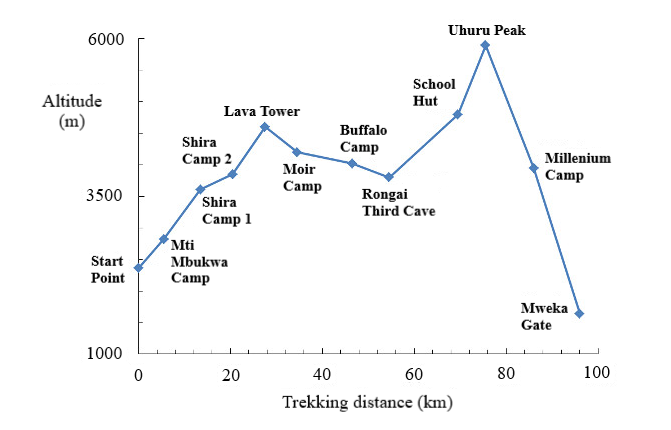
Kilimanjaro Northern Circuit Route FAQ
When is the best time to trek the northern circuit.
June to September is the best time to hike the Northern Circuit on Kilimanjaro. That said, since it is close to the equator it is possible to climb the mountain at any time of the year. April and May are the rainy season, so most hikers avoid these months. November is a light rainy season but the Northern side is in the rain shadow so you should be fine to trek in this month.
How difficult is the Northern Circuit?
The Northern Circuit route offers trekkers ample time for acclimatisation, therefore it can be considered easier than some of the shorter routes. That said, you will be hiking nearly 100km over the course of eight or nine days, which is not an easy task. It's a good idea to work on your aerobic fitness before taking on the trek.
Is altitude sickness a risk on the Northern Circuit Route?
The Northern Circuit is designed to allow hikers some time for acclimatization before the summit push. That said, altitude sickness is a serious concern and trekkers should be informed of the risks, symptoms and warning signs before they go. We recommend you read our detailed article on Altitude Sickness and Acclimatisation . If you are particularly concerned about altitude sickness, the nine-day Northern Circuit is probably your best chance to reach the summit as it allows ample time for acclimatization.
How much does the Kilimanjaro Northern Circuit Route cost?
On average, the cost of a standard Northern circuit hike on Kilimanjaro is about $2500. The costs of trekking on the Northern Circuit Route will vary based on a few factors, such as what season you choose to hike, whether you choose the eight-day or nine-day option, or whether you choose to use a Western guiding company or communicate directly with a local guiding company.
Here are the major costs to consider when planning to undertake the Northern Circuit:
- Visa, Vaccinations, Insurance etc: ~$300-$500
- Equipment (buying and hiring): ~$200-$300
- Flights to Kilimanjaro International Airport : ~$800
- Tour Agency : About $2,000 for a cheap local agency to ~$4,000 for an expensive Western agency.
- Tips: ~$200-$300
- Misc (additional food, unplanned travel / hotels etc): $200
- Total Costs: $3,500 – $6,000
What gear do I need for the Northern Circuit?
Trekking Mount Kilimanjaro requires a number of essential pieces of trekking clothing and equipment. You will be exposed to a range of altitudes where temperatures fluctuate dramatically between night and day. To help you plan and prepare for your trek, we have written a detailed Kilimanjaro gear list .
Are permits required for the Northern Circuit of Kilimanjaro?
A permit is required to climb Kilimanjaro. Furthermore, all trekkers must be accompanied by a guide and porters. If you are joining an organised tour, these will be arranged for you.
Are there alternative routes for climbing Kilimanjaro?
Yes, there are. I highly recommend the Machame and Rongai as alternative routes to climbing Mount Kilimanjaro. This is because they offer great views of the unspoilt Tanzanian wilderness and are also great options for combined climbs through both Tanzania and Kenya .
Continue browsing
See more information on Tanzania . Or check out these other Kilimanjaro Hiking articles:
- Best Time to Visit Kilimanjaro
- How to Prepare for Climbing Kilimanjaro
- 5 Best Things to Do in Tanzania
- 20 Amazing Kilimanjaro Facts
- Deaths on Mount Kilimanjaro
- Kilimanjaro vs Everest
About the author
Mark Whitman
Mark has trekked extensively in Asia, Europe, South America and Africa. He founded Mountain IQ in 2014 with the sole aim to be the best online information portal to some of the most popular mountain destinations around the world. When not writing for Mountain IQ, Mark is out exploring the outdoors with his wife!
Leave a Reply
Your email address will not be published. Required fields are marked
We work with local guides to offer great value adventures at unbeatable prices
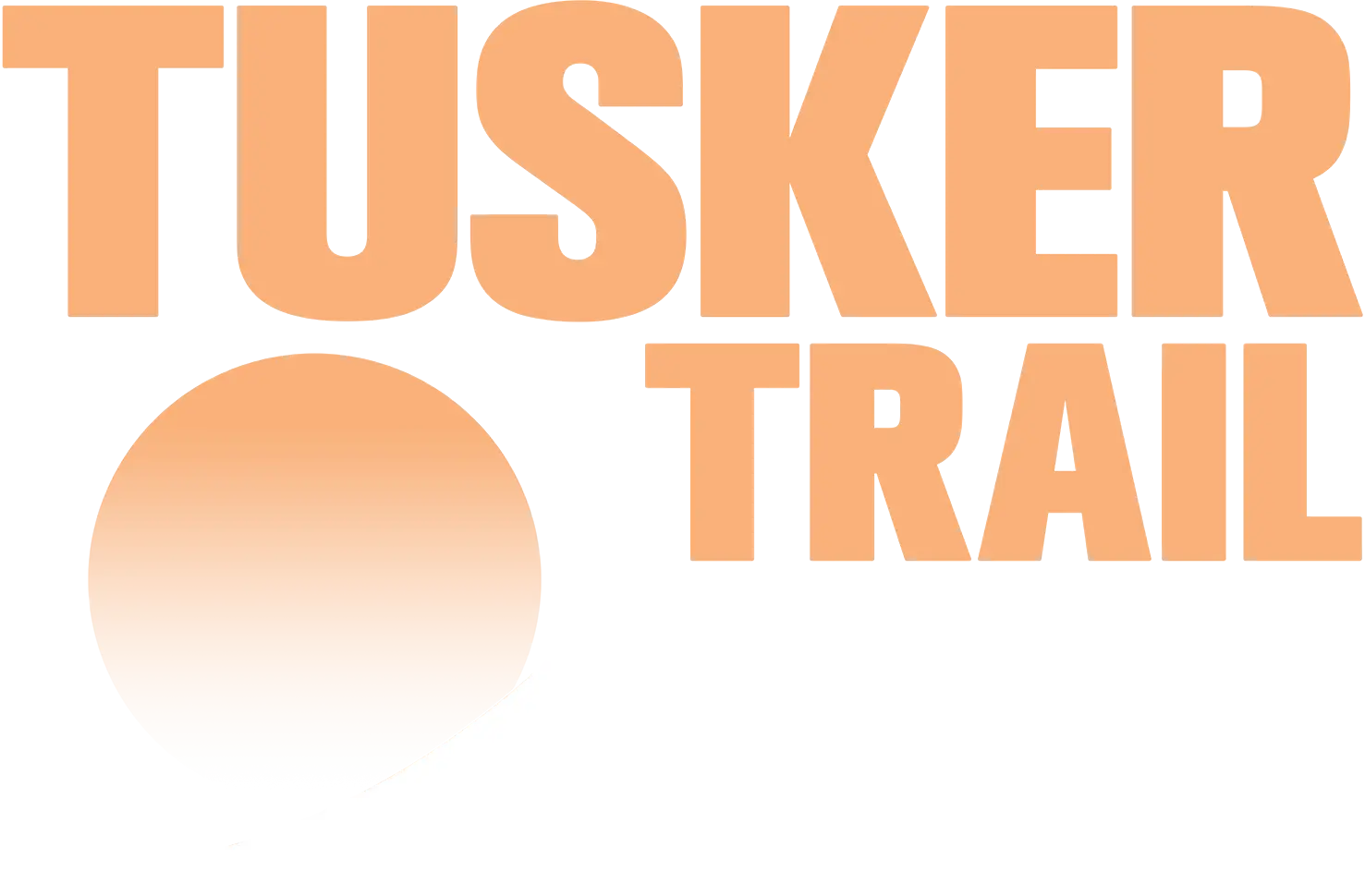
THE KINGS OF KILIMANJARO
International:
- +1.775.833.9700
North America:
- 1.800.231.1919
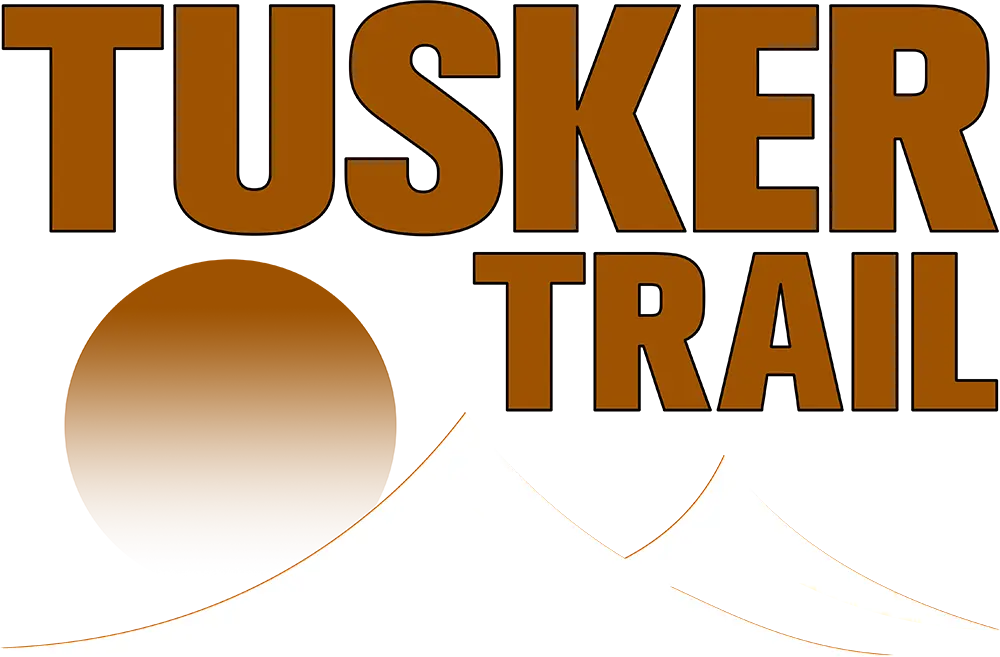
- Breathing & Acclimatizing on Kilimanjaro
- Dates & Prices
- Tusker Blog
- Patagonia Trek
Climbing Kilimanjaro is always thrilling, but some months enhance the experience and challenge more than others. Choosing the right time to go is just one of many factors to consider when planning your trip . Here’s some information to help you decide when to climb.
Climbing Kilimanjaro: January – April
From January to March, the average temperature on Kilimanjaro is 78°F (25.6°C) and rainfall is low. This is not the mountain’s driest season, but it is dry enough to offer a trek that is safe and enjoyable. Sunny, cloudless skies make for breathtaking views.
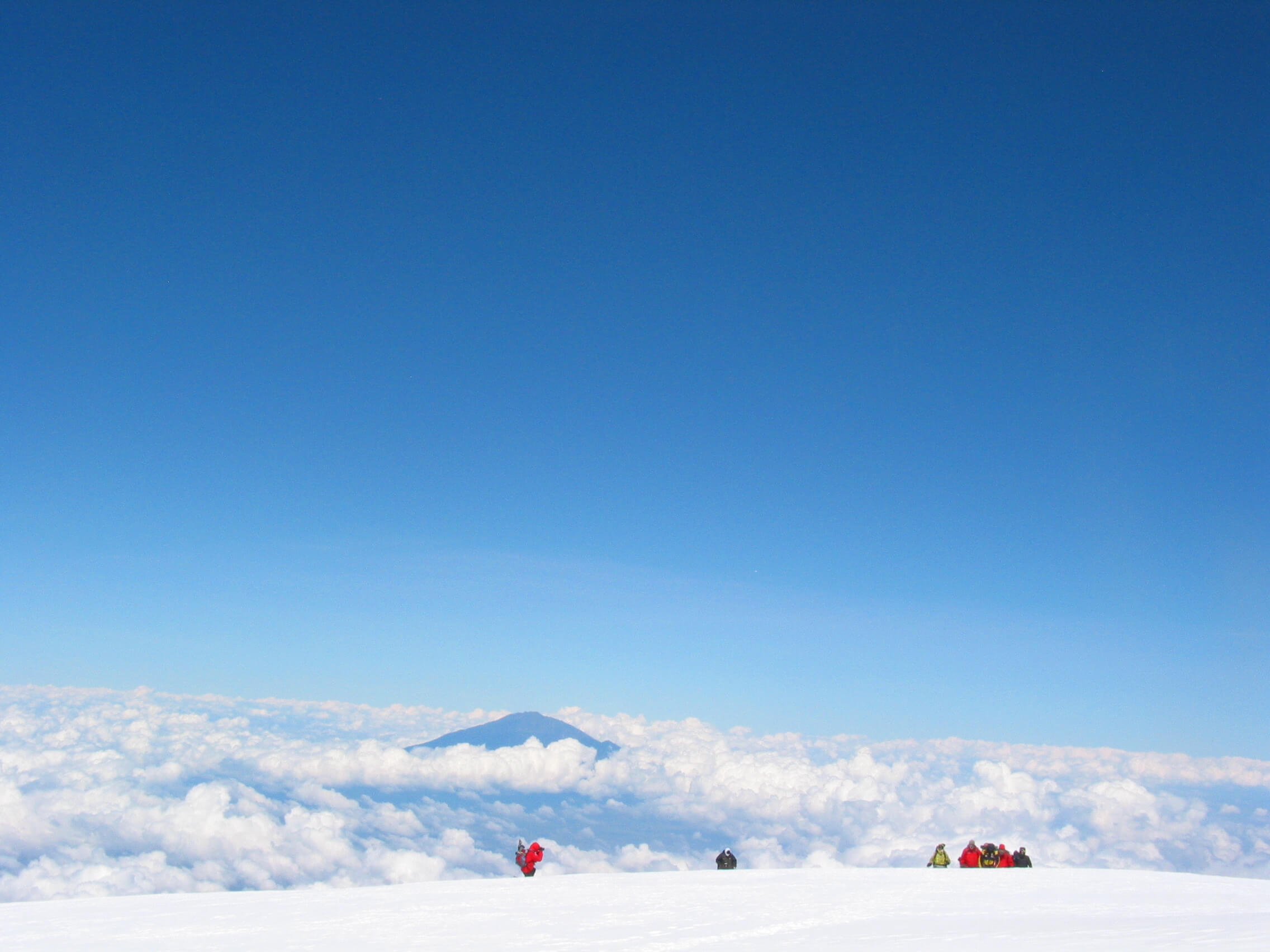
In April, the rainiest Kilimanjaro season begins and temperatures dip slightly. This is the least popular time in which to traverse the enormous stratovolcano because the wetness and mud make hiking a much more arduous task. The benefit of climbing Kilimanjaro at this time of year is that there are fewer people there.
Climbing Kilimanjaro: May – August
May follows in April’s footsteps as a rainy month, but it is a bit drier. The average temperature is 72°F (22.2°C). However, it still remains one of the more treacherous times to climb Kilimanjaro, so few companies offer tours during this time.
June, July, and August, on the other hand, are ideal in terms of temperature and rainfall. In fact, August is one of the least drizzly months of the year for Kilimanjaro, making it a choice stretch of time for wandering the slopes. All hikers should be aware that even though the days are warm and dry, the nights tend to be very cold.
Climbing Kilimanjaro: September – December
September is another optimal month for experiencing Kilimanjaro, making it peak climbing season. Its average temperature is 71°F (21.7°C), but the weather fluctuates from slightly cool to warm throughout the month. This mild weather, in the region’s driest month overall, makes September a favorite month to venture.
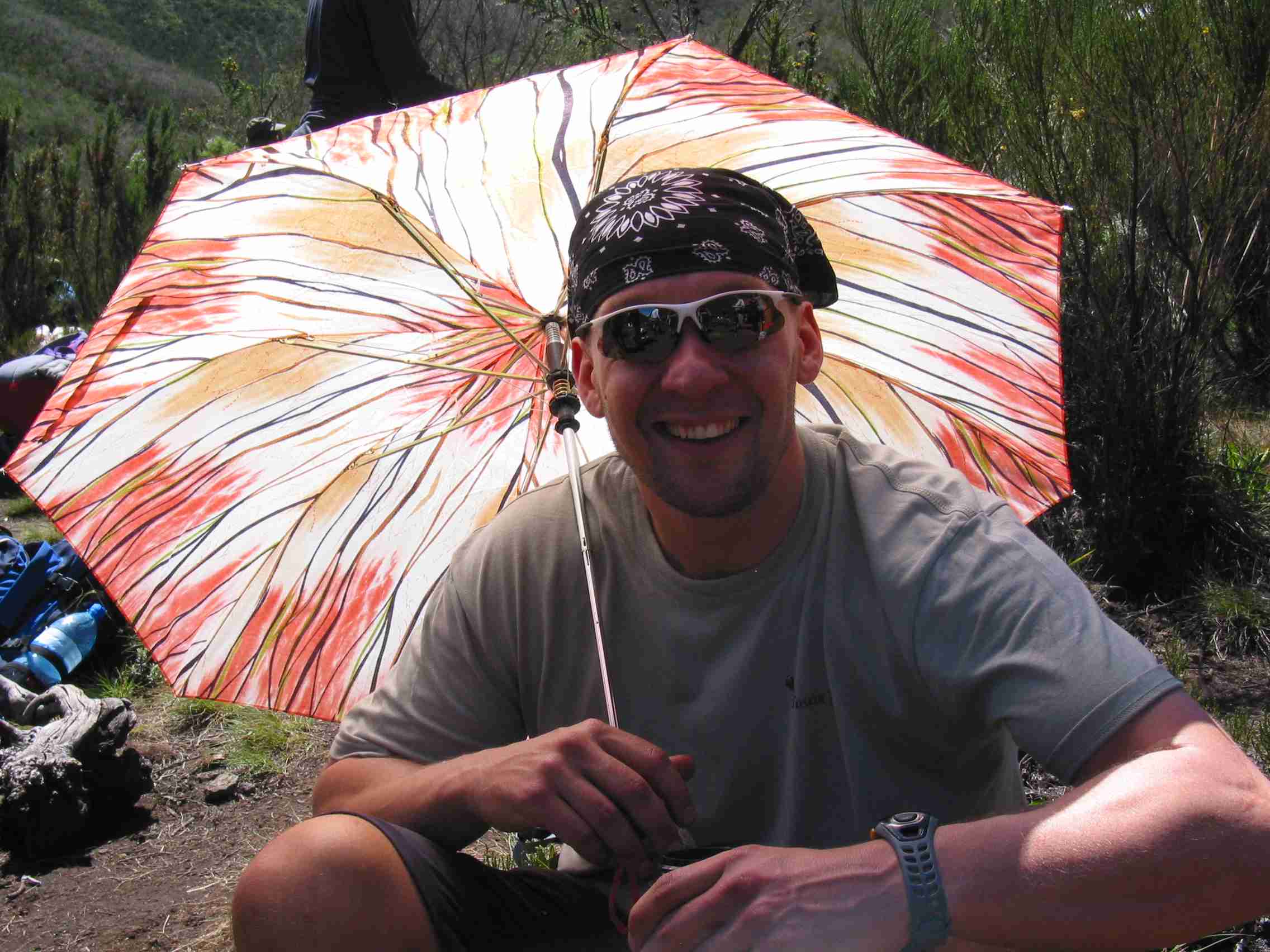
Conditions in October, November, and December are reminiscent of those in the earlier part of the year. The average temperatures of these months are 75°F (23.9°C), 76°F (24.4°C), and 77°F (25°C), respectively. Rainfall increases during then, causing the same aforementioned hazards, but on a smaller scale. Despite the slightly increased amount of rain, December remains a popular time to hike Kilimanjaro.
Choosing the Best Time for You
As with any decision, the best plan for tackling the challenge of climbing Kilimanjaro is one that combines personal preference with the expertise of specialists.
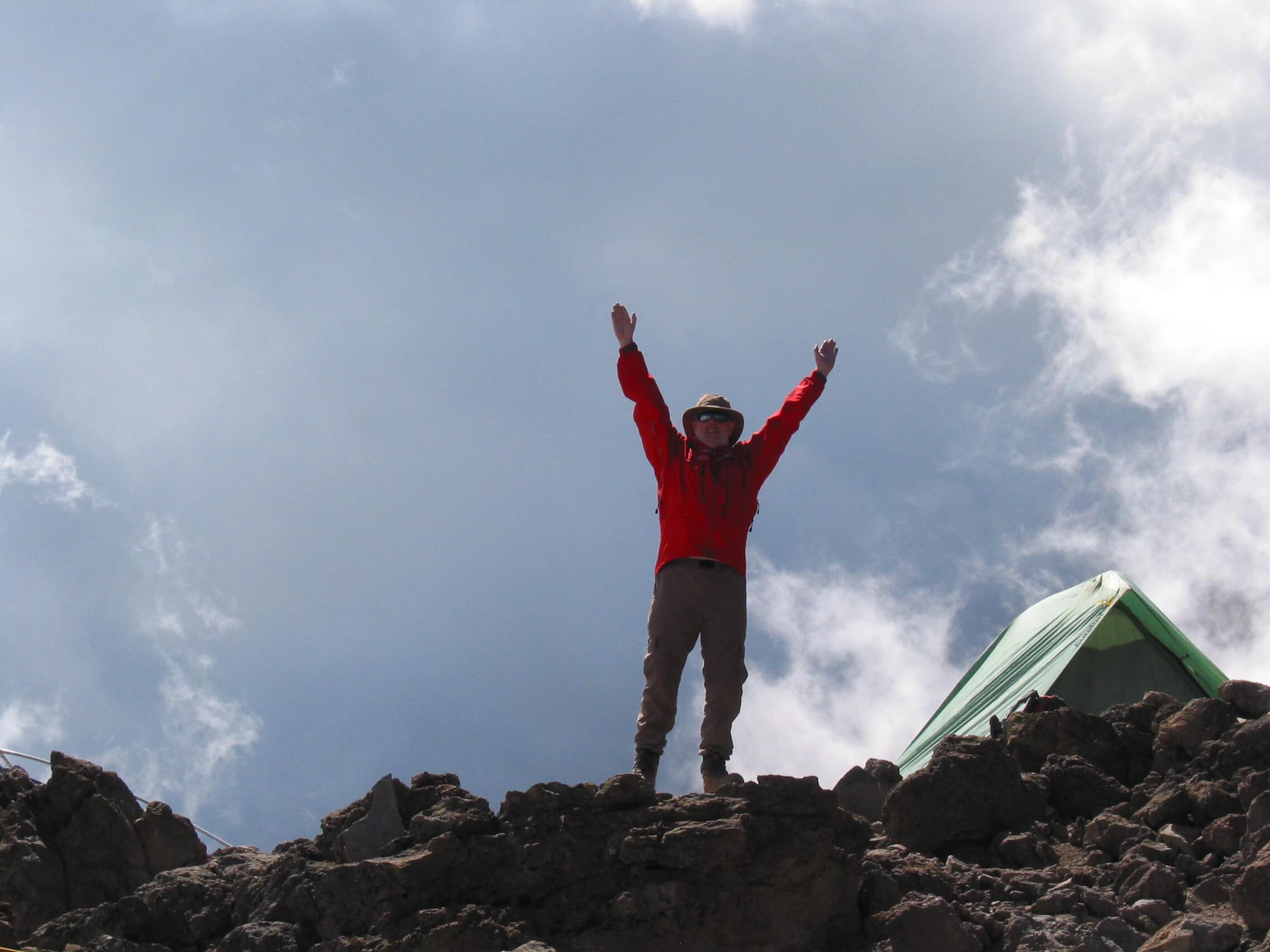
Your choice of a time frame to climb the colossal mountain should take into consideration your level of hiking experience, ability to withstand the elements, and all necessary protective measures. By assessing your decision from every angle, you are sure to plan a Kilimanjaro trek that is safe, fun, and immensely gratifying.
Check out our schedule to find out when you can climb
Latest Posts
Medically Trained Kilimanjaro Guides
Kilimanjaro a journey of mind & body, a rollercoaster of emotions, kilimanjaro is a favorite of the seven summits, everest base camp vs kilimanjaro: which is harder.
- Everest Base Camp Trek
- Iceland Highlands
- Kilimanjaro Climb
- Mongolia Nomad Trek
- Tusker Treks

@tuskertrail
- 1.800.231.1919 (North America) +1.775.833.9700 (International)
- 924 Incline Way Suite H Incline Village Lake Tahoe, Nevada 89451-9423, USA
- 1.775.833.9704
Start Your Trek

- About Nature Discovery
- Responsible Tourism
- Leaders in Ethical Porter Treatment
- Visiting Tanzania FAQ
- Climbing Kilimanjaro
- Scheduled Group Treks
- Private Treks
- Non-Summit Treks
- Number of Days
- Approach Routes
- Circuit & Summit Routes
- Overnight vs Daytime
- Weather & Seasons
- Temperature Patterns
- Climbing Gear
- Private vs Scheduled Trek
- Our Climbing Guides
- Our Support Crew
- Safety – Setting the Standards
- Camping Equipment
- Gourmet Food
- Lake Manyara
- Lake Natron
- Lake Victoria
- Camping Safaris
- Lodge and Permanent Camp Safaris
- Our Vehicles
- Trekking with Nature Discovery
- Our Signature Trekking Safaris
- Ol Doinyo Lengai
- Mount Meru, Ngorongoro Highlands, and Other Treks
- Our Seasonal Camp in Maasailand
Kilimanjaro Trek FAQ
Should i do a scheduled group trek or a private trek.
We run our own scheduled group trek departure dates throughout the ‘high’ season, and also “tailor-made” private treks where you can choose your specific dates.
We offer two scheduled group departure options , including a Shira Route 8 days/7 night trek + 1 night accommodation in Arusha before the trek, or a Machame Route 6 days/5 nights trek + 1 night accommodation in Arusha before the trek.
We also offer private treks on any route combination , from 5 to 8 days, or 10 days. We offer 9 day Kili treks only through our US-based general sales agent. We are happy to refer you to any one of our worldwide partners based where you are, or if you want a 9-day trek we are happy to refer you directly to our general sales agent.
Also, a number of our partners offer their own Kilimanjaro group treks, so there are lots of options for you to join groups or book a private trek.
How Long Does It Take To Climb Kilimanjaro?
You’ll likely only climb Kilimanjaro once, so you may as well do it ‘right’. The best way to do this is choosing a trek which allows enough acclimatization time to reach the summit safely. The single most important factor on whether you reach the summit or not depends on the number of days you take. The park minimum is 5-days – that’s 3.5 days to the summit. Only about 50% of those on 5-day climbs reach the summit. Of the roughly 1,000 climbers we take up the mountain each year, we average eight days. Our ten day trek options include the experience of camping next to the glacier at Crater Camp. The results are dramatic when comparing the summit success rates vs. the number of days on the mountain. For Nature Discovery, these are the average summit success rates:
5 days: 65%
6 days: 75%
7 days: just over 80%
8 days: 90%
9/10 days+: over 95%.
It makes a significant impact on summit success rates to take extra days.
What’s the Best Route to Climb Kilimanjaro?
There are six initial approach routes , counter-clockwise from west to east:
1. Lemosho Glades – starting from a remote trailhead and ascending through forest, and heather over two days to reach the western edge of the great Shira plateau. This route continues up either the Northern Circuit, Western Breach or the Machame/Southern Circuit route. Done via the Southern Circuit (most common), it’s the longest distance route to choose on Kilimanjaro. It’s best done 7 or more days.
2. Shira /Morum Barrier – This route starts high (over 12,000’ / 3,500m) but on longer climbs offers the chance of easy/gentle hiking from the start of the climb, as well as avoiding other tourists, especially when choosing the remote northern circuit route. Although a start from Morum Barrier Gate offers the choice to continue on the Southern Circuit, Northern Circuit or Western Breach, it’s best done via the Northern circuit in 8 days (as per our 8-day group trek option). We prefer this route over all others, for its’ wilderness character and low foot-traffic.
3. Machame (Whiskey Route) – by far the most popular route and busiest route overall, usually done in 6 or 7 days via southern circuit and finally ascending to the summit via the east facing Mweka (Barafu Camp) route to the crater rim at Stella Point. It’s also quite pretty and rugged. Best done in 7 days. Very difficult to do in 6 days.
4. Umbwe – The shortest and most direct way to Kilimanjaro’s summit, and this is the most challenging both in terms of terrain and grade. This route is best done via the Western Breach, in 6 or 7 days, but can continue on the Machame/Southern circuit route too.
5. Marangu (Coca-Cola Route) – the original hut route starting at the southeast and passing through thick forest, heather and moorland before crossing the saddle between Mawenzi and Kibo, then up to Gillman’s point before skirting around the south crater rim to Uhuru Peak. Pre-booking and deposits are required on this route (to reserve the huts). From 5+ days, best done in 6 days.
6. Rongai – An approach from the dry northeast (Kenya side), up to the flanks for Mawenzi (the most easterly of Kilimanjaro’s three volcanoes) then on into the great expanse of barren saddle between Mawenzi and Kibo, and finally up to the summit via the Marangu Route. From 5+ days, but best done in 6 or 7 days. The descent route on Rongai is the Marangu Route, which makes for a longer last day than other camping routes.
There is a circuit of routes traversing the Kibo massif in the alpine desert (ranging from about 3,500 to 4,000 m), and from this circuit on upwards there are only three summit route choices.
The Northern Circuit is by far the least used route on Kilimanjaro, and is home to the true wilderness on Kilimanjaro.
The Southern Circuit is essentially the continuation of the popular Machame Route following the east facing Mweka (Barafu Camp) route to the crater rim at Stella Point. This route to the summit receives more than 80% of all summit foot-traffic. Most of the rest of the summit-goers pass via the Marangu Route via Gillman’s point before skirting around the south crater rim to Uhuru Peak.
The Western Breach is the third and last summit route, and gets a tiny percentage of the summit foot traffic, as it’s a steep scramble from camp at 4,900 m (Arrow Glacier Camp) to the crater rim at 5,900m, and is a true alpine-adventure style scrambling route, which includes rock fall risk. We’ve imposed our own restrictions on this route, in order to ensure the group is relatively homogenous and have prior experience with this type of terrain. We provide mountaineering helmets for all participants who ascend the Western Breach.
Find out more about climbing routes here >>
Should I Attempt The Summit During The Night?
The ‘normal’ way to climb Kilimanjaro is to have the last camp at about 15,000’ (4,600m) and do an overnight ascent to the summit , leaving camp at about midnight, and making for a 12-17 hour trekking day. The option is to trek up to the summit during daylight hours and camp in the crater. The overnight at crater camp does make for a challenging sleep, but trekkers can experience much more of the summit, glaciers, and central (Reusch) crater, which overnight climbs do not experience. The Crater camp is at 5,800m (19,000′), so taking enough time is essential to be able to camp here. Treks must be 9 or 10 days in order to include a night in Crater Camp.
If you want to trek to the summit during the daylight hours but NOT sleep at Crater Camp, we can also arrange this by spending two nights at the high camp, making the summit attempt during the day. This involves a longer final trek to the gate, as you trek from the high camp all the way to the gate.
What’s The Best Month To Climb Kilimanjaro?
The best times of year to climb Kilimanjaro for the weather (avoiding rain) are January to early March and July to mid-October. There’s a long, dry winter and a green season with two rainy periods at each end. December, January, February and March are the warmest months, with clear mornings and evenings , and clouds building during the day that occlude the summit in the early afternoon hours. The predictable patterns of weather make it a good time to climb.
The main rainy season lasts from the beginning of April to early June. At this time, dense cloud formations massed over the mountain reduce visibility, and you can expect frequent snowstorms on the summit and heavy rains on the lower slopes.
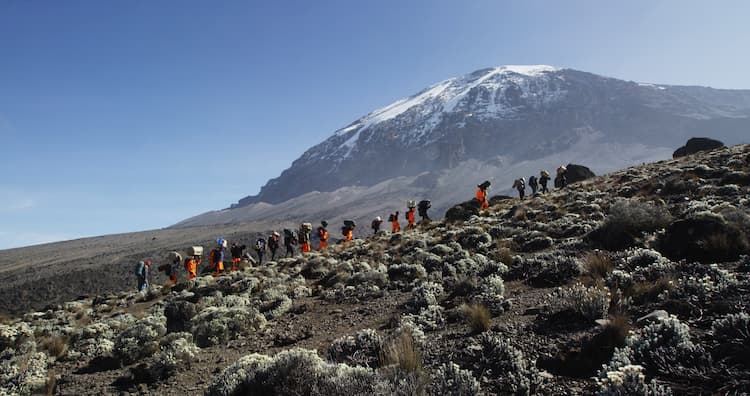
The longest and driest season runs from mid-June to mid-October. During this time it can be very cold at night. During Kilimanjaro’s “winter,” there is a persistent dripping belt of clouds girdling the whole mountain above the forests and the moorland contour, leaving the summit and a few other distant peaks poking through. Above the clouds, it is usually clear and dry, and this is one of the best times to plan the trek.
In late October, the clouds finally give way to rain, and until the middle of December, the mountain is often shrouded in heavy clouds, with persistent showers from base to summit.
The best months to climb Kilimanjaro are January, February, July, August and September.
Avoid climbing during the April-May heavy rain season, and November (the short rains) if you can . During these times, in order to stay out of the ‘crowds’, it’s best to avoid the Machame Route, and on any route; avoid starting your climb on a Saturday or Sunday (the majority of groups start on these days). Regarding climbing on a full moon, we recommend arranging the summit attempt three to five days AFTER the full moon, for optimal moonlighting the summit trail during the night.
Book a Group Trek
No matter when you choose to climb, if want to have the best eco-trekking experience, book a Group Trek with Nature Discovery today!
What Are The Daily Temperature Patterns On Kilimanjaro?
Although it varies by season, some general rules apply for weather and temperatures on Mt. Kilimanjaro . Moshi is always hot. Sitting 950m elevation, it is one of the warmest cities on earth measured in diurnal average temperatures, averaging over 30 degrees C by day and from 15 to 18 degrees by night for most of the year. The climbing routes start generally between 1,600 to 1,800m, and always are much cooler than Moshi, partly because of altitude differences but mostly because of cloud cover, it’s often ten degrees cooler at the gates vs. in Moshi.
The forest zone (from 1,600 to 2,000m) is cool, damp/wet, with daily temperatures in the low to middle 20’s, night-time temperatures in the single digits.
The heather/moorland (2,000 to 3,500m) has greater daily fluctuations, and it often warmer during the day if in sun (up to 25 degrees), and colder at night (down to freezing).
The alpine desert (3,500 to 4,500m) has even more daily radiational heating and cooling, with daily highs up to 20 and nighttime temps always below freezing.
The summit zone (over 4,500m) is always below freezing, but radiational heating under 2m from the sun creates a ‘microclimate’ which can make it feel quite hot during the day, in the sun. Night-time temperatures range from minus 10 to minus 30 depending on the season.
If you need more information, contact us at Nature Discovery or book a Group Trek today!
Are There Options For Gear And Service Specifications On The Trek?
We offer four main options for the level of gear and services. The majority of our treks are run in the ‘Superior’ option, but we also have a more simple and less expensive option, called ‘Lite’. The ‘Lite’ option has a lower weight allowance for each climber: no toilet or toilet tent (clients use the park’s toilets), smaller dining chairs, plus a smaller mess tent. We also offer a “Hut” option, with even more simple equipment choices. On the flip side, we also offer a luxury spec, with options like walk-in sleeping tents with frame beds and solar lighting systems, hot shower services, mess tent heaters, sparkling wine service, and other indulgences to make the experience more comfortable!
The differences are all clearly exhibited here in the gear and service specifications chart
On any trek, we provide the same quality and commitment in guiding and porter ethics, and all treks get the same safety gear and safety standards.
How Many Days In Advance Should I Arrive In Tanzania Before Starting The Trek?
It’s best to plan to arrive two or more days before starting the trek.
This gives you valuable time to rest, recover from the journey, start the acclimitization process (Arusha is over 1,400 elevation), and have time for getting your gear in order and get a detailed briefing and gear check. We recommend taking a day trip to Arusha National Park, or a short safari before your Kili trek . The more days you are in Tanzania before Kili are going to be an asset, to get you more rest and recovery and get you acclimatized to higher altitudes.
What Is The Optimal Acclimatization Plan For Climbing Kilimanjaro?
Your ability to acclimatize depends on the level of oxygenation of your vital organs, most importantly the brain. Since oxygen levels are decreasing as we ascend, the only ways to adjust are to 1./ increase respiration or 2. / to change the blood chemistry so that it can accommodate more oxygen (by an increase of red blood cells).
The latter will occur naturally as you spend time at altitude, and guidelines from experts in this science recommend an ascent of no more than 2,000 feet (610 M) per day, with one day of rest every third day. That translates roughly into 4,000 feet (1,220 M) every three days. Ideally, when you reach your high camp, you should not be too far in deficit, in order to give you the best chance to safely reach the summit the next morning.
The most commonly used high camps (Barafu Camp and Kibo Hut Camp) are situated at about 4,700m, so if at the start of your trek you are acclimated to the elevation in Arusha (1,400m), the objective would be to be able to acclimatize to 4,700m (a difference of 3,300m). In order to follow the above guidelines, you would need to plan 8 days to reach Barafu Camp and be well acclimatized. That means a 9 or 10 day trek. This is why summit success rates are so much higher for 9 and 10 day treks. Shorter treks are more challenging from an acclimatization standpoint, so we often have to take remedies to address that. A very common remedy is the medicine called acetazolamide, commonly known as ‘Diamox’. See the FAQ on ‘Diamox’
Should I Plan To Take Diamox?
Acute Mountain Sickness (AMS), or as now referred to as “altitude illness” is the major concern with climbing Kilimanjaro.
We recommend that our climbers consider taking acetazolamide ( Diamox ) to help them acclimatize, especially on shorter treks (7 days or less). Diamox is well-studied and proven safe (barring an allergy to Sulfa drugs) as a prophylaxis and as a treatment for AMS. It increases respiration and thus increases the amount of oxygen to the brain and other vital organs, especially during sleep. It mimics what your body would be doing after a few days at altitude, and it promotes better sleep.
The only drawback is its diuretic effect, and thus the need to stay well-hydrated at all times. The Center for Disease Control (the CDC) have provided on their website a comprehensive overview and diagnosis, prevention and treatment of AMS, including tables assessing risks and dosage recommendations for Diamox and other commonly prescribed and used altitude meds: See: http://wwwnc.cdc.gov/travel/ yellowbook/2014/chapter-2-the- pre-travel-consultation/ altitude-illness . Please consult with your doctor, as Diamox is available by prescription only.
What Is Included In The Kili Trek Price?
We include all guiding services, camping gear and meals, plus private transport to and from the mountain. Entry fees and camping fees are always included too, though priced separately.
What Is NOT Included In The Kili Trek Price?
Not included are airport transfers, hotels before or after the trek (unless on one of our group treks, which includes one night in a lodge before the trek) , air evacuation services, evacuation insurance, emergency transport expenses, any additional transport or overnights in lodges if you descend early, or tips
What Are The Tipping Customs On Kilimanjaro?
It is customary to tip your mountain porters, cook, waiter and guides. Some may choose to tip more or less, but a tip should always be at the discretion of the customer and should take into consideration the quality and type of service rendered. Our staff will never ask for a tip.
We are strong advocates for fair and transparent tipping on Kilimanjaro, and as one of the leaders shaping responsible practices on Kili , we recommend that our climbers follow the tipping recommendations listed by the Kilimanjaro Porters Assistance Project (KPAP): https://kiliporters.org/get- involved/tipping- recommendations/ . We also have prepared various recommendations from what our past climbers felt was appropriate, for each option we offer, which includes recommendations for our guides, expected number of porters, and other details in addition to KPAP’s porters’ tipping customs.
How Is My Gear Carried Up The Mountain?
Your personal gear is packed before the climb into large weather-resistant duffel-style bags which we provide, and carried by our team of porters from camp to camp.
The weight allowance for this gear is determined by which climb option you choose, but can range from 8 to 16kg per climber. Personal porters to carry your extra gear are also available at a supplement, and you can even opt for a personal porter to carry your daypack(s) and accompany you all the way to the summit, so you can hike to the Roof of Africa without any added weight on your frame.
Is A Sleeping Bag Included In The Price? And Counted Towards The Weight Allowance?
A sleeping bag is not included in the price , though we do offer rental of sleeping bags (complete with a fleece liner). Our luxury option does include a sleeping bag and pillow (on a big foam mattress which lays atop a sturdy bed frame which sits off the ground!). Your sleeping bag (whether it’s your own, or if rented from us) does count toward your weight allowance for your personal-gear bag that will be carried by our porters.
WHAT’S IT REALLY LIKE TO CLIMB KILIMANJARO?
READ OUR BLOG SERIES KILIMANJARO TREK DIARY Join our General Manager at Nature Discovery as he Attempts to Summit Kilimanjaro with a Small Group of Guests.
POPULAR POSTS
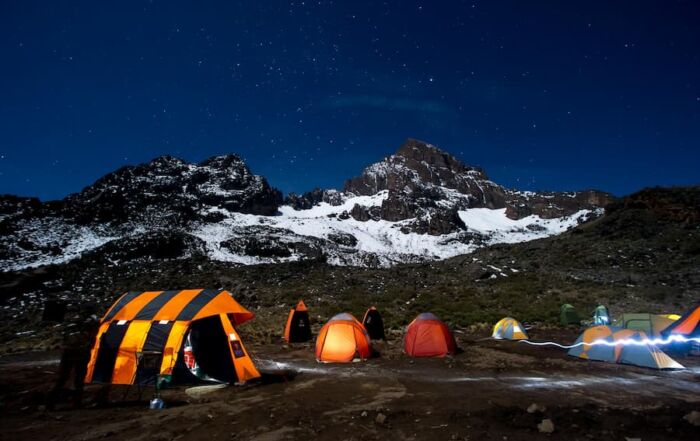
Climb Kilimanjaro in Luxury? It is Possible with Nature Discovery
Nature Discovery offers three gear and service options for climbers who want to attempt Mount Kilimanjaro. These options include Superior, Lite, and Hut.
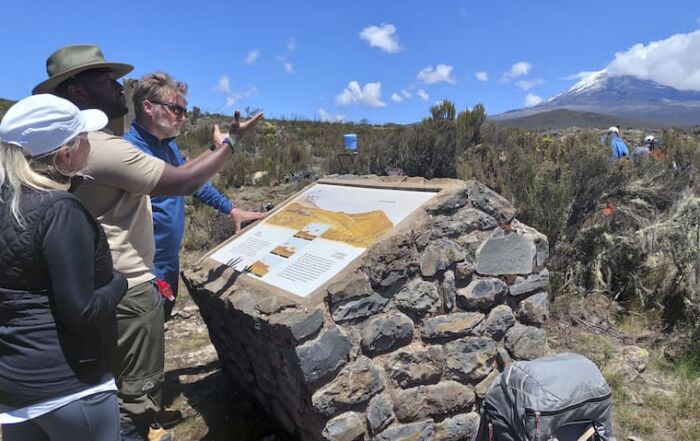
Kilimanjaro Trek Diary – Day 1
Join Gary, General Manager at Nature Discovery, as he attempts to summit Kilimanjaro with a small group of guests. This is the first installation of a day-by-day blog series exploring what you can expect on your trek.
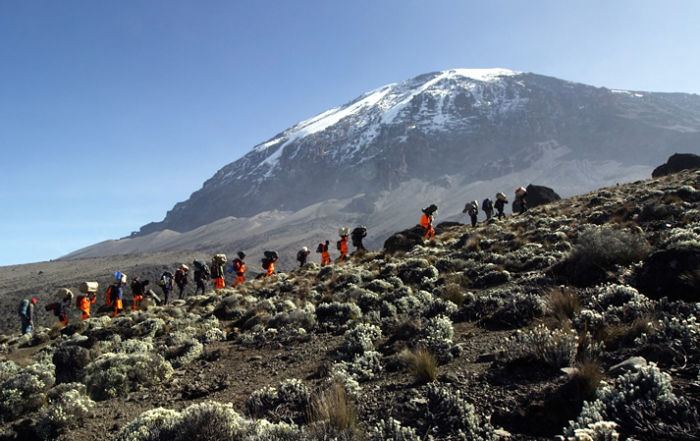
It’s Official! We’re The Best Kilimanjaro Tour Company
“The best a man (or woman) can get,” is how travel writer and award-winning Trailblazer author Henry Stedman describes us in the latest edition of Kilimanjaro - The Trekking Guide to Africa's Highest Mountain.
Mountaineering, Trekking, Camping and Lodge Safaris
In tanzania’s wild places since 1991.
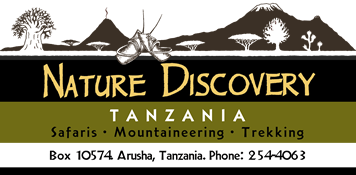
Nature Discovery
Nature Discovery is the recommended Tanzanian partner for over 20 specialist Kilimanjaro trekking and safari travel agents around the world. We’ve been recommended in The Lonely Planet Guide, The Bradt Travel Guide, Rough Guide, Henry Stedman’s Kilimanjaro Guide and by many other travel media outlets.
PO Box 10574, Arusha, Tanzania
Office phone: +255 739 971 859 Emergency only: +255 754 813 614 Email: [email protected]
French Language Website www.naturediscovery.fr
Find Your Way
About us kilimanjaro safaris trekking blog contact us covid policy privacy policy, recommended by.
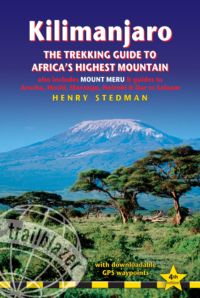
© Nature Discovery 2024 | All Rights Reserved

The Complete Guide to Climbing Kilimanjaro in 2024-2025
Ultimate kilimanjaro climbing guide 2024-2025.
Kilimanjaro towers at 5,895 m/19,340 ft above sea level. It is the highest free standing mountain in the world and the "Roof of Africa".
Mt Kilimanjaro is one of the most popular travel attractions on the continent. Over 40,000 people visit it every year. The reasons for its popularity are simple. It's an incredibly beautiful trek where a climber doesn't require technical climbing skills. To reach the summit, one needs only a healthy average fitness level. This is why many people begin their Seven Summits journey with Mount Kilimanjaro.
We wrote this guide to help climbers prepare for their once-in-a-lifetime Kilimanjaro adventure. All the recommendations below are the results of our 10+ years of Kilimanjaro experience. Over this time we at Altezza Travel have organized Mount Kilimanjaro hiking trips for over 20,000 people. Our team also outfitted the climbs of Nimsdai, Red Bull athletes, and Fortune 500 companies, among others.
Take a glimpse into Altezza Travel expeditions
Kilimanjaro routes.
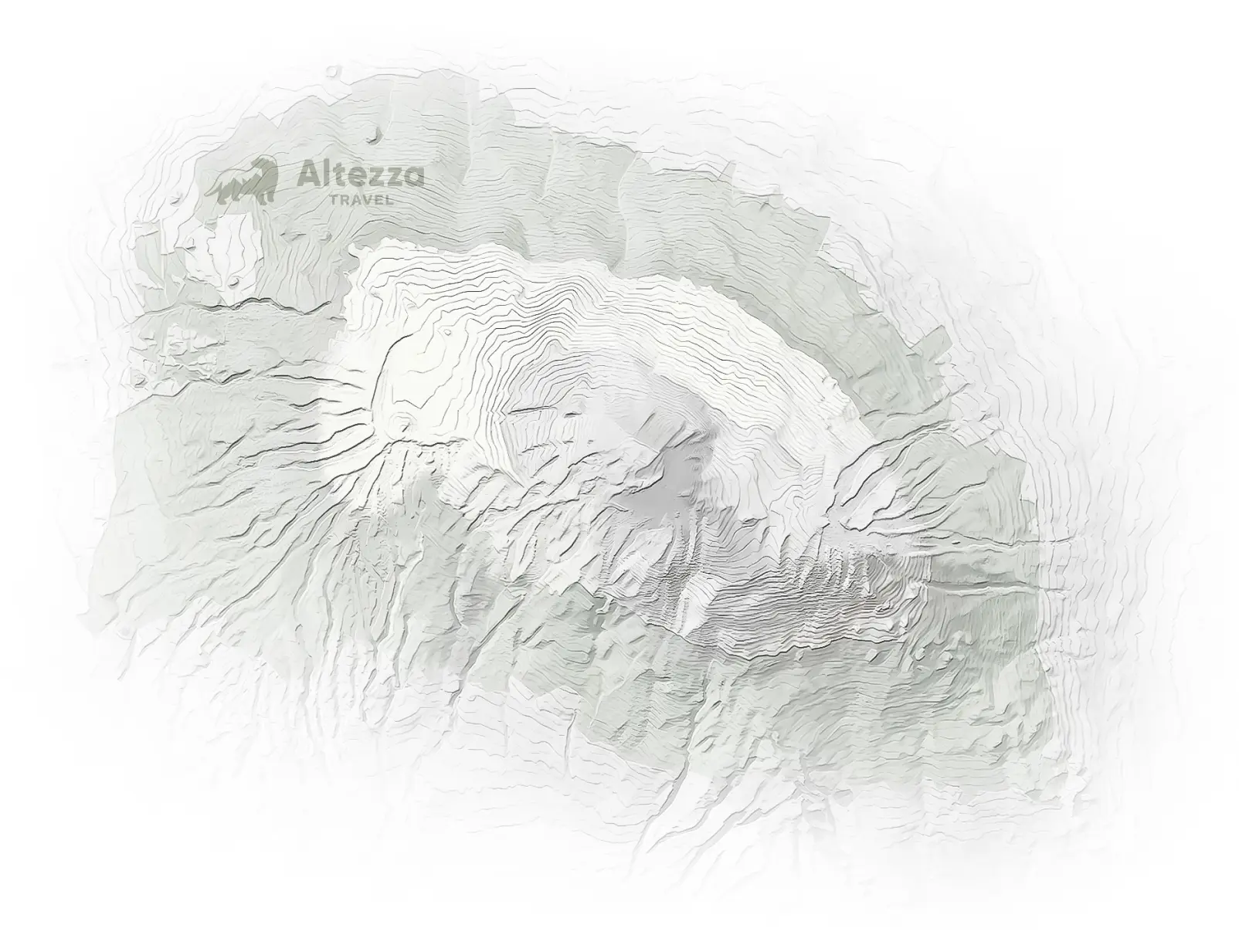
Kilimanjaro climbing groups with Altezza Travel
Altezza offers Kilimanjaro group climbs almost every day. If you have specific vacation dates and can't find a suitable group, contact our managers. We may consider opening a new open group beginning on the dates you suggest. To sign up for a trip, we require a $100 deposit only.
Facts to know before your Kilimanjaro hike
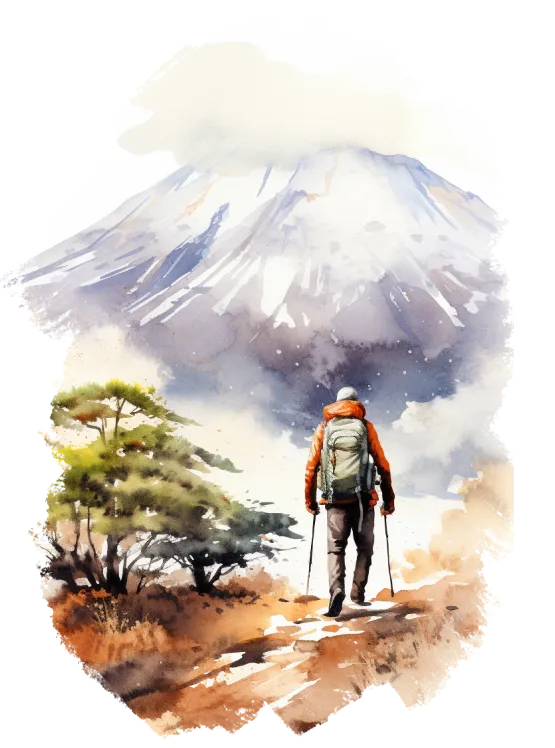
Popular questions about Kilimanjaro
Mount Kilimanjaro National Park is in northern Tanzania, East Africa. It is just three degrees south of the equator. While some of the most iconic panoramic shots of Mt. Kilimanjaro have been captured from the Kenyan side, all trailheads lie in Tanzania. Therefore, tourists can only climb Mt Kilimanjaro in Tanzania. The closest airport is Kilimanjaro International Airport.
Many Kilimanjaro expeditions begin in Moshi, the capital of the same region.
Late December to early March and mid-June to late October are the best times for a Kilimanjaro climb. This is when the Kilimanjaro weather is nearly ideal.
Although other months have rain, it doesn't mean there are constant heavy showers. Typically, rains begin in the latter half of the day. This allows trekkers a significant window of clear weather every day during the rainy season. There are also days without any rain. Altezza offers discounted climbs during the wet season.
You may read more about the seasons of Kilimanjaro .
Uhuru Peak, the summit of Mount Kilimanjaro, stands tall at 5,895 meters (19,341 feet). Yet, this doesn't mean you'll be starting your climb from the very base. Most hotels near Kilimanjaro are at an altitude of 700-1,000 meters above sea level. The trailheads begin at elevations of 1,600 meters and above.
Due to its altitude, Mt Kilimanjaro is among the few places in East Africa to see snow. The snow-capped peak of Kilimanjaro is truly a sight to behold!
We believe that after seeing it, Ernest Hemingway decided to name his famous story "The Snows of Kilimanjaro." The title refers to the distant peak of Mount Kilimanjaro. It represents the unattainable, and the purity of idealist motives. In the story's conclusion, the protagonist dreams of being taken to the summit of Kilimanjaro, symbolizing redemption.
The time it takes to climb Kilimanjaro depends on the route chosen. Most expeditions last 6 to 8 days. An experienced hiker with prior acclimatization usually climbs Kilimanjaro through an accelerated 5-day program. If you stay overnight in the crater, Kilimanjaro climbs can take 9 days or longer.
Among the Seven Summits, the Kilimanjaro trek is one of the shortest. For example, climbing Mount Everest takes 6-9 weeks, Denali and Aconcagua- 2-3 weeks. Kilimanjaro takes about one week only.
As of 2023, a comfortable and safe 7-day group climb costs about $2500-2700. A shorter 5-6-day adventure or a season-discounted trip comes at $2000-2300. This amount includes the park entrance fees, which make up about 40% of the total trip cost.
Any trekking companies offering below this amount should warrant caution. You may get low-quality guides and bad equipment. Such trips often lack medical kits and oxygen tanks, putting your safety at risk.
Also, low prices always correlate with the mistreatment of porters. None of those operators is a member of the KPAP. The crews of budget operators are often underpaid and poorly fed, putting their and hikers' safety at risk.
Climbing Kilimanjaro is subject to the regulations of the Kilimanjaro National Park. The official rules dictate that a local guide must accompany all hikers. Rangers at the park will not permit entry to anyone without a professional Kilimanjaro guide.
Also, venturing up to the Roof of Africa solo involves certain risks. During the summit night in the peak zone, one may succumb to altitude sickness or get injured. If needed, the guides will assist with evacuations and other emergencies.
Finally, climbing Kilimanjaro is more than merely a physical challenge. You'll go on a rich cultural journey with your guides. You will learn about Kilimanjaro's plants, animals, and history. The guides will also share vibrant stories of the communities living in its shadow.
Anyone planning to climb Kilimanjaro should keep the park entrance fees in mind. As of today, they come at $140 per day per hiker. This amount includes several types of fees:
- 'Conservation fees' are for staying in the National Park and enjoying its nature.
'Crew fees' - there is a small charge for each crew member entering the National Park to support you on the trek.
'Rescue fee' - this is a sort of mandatory 'insurance' payment. The hikers pay it to use the Kilimanjaro rescue cars. Please keep in mind that this is not a substitute for a real insurance package.
Don't worry about the park fees when planning your trip. Tour operators include them in the tour price and we will pay them to the park authorities on your behalf. Climbing Mount Kilimanjaro with Altezza you can be sure that we will take care of every detail.

Preparing and training for Kilimanjaro
Maintaining a reasonable level of fitness is crucial to climb Kilimanjaro. However, summiting Kilimanjaro doesn't require athletic prowess. A healthy average would be adequate. As a guideline, we suggest assessing whether you can comfortably hike 8-10 km (5-6.2 mi). If you can do it, then you are fit enough to climb Mount Kilimanjaro.
A great exercise for hiking Kilimanjaro is running. Keep training until you can confidently jog 4-5 km (2.5 - 3.1 miles). Good training programs are available at the Nike Running Club app.
Swimming is an excellent complement. Swimming strengthens your entire body and improves your heart and lung endurance. This makes it a great addition to running. The first primarily focuses on leg endurance. Swimming takes it further by engaging the arms, core, and legs at the same time. Water buoyancy is also good for people who want to protect their joints while exercising.
Finally, it is great if you have any rural areas nearby with rough hiking trails. Aim for longer ones, ideally in the 10-15 km (6-10 mi) range. Remember, most of the Kilimanjaro hike will be uphill. So, training over longer distances in the countryside will prepare you for the Roof of Africa.
You may also check our Kilimanjaro training plan . It's useful for building your stamina and fitness for the climb.
Fit climbers often hike Kilimanjaro too quickly. They don't take enough time to acclimatize at lower elevations. Many reach camps faster than the rest of the group. The fast pace increases their risk of getting mountain sickness.
Climbing Kilimanjaro preparation goes beyond physical fitness. It's also a test of discipline and a steadfast commitment to the acclimatization plan.
Tanzania has two rainy seasons and two dry seasons. The short rainy season begins in early November and lasts until late December. It is followed by the dry season, which lasts until mid-March. Then the season of long rains begins, ending in mid-June.
You should consider the northern slopes to climb Kilimanjaro during the rainy season. According to the data we received from the Tanzania Meteorological Authority, this part of the mountain receives five times less rainfall. Good Kilimanjaro routes to choose from are Rongai, Northern Circuit, and Marangu.
One should also remember that the period from June to October in East Africa is marked by cold nights. At the high altitudes of Kilimanjaro, the nights will be pretty chilly. Make sure you have everything from our packing list.
On a Kilimanjaro trek with Altezza Travel, every climber receives a balanced diet designed specifically for the mountain environment. Our specialized menu is rich in calories and carbs to provide you with ample energy.
For breakfast, we serve porridge, pancakes, fruit, eggs, sausages, and toast with jam. Lunch or dinner options include delicious soups like butternut, tomato, leek, vegetable, and beef, potato dishes, spaghetti, chicken, stews, fresh vegetable salads, and avocado. All meal courses are served with delicious sauces and dressing. For dessert, we have mangoes, bananas, pineapple, and oranges. They give you important vitamins and minerals. Coffee and tea are always available in the camp.
We also have extended meal plans for vegetarians, vegans, and gluten-free climbers. We will do our best to accommodate other diets also.
Throughout the trek, our guides will frequently pause for tea with biscuits. Nonetheless, climbing Kilimanjaro demands considerable energy. Hence, we recommend you bring snacks such as energy bars, dried fruits, and high-calorie treats. It's preferable to purchase these at home. There might be a much broader variety of such products available in your country compared to Tanzania.
At Altezza Travel, we've conducted an in-depth analysis and examined the data from January 1, 2023, to September 30, 2023. We looked at the records of over 40,000 climbers.
Our findings revealed that starting your trek on a Wednesday or Thursday reduces the crowds you will encounter. There are almost twice fewer climbers starting on these days compared to the rest of the week.
Additionally, we discovered that the Rongai route has eight times fewer climbers than the popular Machame route. Thus, by hiking Mount Kilimanjaro on Thursday and opting for the Rongai route, you'll encounter nearly 16 times fewer climbers on your way to Uhuru Peak.
What should I pack for a successful summit?
We offer tents, thick sleeping mattresses, tables, tableware, chairs, and other equipment. However, you must bring your own hiking gear. This includes boots, a sleeping bag, duffle bags, pants, trekking poles, and other items from the packing list.
When you climb Mount Kilimanjaro, the temperature changes a lot. It can be as hot as 25°C/77°F and as cold as -15°C/5°F. It is essential to bring clothes for all kinds of mountain weather.
If you want to travel light or don't want to buy gear, you may rent equipment from Altezza Travel. We have an extensive inventory of quality gear in prime condition.
Check our Kilimanjaro Packing List to learn everything you need to know
Kilimanjaro Guides
50+ expert kilimanjaro guides work for altezza travel.
Our lead guides have a lot of experience across all Kilimanjaro routes. All are certified as Wilderness First Responders. They are a great company to climb Kilimanjaro with.
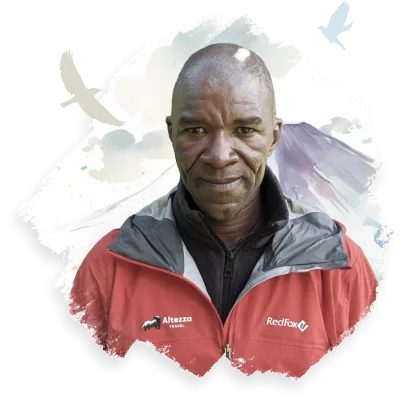
Professional Guiding Crew

Kilimanjaro Hiking Routes

This trail is one of our favorite Kilimanjaro routes. It starts on the beautiful western side of the mountain. On Lemosho, one may see amazing views of the Shira plateau.

Rongai is a great option for exploring the northern side of Kilimanjaro. It offers a more private experience and amazing views of the Mt Kilimanjaro summit. We recommend it for the rainy seasons.

The Machame route is the second most popular of the Kilimanjaro climbing routes. It offers good acclimatization and great views on the way to Uhuru Peak.
Questions about Kilimanjaro safety
Altezza Travel recommends Global Rescue, known for reliable reimbursements. Your coverage should include three important things. These are high-altitude hiking up to 6000 meters, helicopter evacuation, and medical services.
In order to acclimate and summit successfully, we recommend following these simple rules:
Hike slowly. Your body needs time to adjust to the lower oxygen levels. By following a moderate pace, you'll enable it to produce more red cells. Those are used to transport more oxygen to the vitals and to increase the breathing rate. Our guides will be monitoring your pace and will help you to correct it if needed.
Drink 3-4 liters of water a day. Staying properly hydrated is essential. Water will be provided by our crew along the trek.
Join our acclimatization hikes. Each day, our guides lead short hikes from the camp to higher ground and then back again. These hikes usually last no more than 2 hours. They help a lot with getting used to the altitude. We suggest everyone takes part.
If you have time, consider climbing Mount Meru before your Kilimanjaro trip. Those close to South America will have many options for similar hikes. For example, on the Inca Trail. Climbing other lower mountains around the world can also be fantastic. It will help you get used to higher altitudes, preparing you for the Kilimanjaro journey.
Lastly, if you choose routes that are seven days or longer, your body will have more time to adjust. This will improve your chances of reaching the summit.
To acclimatize better on Kilimanjaro, the best routes are Lemosho, Machame, and Rongai. Consider them, or other itineraries with seven days and more.
On the seven-day Machame route, you won't need any extra acclimatization days. Equally good options are Rongai and Lemosho. These are the main routes we use for most of our trips. However, if you think you're not very physically fit, you may add one or two days for extra rest.
At the summit of Kilimanjaro, the level of oxygen in the air is roughly half of what it is at sea level. Most climbers can reach Uhuru Peak without using extra oxygen.
Yet, to be on the safe side, we take precautions. On our expeditions at Altezza Travel, we always have plenty of oxygen tanks. The cost of oxygen is included in the tour price.
We have 300+ oxygen tanks ready for our expeditions, more than all other operators combined. In an unlikely scenario, if your group needs extra oxygen, we will send it from our base. The neighboring Altezza groups on the mountain are also ready to share theirs. Hiking Mount Kilimanjaro with us is always safe.
During climbing Kilimanjaro expeditions, Altezza Travel teams carry comprehensive medical kits . On the hikes, we use smaller tactical kits. They contain everything needed to treat injuries, scratches or twisted limbs. Our camp's larger medical kits have medicines for common problems on a Kilimanjaro climb. Such as for nausea, headaches, vomiting, and stomach issues. Also, we have lots of oxygen ready to help you prevent altitude sickness when first symptoms arise.
The situation is different if you take any prescription medication. Better take it with you on your Tanzania trip.
Relative to other mountains, Kilimanjaro has a low death rate on all its seven routes. Of the approximately 50,000 individuals hiking Mount Kilimanjaro each year, 3-5 lose their lives. The main causes of these deaths are brain and lung problems due to high altitude and heart attacks. Park authorities say this happens because hikers ignore acclimatization.
The mortality rate for Kilimanjaro porters is notably higher. Each year, 20-25 porters die while being a part of a Kilimanjaro crew. The most popular reason is pneumonia, caused by a lack of proper gear or shoddy tents. Responsibility for this largely lies with super-budget trek operators.
To end the mistreatment of porters, always choose a KPAP-registered company when climbing Kilimanjaro. This organization makes sure that operators treat their crew fairly by paying good wages and providing everything they need for safe working conditions on Kilimanjaro. You may learn more in our video about our involvement in the KPAP work .
In the 10 years that Altezza Travel has been operating, we've guided over 20,000 climbers to the summit. We haven't had a single fatality. In addition, we are a proud member of the Kilimanjaro Porters Assistance Project (KPAP) and regularly donate funds to them.
The highest peak of Kilimanjaro was named Uhuru Peak to celebrate Tanzania's independence from Britain in 1961. "Uhuru," means "freedom" in Swahili.
Tanzania has famous destinations for any kind of African adventure. The most popular destinations are Serengeti National Park and Ngorongoro Crater. It is undoubtedly a great idea to plan a safari before or after the climb. We have a fleet of new safari cars and a team of highly professional safari driver-guides who will your safari truly unforgettable!
Kilimanjaro climbing Base Camps

In Tanzania's context, a base camp is a place from where the climbers make their summit attempt. While most mountains only have one, Kilimanjaro is unique. It has four. Barafu Camp sits on the south slope, at 4,673 meters. It's the base camp for Lemosho, Machame, and Umbwe trekkers. Climbers on the Marangu route use Kibo camp. It sits higher at 4,720 meters (15,485 feet) on the eastern side.
The School Hut summit camp is for climbers using the Northern Circuit and Rongai routes. Because of that, it is one of the less frequented summit camps on Kilimanjaro.
There is also the Kosovo summit camp, positioned slightly higher than Barafu. Its position makes it easier for the final push to reach the summit.
Altezza Travel - a responsible operator of Kilimanjaro climbs
Altezza Travel is a Tanzania-registered tour operator. We live, work, and pay taxes in this country only. Our commitment to Tanzania extends to impactful social responsibility initiatives . Our team regularly plants trees on Kilimanjaro, fights bushfires, and protects wildlife on the mountain.
We are also the largest tourism employer in Kilimanjaro. There are over 300 people in our office and hotel teams. Our Kilimanjaro crew is 1500+ people strong and keeps rising annually. We are proud to attract the best talent in the region by offering the best working conditions and pay.
Feel free to contact our team for comprehensive advice about Kilimanjaro. We are here for you.
See you in Tanzania!
Updates from Kilimanjaro from our clients
Altezza travel runs 15% of all expeditions on kilimanjaro.
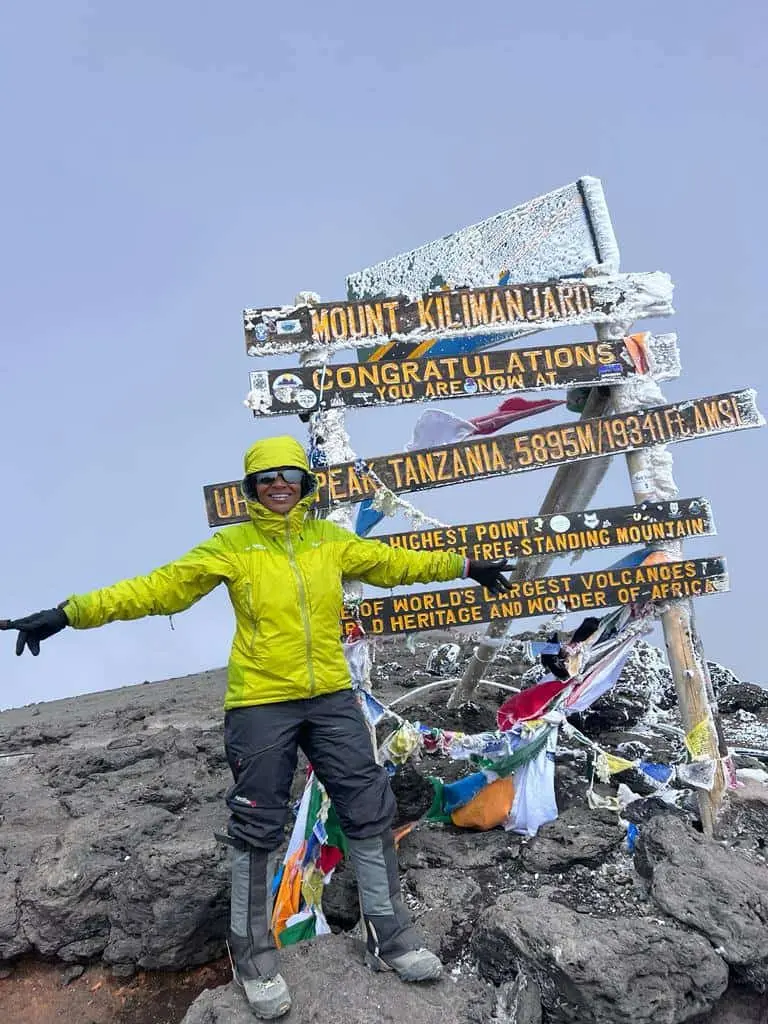
On every route, there are stationary toilet facilities at the camps, but we highly recommend renting a portable toilet to improve the comfort of your expedition. Many of our guests say that this was their best investment ever :)
As for the stationary shower, it's available only on the Marangu Route, but it's a cold shower. You can rent a portable shower from us that comes with hot water. It's allowed to be used on any route, except Marangu.
Thank you for your question! We offer two types of expeditions - private and groups. You can visit our YouTube channel to learn more about the difference - https://www.youtube.com/watch?v=7SSaFpWW0OU . Our join-in groups typically consist of around 12-15 people during peak season and 4-6 during the low season. Regarding the pace, you don't need to worry. Our guides hike at a very slow and comfortable pace. However, if you prefer to go faster or slower, the group can easily split up so that everyone can walk at their own comfortable pace.
Greetings! If we are a family of three, can we share one tent during the climb?
In our classic expeditions, we use The North Face VE-25 model tents. Although these are designed as 3-person tents, it can be quite cramped with three people and their duffel bags inside. Therefore, we recommend these tents for two people and their baggage.
For our premium climbs, we offer Altezza walk-in tents equipped with beds. These tents also have a standard capacity for two people. However, we do provide a Living Tent option where we can accommodate up to four beds. This is an excellent option for families who wish to sleep together. The only minor drawback is that these larger tents can be a bit more chilly at night compared to the smaller ones.
Hi! It's stated that April is a rainy season on Kilimanjaro, but how many days does it really rain and how heavy is it?
Based on our experience and information from the Meteorological data of Tanzania, it rains almost daily in April and can be quite heavy. If this is the only month you can climb Kilimanjaro, we would advise choosing the Marangu route, where you can overnight in wooden huts, or the Rongai route, where there is three times less rain than on the southern routes
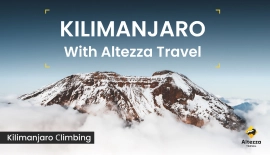

The #1 Guide to climbing Mount Kilimanjaro
- Basic Facts about Kilimanjaro
- Preparing to climb
- What it’s like on the mountainn
- Travelling around Tanzania
- Kilimanjaro posts: Advice, info and news
How to climb Kilimanjaro
How to plan your kilimanjaro trek.
Getting to the top of Kilimanjaro involves more than just doing the actual climb. Indeed, the trek itself is perhaps the least stressful part of it. (This is especially true if you’ve had to do all the organising on behalf of their friends, a job akin to herding cats.)
This page has therefore been created to show you to prepare for your Kilimanjaro climb. Follow these ten simple steps, in order, and they’ll take you from the comfort of your favourite armchair to the top of the Roof of Africa.
Note that the times we have given below are very general. Many, indeed the majority, of people will diverge from this schedule in some way. Indeed, we have many clients who make their first contact with us just a few days prior to the start of the trek and still manage to reach the summit OK. And if you have the necessary level of fitness, and the money and means of getting to Tanzania sorted, then there’s no reason why you can’t either.
But for those who like to take their time this, in our experience, is a reasonable – and unhurried – timetable for preparing for your Kilimanjaro climb:
Decide whether you really want to…
To be done: at anytime
We love climbing Kilimanjaro, of course – we wouldn’t have done it as many times as we have if we didn’t! We love not only the walk itself, but also preparing for the trek. Plus, of course, we love the feeling of achievement and satisfaction (bordering on smugness) that we carry with us for weeks after every climb.
But we also recognise that it isn’t for everyone. After all Kilimanjaro is not only a potentially dangerous activity, but it’s also an expensive and exhausting one.
To help you decide whether it’s really for you please visit our why you should climb Kilimanjaro pages; and also our page on why you shouldn’t climb Kilimanjaro too. It could save you a lot of time and effort in the long run!

CLIMB WITH THE EXPERTS!
* Experienced, safe – and brilliant! – guides * New Routes * Unmatched success rate for getting trekkers to the top * The best information for trek preparations * Fully fledged KPAP partners * Strong ethical policy towards the environment …And a lot less expensive than you’d think!
Choose when you want to go, which route you want to take – and who you are going to take with you
To be done: 12 months before you plan to climb
It’s one thing to say you’re going to climb Africa’s Highest Mountain, but quite another to actually do it. So about a year before you plan to set foot on the mountain you really need to start planning your Kilimanjaro climb.
One of the first decisions to make is to decide when you’re going to trek. A lot of this will depend, of course, on when you can get time off from work/studies and other situations back home. But when planning your Kilimanjaro climb, you also need to consider the conditions on the mountain too. For while the mountain is open all year round, there are definite high and low seasons.
The high season may have the better weather, but it can also be very busy on the mountain. It is also possible to be too dry.
As for the rainy season , well it’s entirely possible, if the rains fail (as they sometimes do) that it will be dry and beautiful at this time too. However, even if it’s not raining, the clouds are likely to prevent you from getting glorious far-reaching views. While if it does rain and snow, it can make for a soggy trek for the first few days. Then a freezing, slippery and exhausting one as you wade through snow to the top.
For a more thorough examination of the difference between the seasons and when to climb, visit our When to climb Kilimanjaro pages.
Choose the right route too
At the same time as you decide when you’re going to go, you also need to read up about the routes up Kilimanjaro to choose the one that’s right for you. Each route has its own characteristics and it’s important you choose the one that’s right for you.
Choose your companions
Finally, at this time you need to decide whether you want to go by yourself – or climb with your friends . Again, it doesn’t sound much – but if you want to have a successful and enjoyable trek, it’s important to get it right.
Sort out your vaccinations; maybe look at visas too?
To be done: at least six months prior to the start of your trip
It may seem perverse getting inoculated for a trip before you’v even bought your flights or booked your trip! But you do need to leave time to get your vaccinations. It may surprise you, but certain inoculations require you to wait six months between the first and second doses. The Hepatitis A vaccine is one example.
You can find a list of the sort of inoculations you may need on our vaccinations page. But in brief, inoculations for Typhoid, polio, tetanus (which you should have already) and meningococcal meningitis should all be considered. Some people may need a rabies jab too if they’re planning on coming into close contact with any animals.
A yellow fever inoculation may also be necessary. Indeed, if you’re coming from a country – or travelling via one – where yellow fever is endemic, you will need the inoculation. And you’ll also need a certificate to prove that you’ve had the jab too.
Follow this link to find out the latest on whether you need a yellow fever inoculation and certificate .
By the way, if you’re coming from a country which doesn’t have a ‘normal’ diplomatic relationship with Tanzania, now is a good time to look at securing a visa. Most people can pick a Tanzanian visa up at any time – even on arrival at the airport. But citizens of countries such as Iran, for example, may be required to do a lot more work to secure their visa for Tanzania.
Book your trek!
To be done: About six months (at least) before you plan to trek
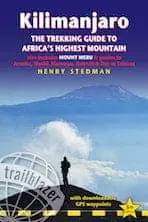
Choosing the right company to climb Kili with is perhaps the most important decision you make. In the guide book we go into great detail looking at the major trekking agencies and ground operators. But you can follow this link to get a few pointers for booking your trip ; just make sure you select the right one for you.
Sort out flights
To be done: At the same time as you book your trek
It’s important to sort out your flights at around the same time as you book your trek, for you don’t want to book your trek, then find you can’t get any flights out there at that time – or vice versa.
Do follow this link for details on the best time to buy your Kilimanjaro flights – it could save you several hundred dollars.
The number of airlines serving Kilimanjaro International Airport (JRO) has increased steadily over the past decade. Where once you had to rely on three major airlines – KLM, Ethiopian Airlines and Kenyan Airways – as they were the only ones to serve Kili, there are now over six airlines and the airport is busy every day.
Remember that, if you can’t find something suitable to JRO, Nairobi Airport is only a six-hour bus journey away from Arusha (or an hour’s flight) and Dar es Salaam is another possibility too. See our Getting to Kilimanjaro pages for more information on how to travel to the region.
Work on your fitness
To be done: 3 months – 1 year
When readers write to me to ask how to prepare their Kilimanjaro climb, this is often what they actually mean: how should they prepare physically for their trek .
Well, your doctor will tell you that you should always be planning to climb Kili, whether you are actually going to climb it or not. But I’m no doctor. So my advice is this:
When you begin your fitness regime for Kili depends to a large degree on how fit you are to begin with.
If you have a reasonable level of fitness already then you can begin your fitness regime three months beforehand. Unfit and/or overweight, however, and you really need to start six months, and maybe a year at least before the start of your trek.
For most people, because you don’t need to be that fit for Kilimanjaro, so you don’t need to go overboard with your training. So I think that starting 3 months before your trek should be ample. But you need to be realistic when it comes to fitness.
In particular, you need to evaluate honestly whether you are fit enough to climb Africa’s Highest Mountain as you are, bearing in mind that you don’t need to be super-fit to climb Kili. Or whether you need to undertake some sort of exercise regime.
Perhaps the first thing to do is to visit our Fitness for Kilimanjaro section. This won’t only tell you how fit you need to be, but also what kind of exercise you need to do to get your body Kili-ready. Consulting with your GP, gym, trainer etc will also undoubtedly prove useful.
Work out what you need to buy and what you can rent for your climb
To be done: from 6 months before the start of your trek
I love shopping for a forthcoming trek. To me, it’s one of the joys of the whole experience. Choosing stuff, trying it on, walking around in it, imagining you’re on the mountain wearing it – it’s all great.
You can begin to buy your stuff as soon as you’ve committed yourself to going – the earlier you start, the more likely you are to pick up some bargains. So we’ve said that it’s good to start shopping at least six months before.
Never miss the chance to check out the sales in the shops – top quality stuff is often knocked down at these times. (Top-end items are often the ones that go on sale, because they are often over the budget for most people when they’re at full price).
Remember, however, that often cold-weather gear – which is what you’ll require for the upper reaches of Kilimanjaro – is often harder to come by during the summer months when high street retailers are more interested in selling warm-weather camping gear for festivals etc. Still, you should be able to find something online.
Contemplate renting some of your kit and clothing
Before splurging on expensive kit, however, remember that you can probably rent a lot of stuff from your trekking company .
How much kit you buy and what you decide to rent from your trekking company depends on several factors:
Firstly, are you planning on doing anything like this again in the future? There’s no point spending the best part of a week’s wages on a super-warm sleeping bag if you are only going to use it for one week during your lifetime. Instead, it’s better to pay your company a few dollars a day to hire theirs. After all, if they’re hiring out kit, you can safely assume that it is suitable for the mountain.
Secondly, your company may supply much of what you require anyway. Sleeping mats are often provided by the agencies, for example and sometimes sleeping bags too. Make sure you know exactly what they will be supplying as part of your package and what you need to bring yourself.
For a complete list of what to wear and bring for your Kilimanjaro trip, visit our What to take page.
One last thing: don’t leave buying your boots until the last minute . These will be your most important bits of kit, of course, and they will need to be broken-in thoroughly before you set foot on the mountain. If you followed the advice given in the Fitness section, above, you’ll hopefully be doing plenty of walking already – wearing your new boots on those exercise walks is a great idea to make sure they provide maximum comfort on the mountain.
Pay for your trek and work out your budget
To be done: (Usually) 60-30 days prior to the start of your trip
The deadline for paying the final balance for your trek varies from company to company but it’s usually around 1-2 months prior to departure.
This is also a good time to sort out your budget for the trip , because some expenses won’t be included in the price of your trip. Items such as tips for your crew, meals when not on the mountain, souvenirs, transport, extra nights’ accommodation etc.
Just make sure you have enough money to cover all of them – plus a bit more besides. Just in case.
Check everything; get visas and insurance
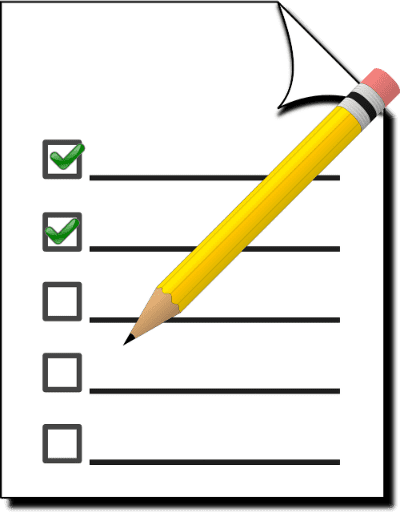
To be done: At least 30 days prior to the start of your trip
When the final invoice arrives read through everything carefully in order to give your agency time to make any amendments should they need to.
Just a few things to look out for include:
Is everything you’ve paid for included on the itinerary? (For an example, here is a list of what we include – and exclude – in the price of our treks .)
Do you know how you’re going to get to your hotel from the airport?
Do you have accommodation for every night?
Are all the timings correct?
In other words, go through everything really thoroughly to make sure you’re not missing something – it could save you a lot of stress later on!
Thankfully, securing a visa is easy for most nationalities. Most people can pick one up at Kilimanjaro Airport or the border when they arrive in Tanzania. The online visa system is said to be very efficient now too. But do please ensure it will be straightforward for you to get your visa too.
To be done: A day or two after you arrive in Tanzania (unless you’ve bo0ked a safari or something for before the trek)
Lift-off! Many people say you’ve done the hard part already. But you don’t get a certificate for merely preparing for a Kilimanjaro trek. You only get one for getting to the summit.
So there’s nothing to it now except tying your laces, picking up your daypack – and climbing that mountain. See our On the Mountain pages for details of what it’s like.
Don’t forget to enjoy it, too. You’ve spent a lot of time, effort and money getting to this mountain, so savour every single moment. Stop to smell the flowers. Pause awhile to observe the behaviour of the colobus monkeys as they crash from tree to tree. And make sure you fill several memory cards with photos; you’ll only regret it later on otherwise.
And besides, the slower you go, the more time you give your body to acclimatise – and thus increase your chances of making it to the summit. GOOD LUCK!
<< Practical information | The best time to climb Kilimanjaro >>
About Climb Mount Kilimanjaro
Climb Mount Kilimanjaro is the work of Henry Stedman, author of the bestselling guide book Kilimanjaro – The Trekking Guide to Africa’s Highest Mountain , which is now in its sixth edition. I’ve been trekking up Kilimanjaro for more than 20 years and have hiked to the summit more than 30 times now, on every possible route (and in every sort of weather).
I still adore hiking on Kilimanjaro and hope, by providing as much information as I can on this site and in the book, that you will be persuaded to climb Kilimanjaro too – and love it as much as I do.
I am happy to advise you in any way I can – and I promise you I won’t try to sell you a trek with my own company, Kilimanjaro Experts! So please do get in touch if you have any questions about any aspect of climbing the mountain. The address is:
[email protected]
We are also on facebook.
I look forward to hearing from you!
Copyright 2010-2024 Climb Mount Kilimanjaro | All Rights Reserved | [email protected]

IMAGES
VIDEO
COMMENTS
In this article I discuss the best time to climb Kilimanjaro. When to avoid the rainy season and other Kilimanjaro weather facts
Wondering what time of year to plan your Mount Kilimanjaro climb? We're breaking down the trekking seasons so you don't have to.
Find out the best time to climb Kilimanjaro, considering weather, crowd levels, and any special occasions or astronomical events.
Discover the best time to climb Kilimanjaro for an unforgettable experience. Learn about the ideal seasons, weather conditions, and tips for a successful trek. Get expert insights and first-hand knowledge from seasoned climbers.
Kilimanjaro is close to the equator and doesn't experience the same four seasons as the more temperate parts of the world. Instead, it has rainy seasons and dry seasons, both of which alter the complexion of the mountain. The best time to climb Kilimanjaro are the months of January through early-March and June through October. The clear skies ...
The first, and most important factor in deciding when to climb Kilimanjaro, is the weather. The main trekking seasons on mountain correspond with the mountain's two 'dry' seasons. These are January to mid-March and June to October. Note that it will still probably rain on your trek during these months too - it's rare to climb without ...
The best time to climb Kilimanjaro are the months of January through early-March and June through October. The clear skies, great views, and the sunshine makes it the best comfortable hiking conditions.
Wondering what season is best to climb Kilimanjaro? We've got all the info you need on choosing a month to trek.
The hike is challenging enough without having to trek through wet and stormy conditions, so keep reading our monthly guide to find out when the best time to climb Kilimanjaro is. Seasons On Kilimanjaro. There are only two hiking seasons on Kilimanjaro: Dry Season: January to March, June to October; Wet Season: April to May, November;
Here, we break down Kilimanjaro climbing season, off-peak alternatives and times to avoid, plus other factors to consider, so you can plan the best time to take on this mountain adventure. ... Local porters are essential guides for the Kilimanjaro trek and their expertise and support (especially in carrying bags and camping equipment) makes a ...
We hear it constantly: "When is the absolute best time to climb Kilimanjaro?" Although it's technically possible to climb year-round, we generally recommend trekking during the warmest, driest months of the year-which happens to be nearly all of them!
In this guide, we will explore the essentials of a Kilimanjaro trek, including acclimatization, trekking seasons, and weather conditions. ... While trekking during the wet season is still possible, it poses additional challenges due to slippery trails and reduced visibility.
Explore Mount Kilimanjaro with our comprehensive trekking guide. From routes and preparation to altitude tips, embark on an unforgettable adventure to Africa's rooftop.
The best time to climb Kilimanjaro all comes down to finding the best weather conditions for your trek along with figuring out your tolerance for a crowded climb during peak season. After all, over 30,000 people attempt climbing Mount Kilimanjaro every year!
The long dry season: June to mid October. June to October are arguably the best Kilimanjaro hiking months as there's little rainfall and less cloud coverage at this time, which means you should be treated to sprawling views over the African plains from all the different climate zones of the mountain!
Best Time to Climb Kilimanjaro. When choosing the most suitable time for climbing Mount Kilimanjaro, you should consider several factors: the temperature, the views, the density of traffic on the trek, difficulty level and safety.However, the overarching factor that impacts all others is weather.. Mount Kilimanjaro lies in an equatorial climatic zone; instead of four seasons (winter, spring ...
Tanzania's Mountain Kilimajaro basically is a rainy zone, so you have to choose the best month and time to climb and trek in Kilimanjaro.
Kilimanjaro Northern Circuit Route FAQ When is the best time to trek the Northern Circuit? June to September is the best time to hike the Northern Circuit on Kilimanjaro. That said, since it is close to the equator it is possible to climb the mountain at any time of the year. April and May are the rainy season, so most hikers avoid these months.
From January to March, the average temperature on Kilimanjaro is 78°F (25.6°C) and rainfall is low. This is not the mountain's driest season, but it is dry enough to offer a trek that is safe and enjoyable. Sunny, cloudless skies make for breathtaking views. In April, the rainiest Kilimanjaro season begins and temperatures dip slightly.
The 'normal' way to climb Kilimanjaro is to have the last camp at about 15,000' (4,600m) and do an overnight ascent to the summit, leaving camp at about midnight, and making for a 12-17 hour trekking day.The option is to trek up to the summit during daylight hours and camp in the crater. The overnight at crater camp does make for a challenging sleep, but trekkers can experience much more ...
Most complete guide about Kilimanjaro climbing. All you need to know about preparing, distance, altitude, routes and different Kilimanjaro expeditions. Start your trip to the roof of Africa with us!
How to climb Kilimanjaro How to plan your Kilimanjaro trek. Getting to the top of Kilimanjaro involves more than just doing the actual climb. Indeed, the trek itself is perhaps the least stressful part of it.